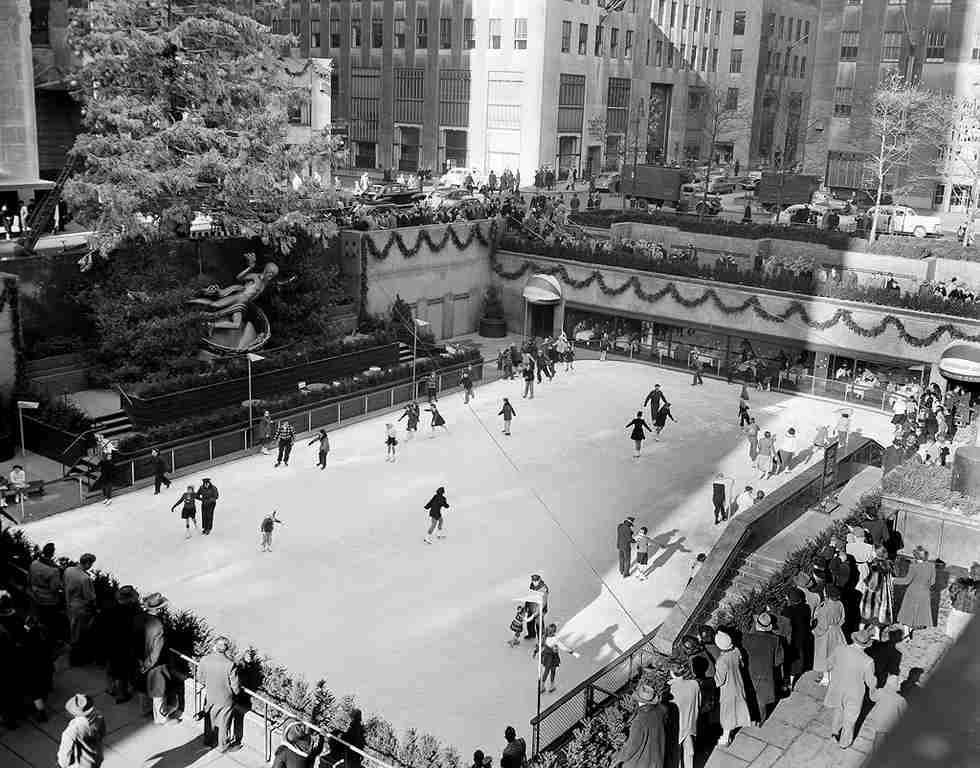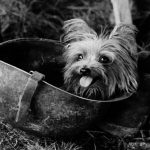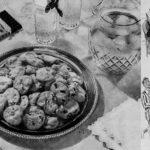The 1940s were a transformative era for New York City, heavily impacted by World War II and its aftermath. This decade saw profound social, economic, and cultural changes.
World War II significantly influenced daily life as many men went off to fight, and women took on new roles in factories and shipyards.
Rationing became a reality, with items like sugar, coffee, and gasoline being scarce. Victory gardens were common as residents grew their own vegetables.
The war’s end in 1945 brought relief and celebration. Soldiers returned, leading to a baby boom, rising marriage rates, and increased housing demand as families reunited and looked toward the future.
The wartime and postwar life of NYC
Iconic locations and landmarks
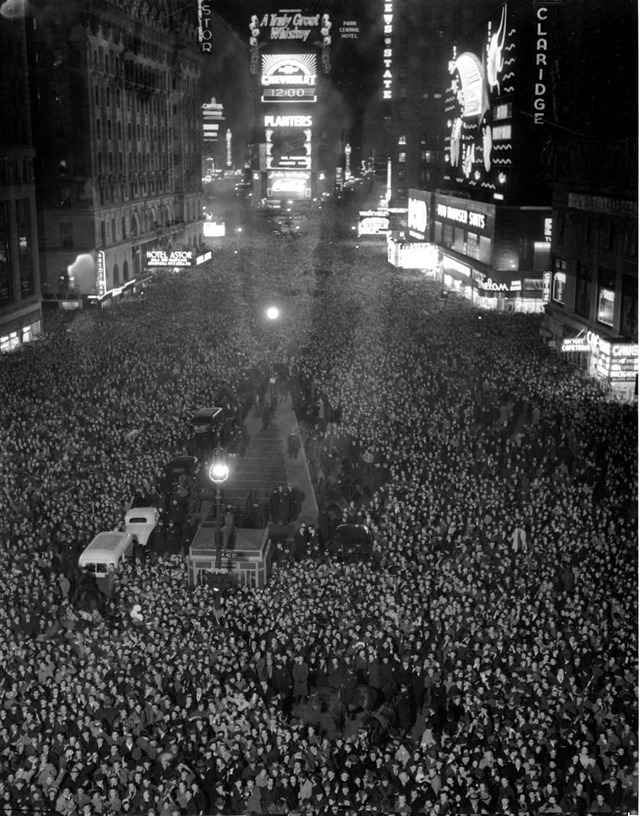
In the 1940s, Times Square remained the bustling heart of New York City, known as the “Crossroads of the World.” It was filled with theaters, neon lights, and crowds.
Broadway thrived, with musicals like “Oklahoma!” premiering in 1943 and becoming massive hits.
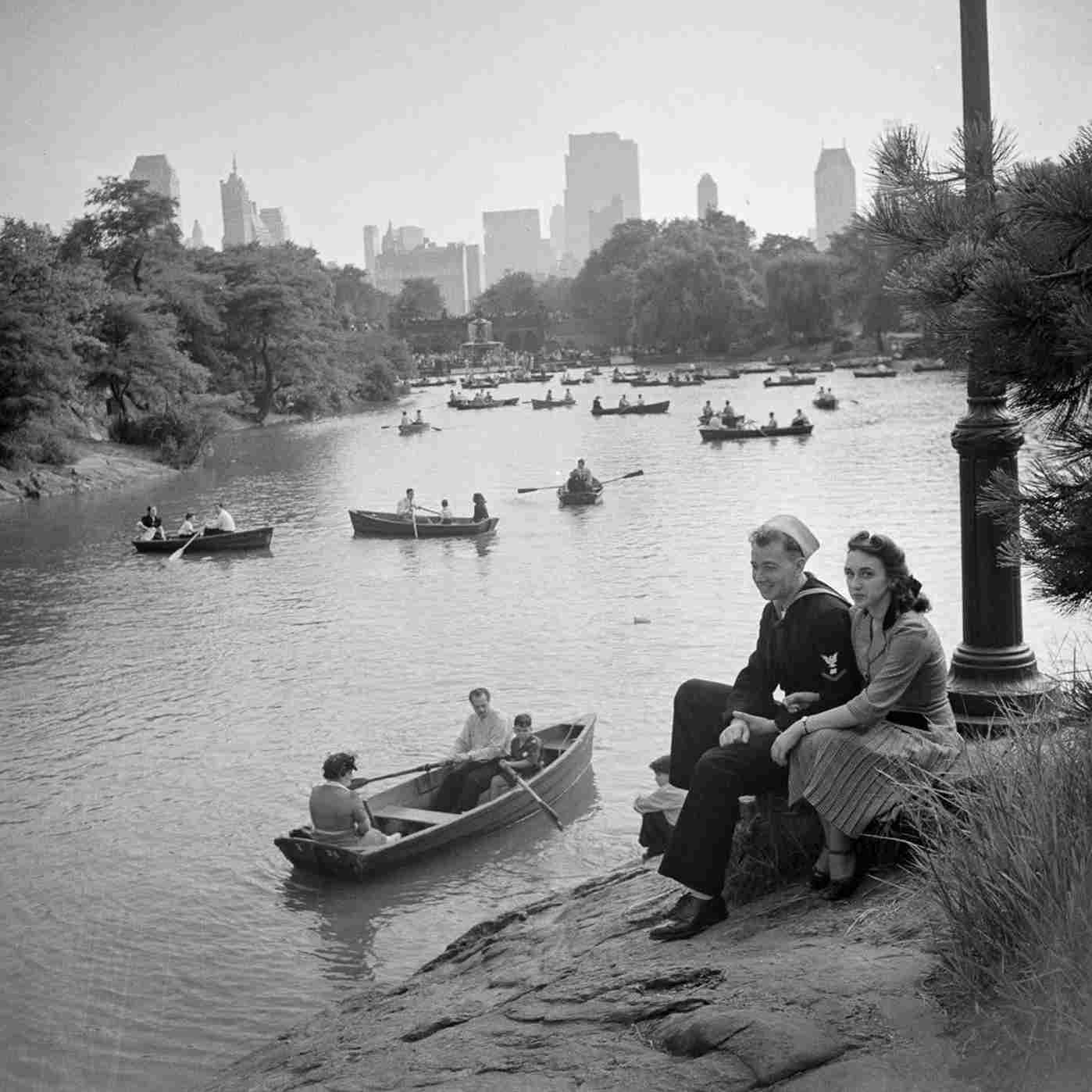
The United Nations Headquarters, which began construction in 1947, added an international dimension to the city. Located in Turtle Bay, it made New York a center for global diplomacy.
Central Park continued to be a beloved retreat for New Yorkers, offering leisure and recreation despite wartime constraints. Families enjoyed picnics, boating, and ice skating.
Economic growth and industry
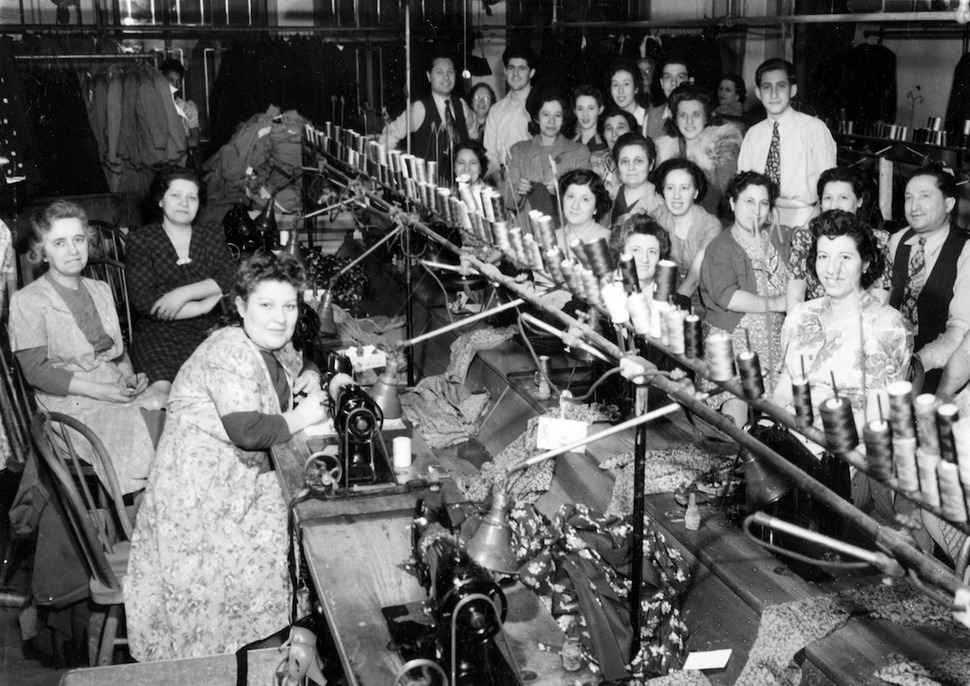
The economy of New York City in the 1940s was heavily influenced by the war. Industries vital to the war effort produced everything from uniforms to munitions. This industrial boom helped pull the city out of the Great Depression.
Post-war, New York City experienced an economic boom, becoming a hub for finance, media, and culture. Wall Street grew significantly, and the stock market began to recover.
The garment industry continued to thrive, with the city remaining the center of the American fashion industry.
Building and infrastructure

The 1940s saw considerable construction and infrastructure development in New York City. Major projects like the Triborough Bridge and the Lincoln Tunnel facilitated improved transportation and commerce.
The New York City Housing Authority (NYCHA) built several large housing developments to address the post-war housing shortage, providing affordable housing for many returning veterans and their families.
The subway system expanded, with new lines and stations improving access across the city.
Restaurants and food
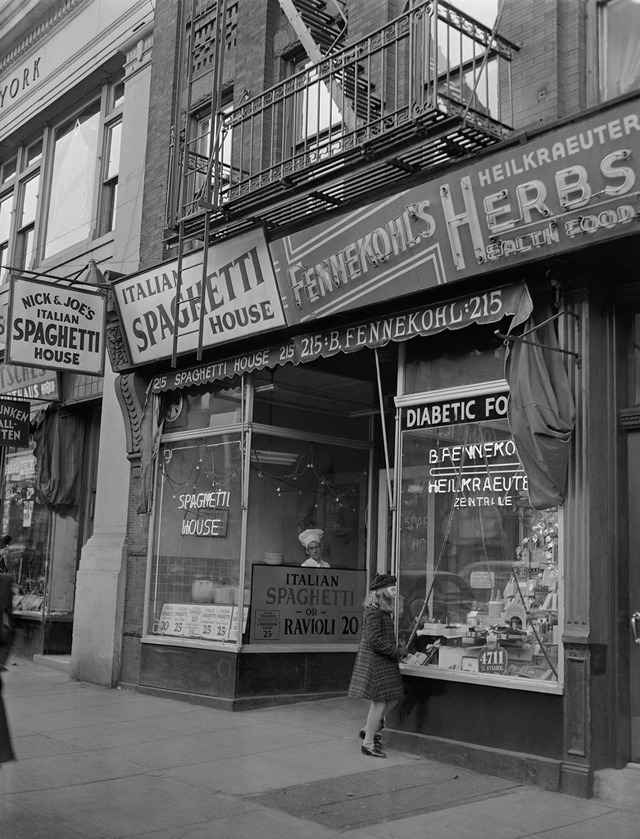
Dining in New York City during the 1940s reflected wartime challenges and innovations. Rationing affected ingredient availability, but restaurants adapted with creative menus.
Delis and diners were popular, offering hearty, affordable meals. High-end restaurants like The Stork Club maintained their elite status.
Street food remained a staple, with hot dog vendors and pretzel carts providing quick, inexpensive meals for busy New Yorkers. Nathan’s Famous in Coney Island continued to be a favorite spot.
Entertainment and activities
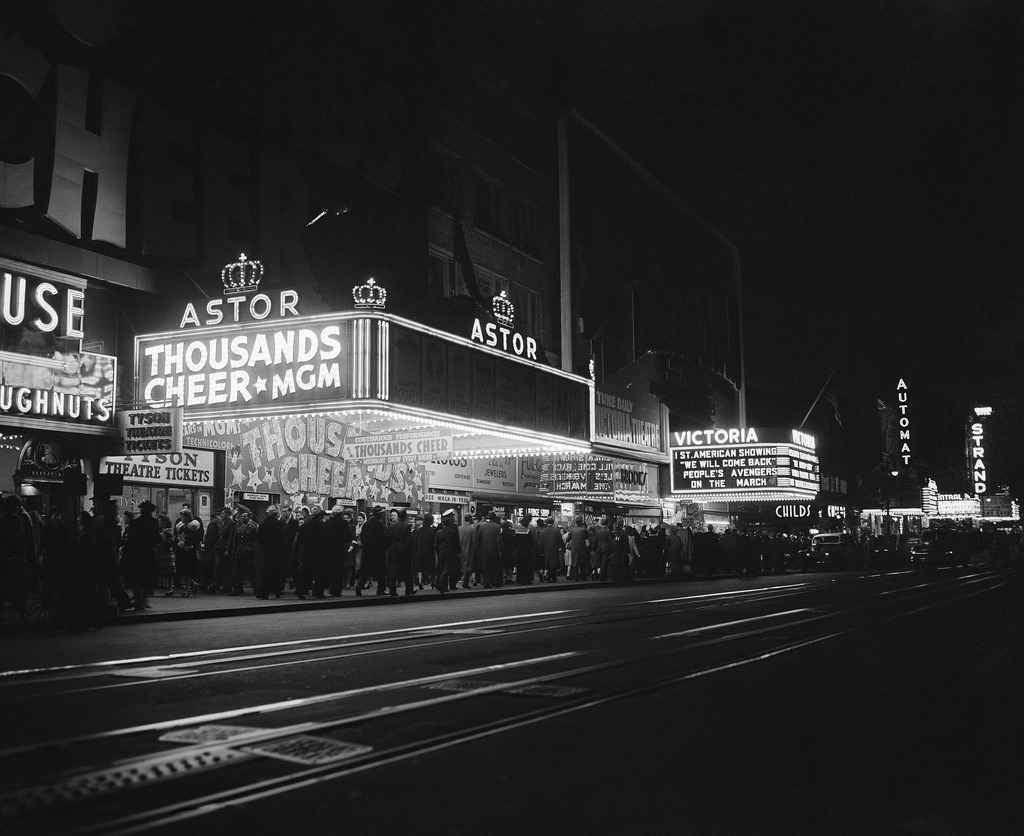
Entertainment was crucial in 1940s New York City. Broadway was at its peak, with iconic productions like “Oklahoma!” and “South Pacific.” Radio provided news, music, and popular shows, while Radio City Music Hall offered movies and stage shows.
Jazz thrived in nightclubs and bars, with Harlem’s Apollo Theater showcasing legends like Billie Holiday. Movies were incredibly popular, with classic films like “Casablanca” drawing crowds to grand theaters like the Roxy Theatre.
Social changes and reforms

World War II had a profound impact on social dynamics in New York City. Women took on new roles in the workforce, and African Americans migrated in search of better opportunities.
Labor unions gained strength, advocating for better wages and working conditions.
The return of soldiers after the war led to a housing shortage. New public housing projects and suburban developments emerged to meet demand. The development of suburban areas also began as families moved out of crowded urban neighborhoods.
Health and public services
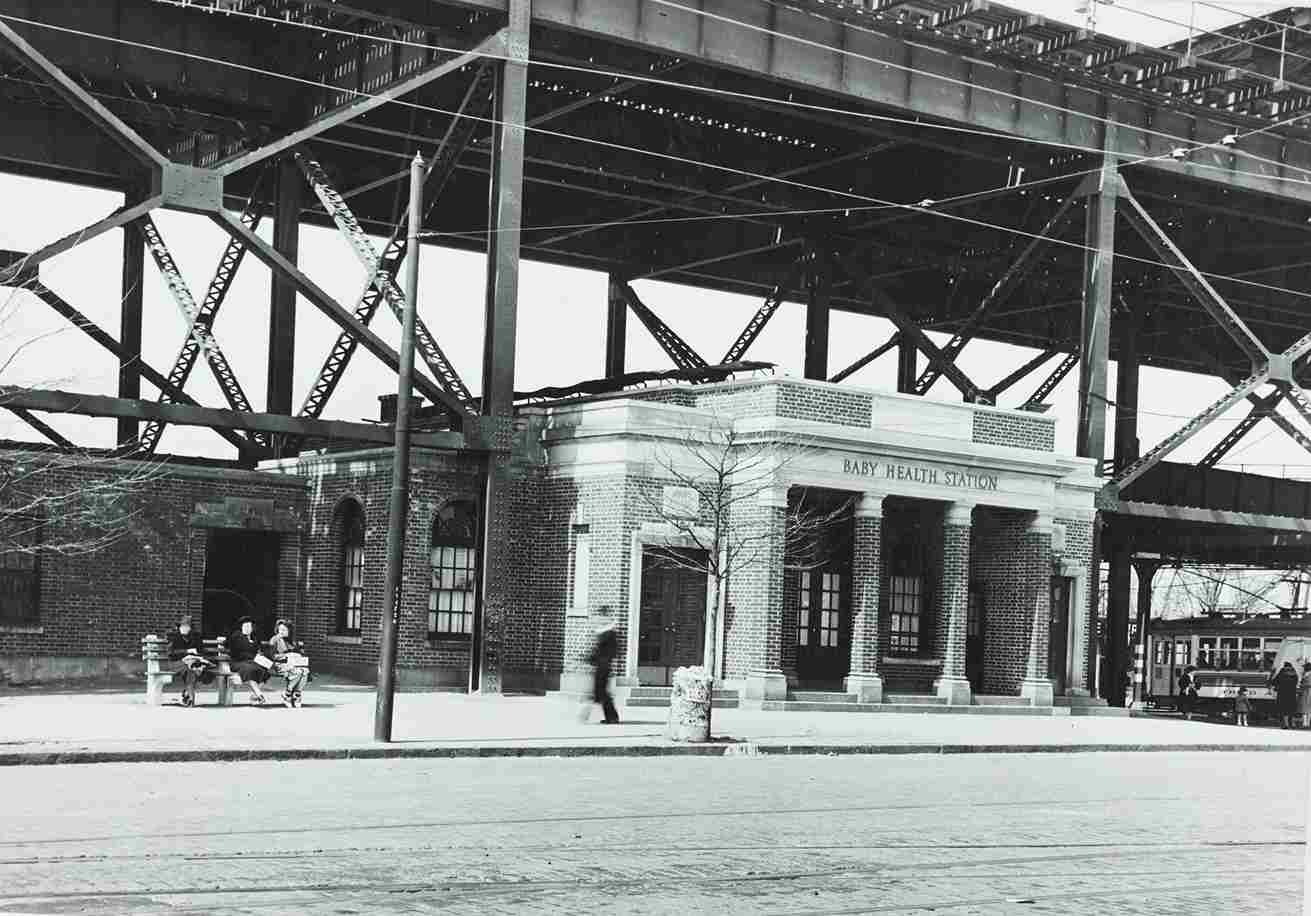
Public health improved during the 1940s as efforts to fight diseases like tuberculosis and influenza led to better sanitation and health measures. Public hospitals and clinics provided more access to medical care.
Fire and police services expanded with modernized equipment and training.
Education was a priority, with public schools and higher education institutions like Columbia University and NYU expanding. These institutions played a crucial role in the city’s intellectual and cultural life.
Fashion trends and lifestyle
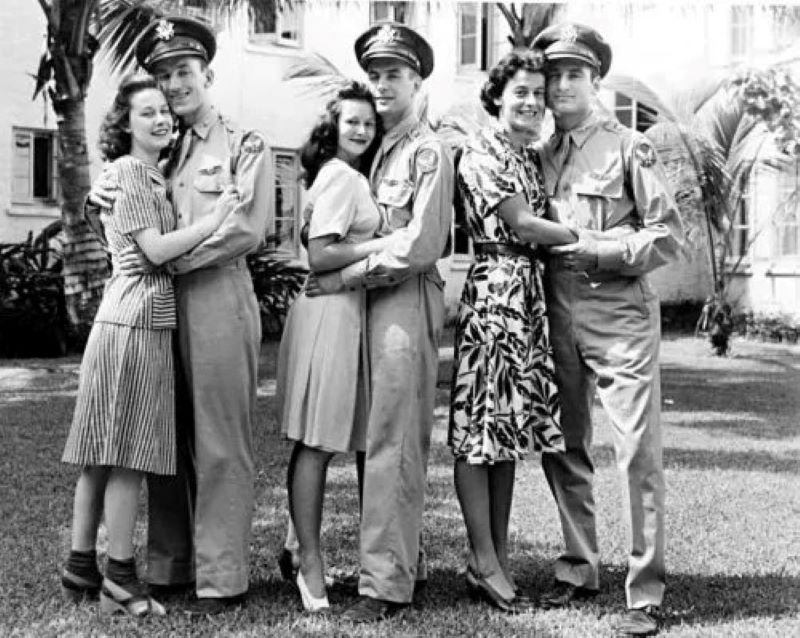
Fashion in the 1940s was influenced by the war, with practical and functional clothing.
Post-war fashion saw a return to elegance, with Christian Dior’s “New Look” featuring full skirts and a cinched waist. Men’s fashion reflected wartime practicality, but post-war styles became more relaxed.
The lifestyle of New Yorkers was characterized by wartime austerity and post-war optimism, with social activities and cultural pursuits providing diversions from the era’s challenges.
Amazing old photos showing everyday life in 1940s New York City
1. Pedestrian and street traffic in Times Square, Manhattan, Spring 1940
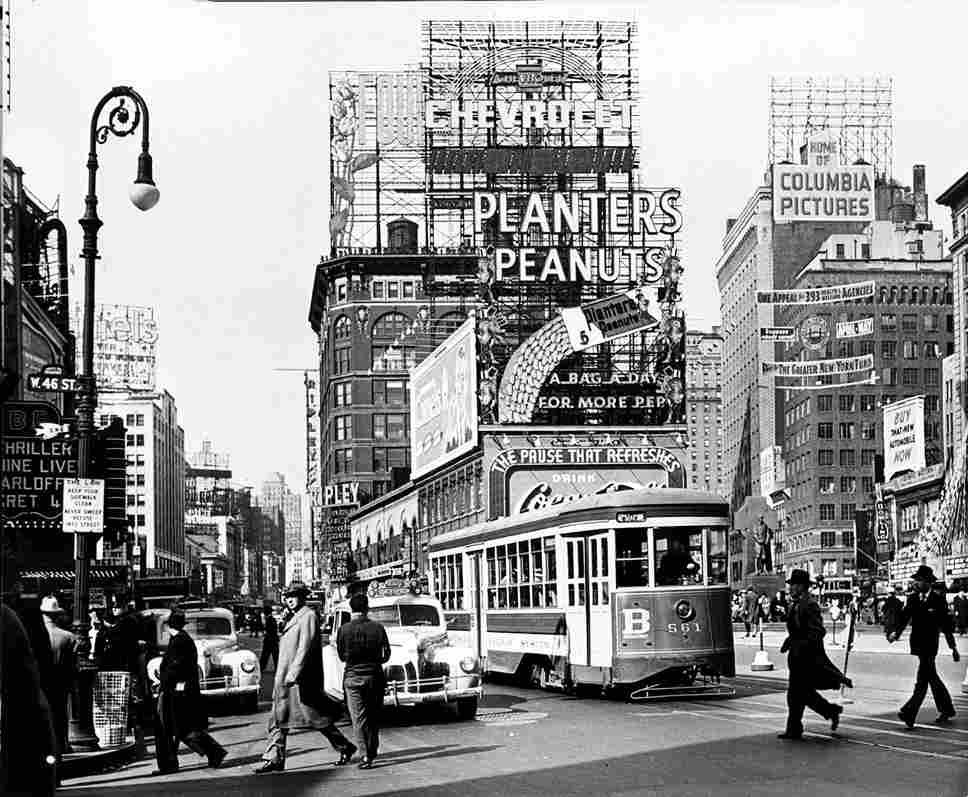
2. Elevated View Along Broadway with Chrysler Building in the Background, Manhattan, 1940
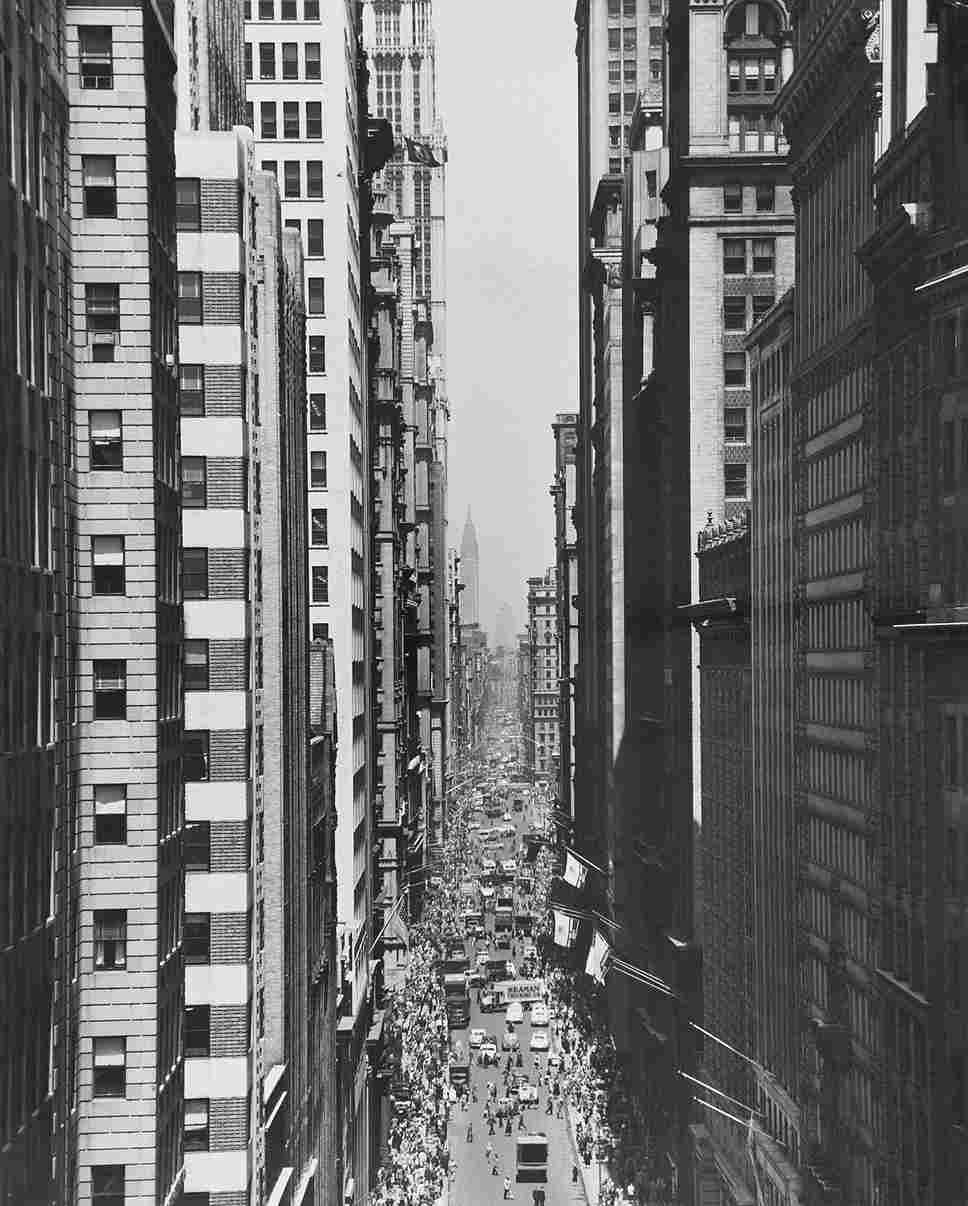
3. Night Lights at Steeplechase Park, Coney Island, 1940s
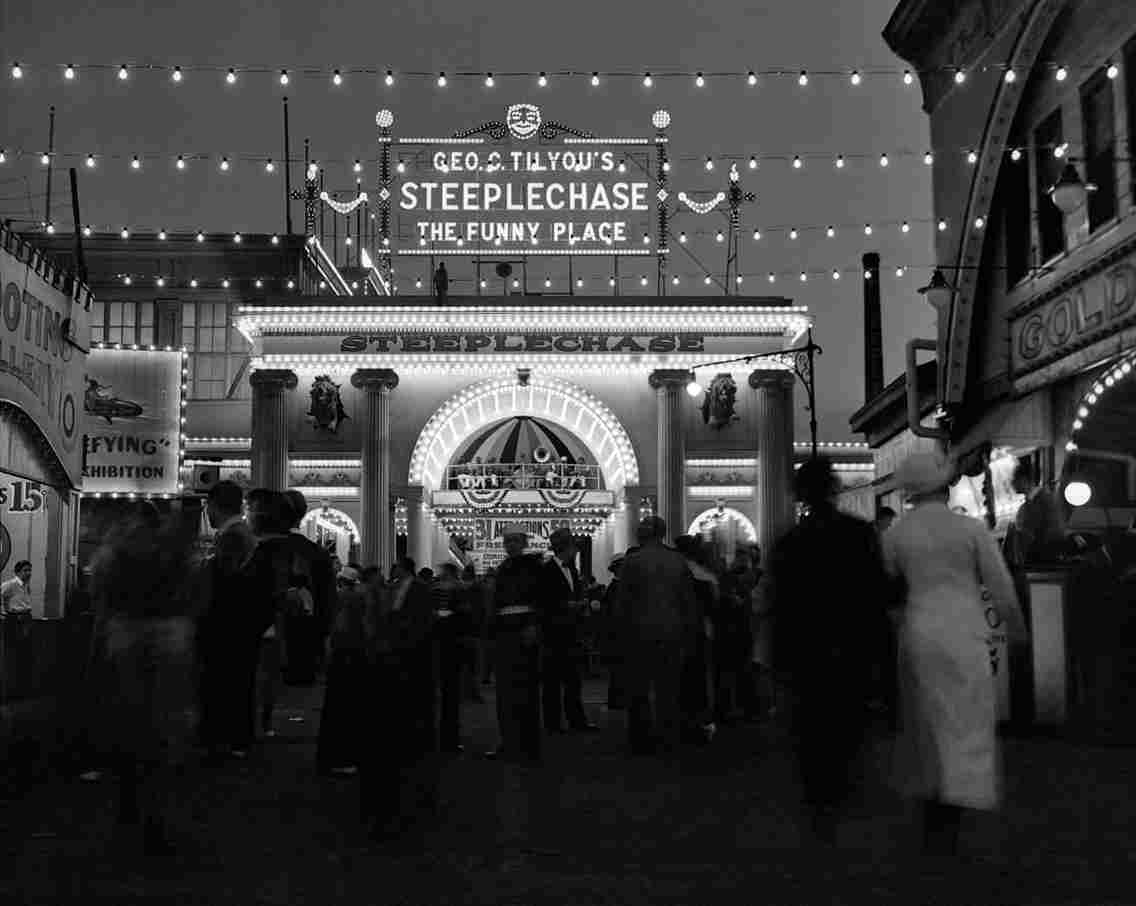
4. East River and Financial District View from Brooklyn, 1940s

5. Uncle Sam balloon used in the Macy’s Thanksgiving Day Parade during the 1940s; the parade will air without in-person spectators due to COVID-19, 1940

6. Bar located at 3 Victory Boulevard, circa 1940
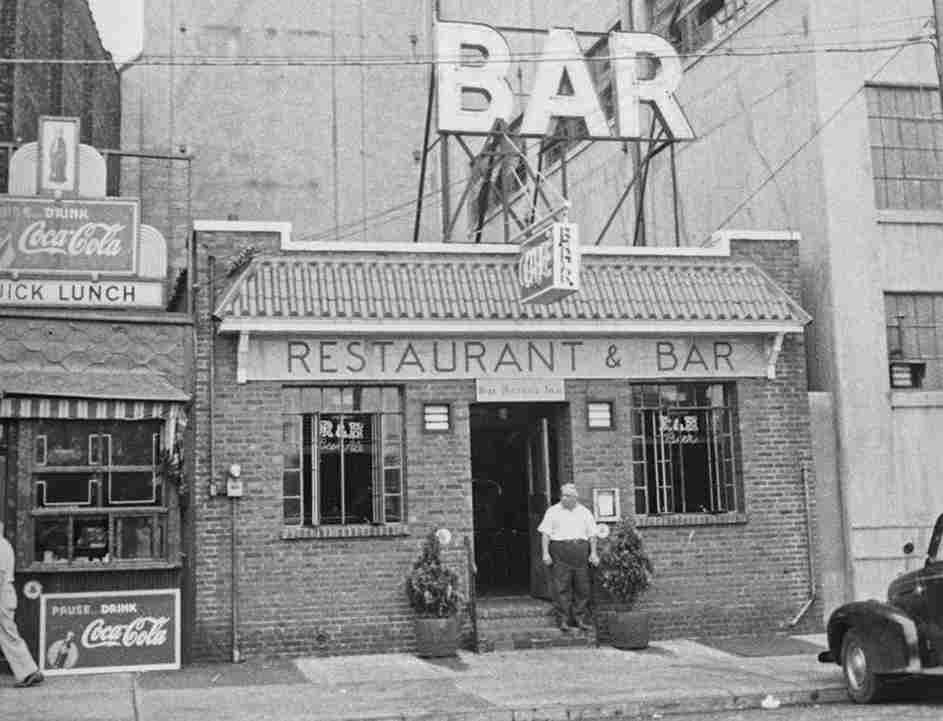
7. 82nd Street and Roosevelt Avenue, Queens, 1940s
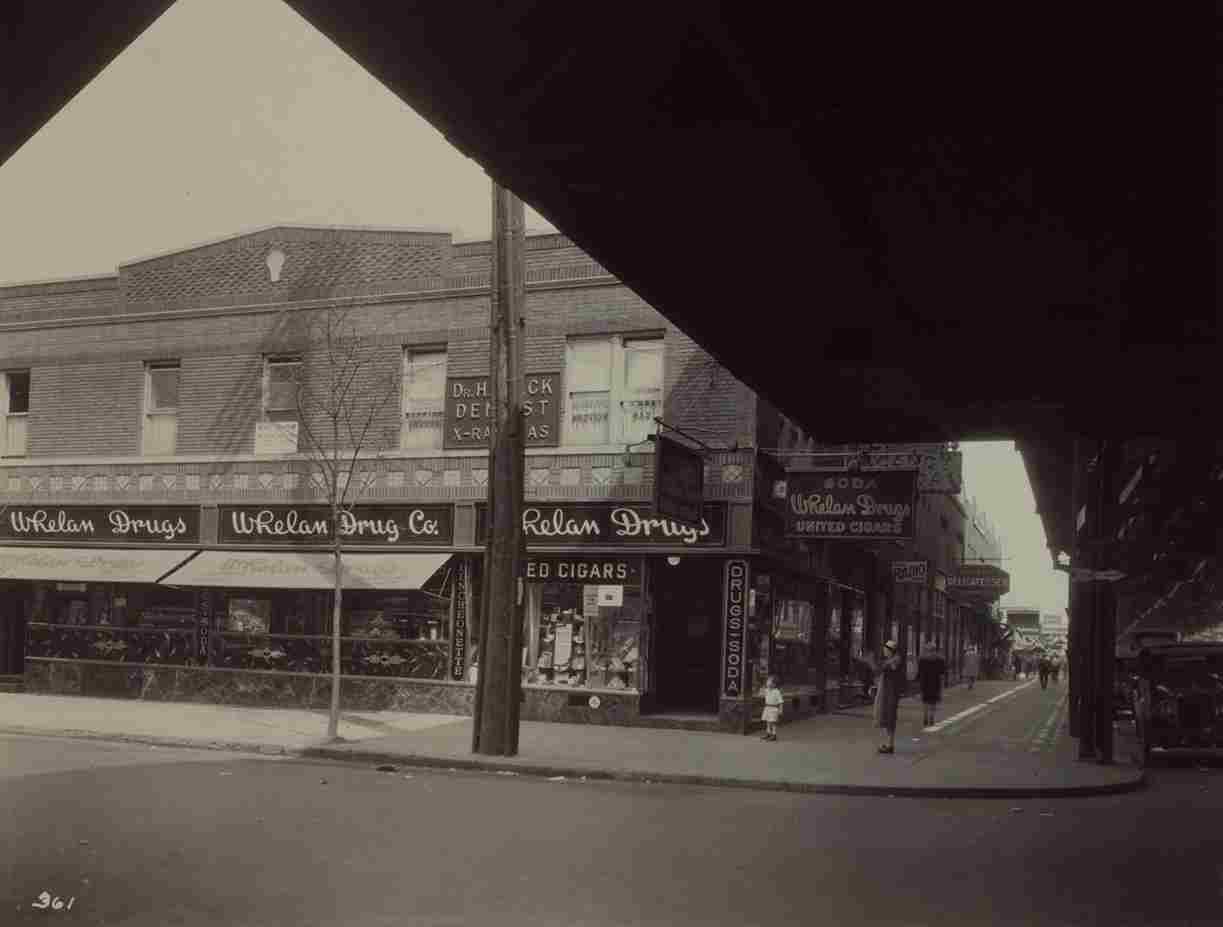
8. Alexander’s Department Store at the shopping center junction of Fordham Road in the Bronx, 1940s
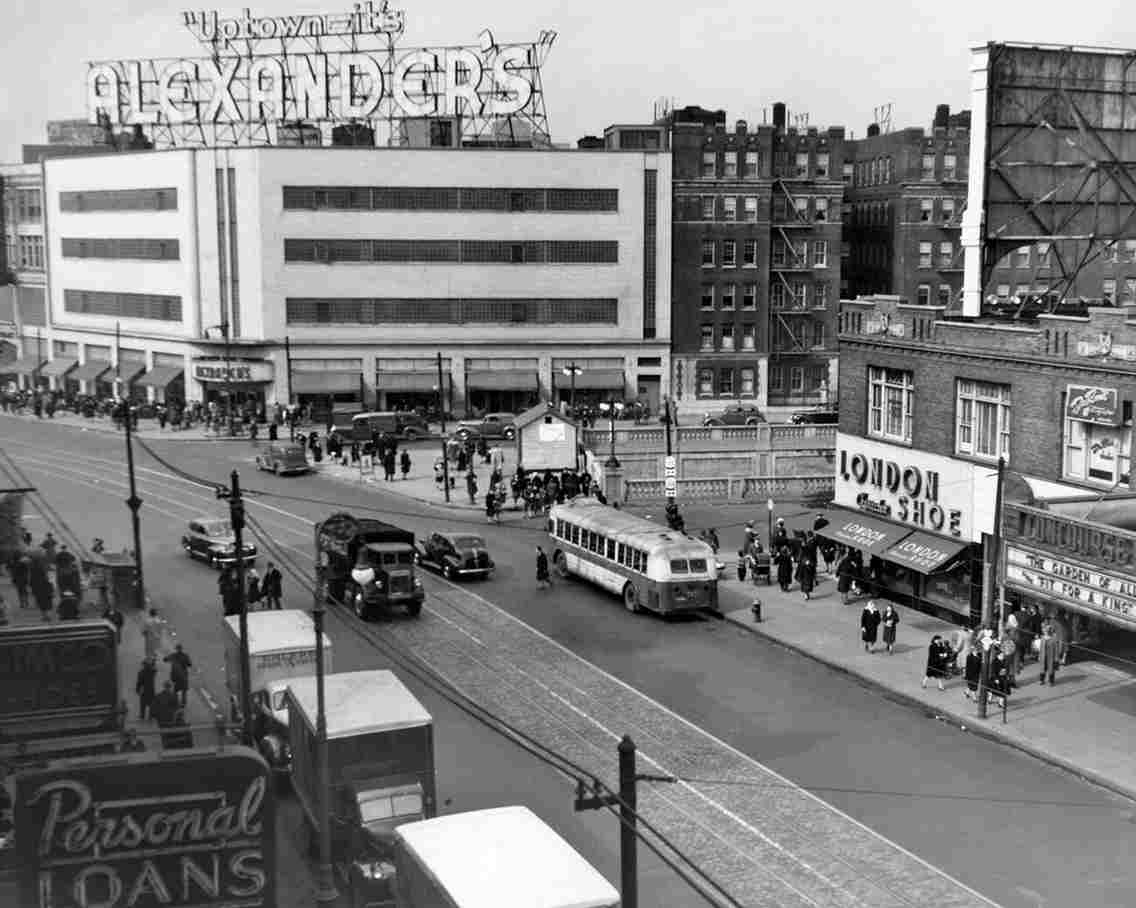
9. Manhattan Skyline and Welfare Island, Midtown, Manhattan, 1940s
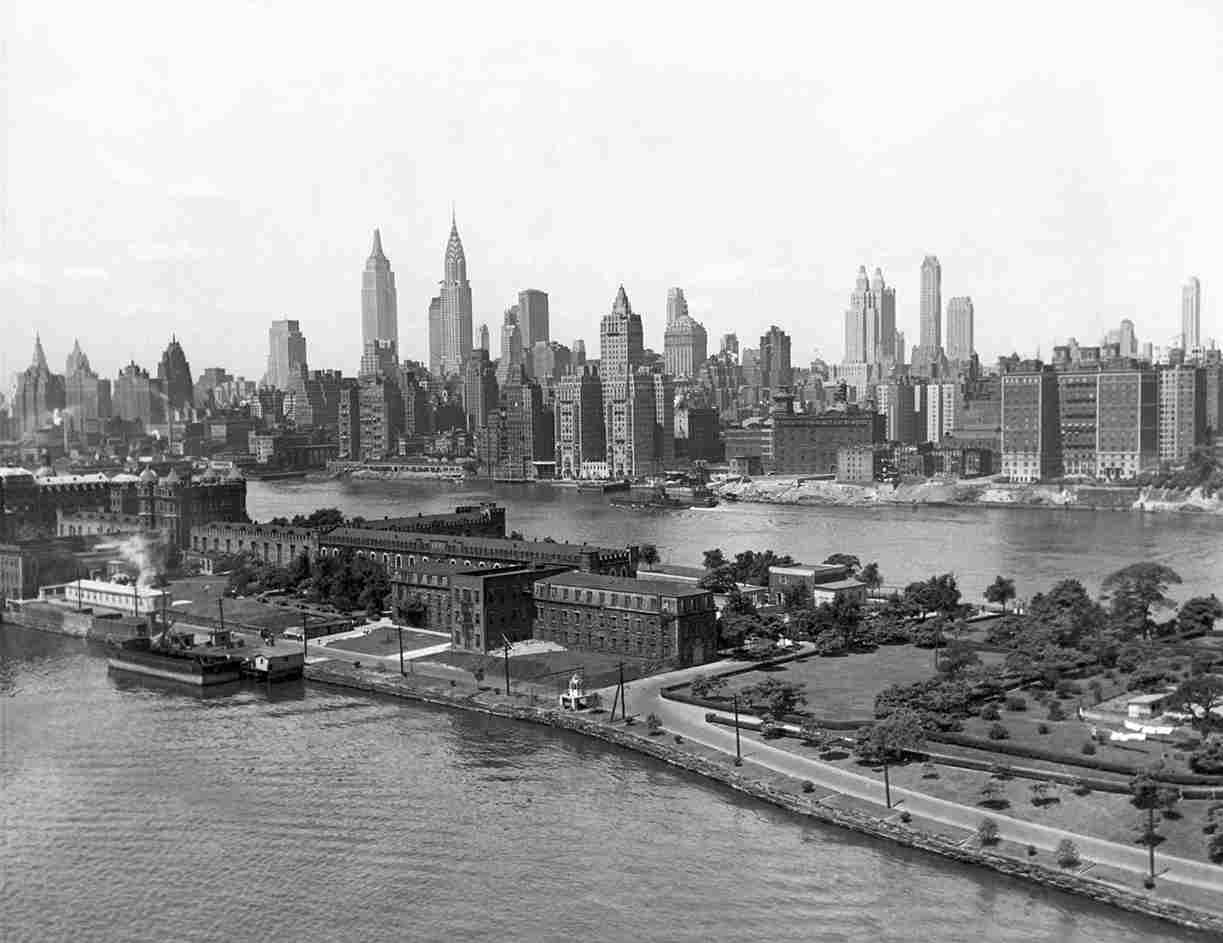
10. Woodside station, Queens, 1940s
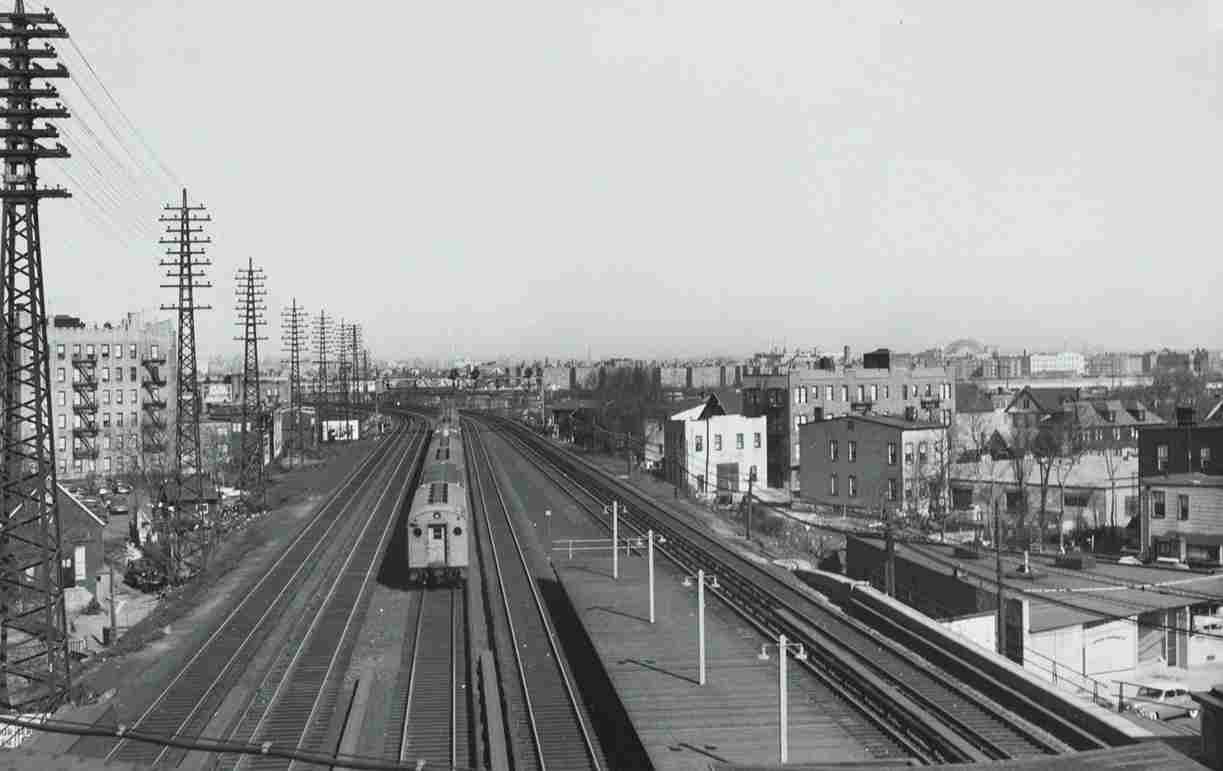
11. Exterior of Brooklyn Headquarters at Bergen Street Police Station, Thefts of Over 7,200 Documents, 1940
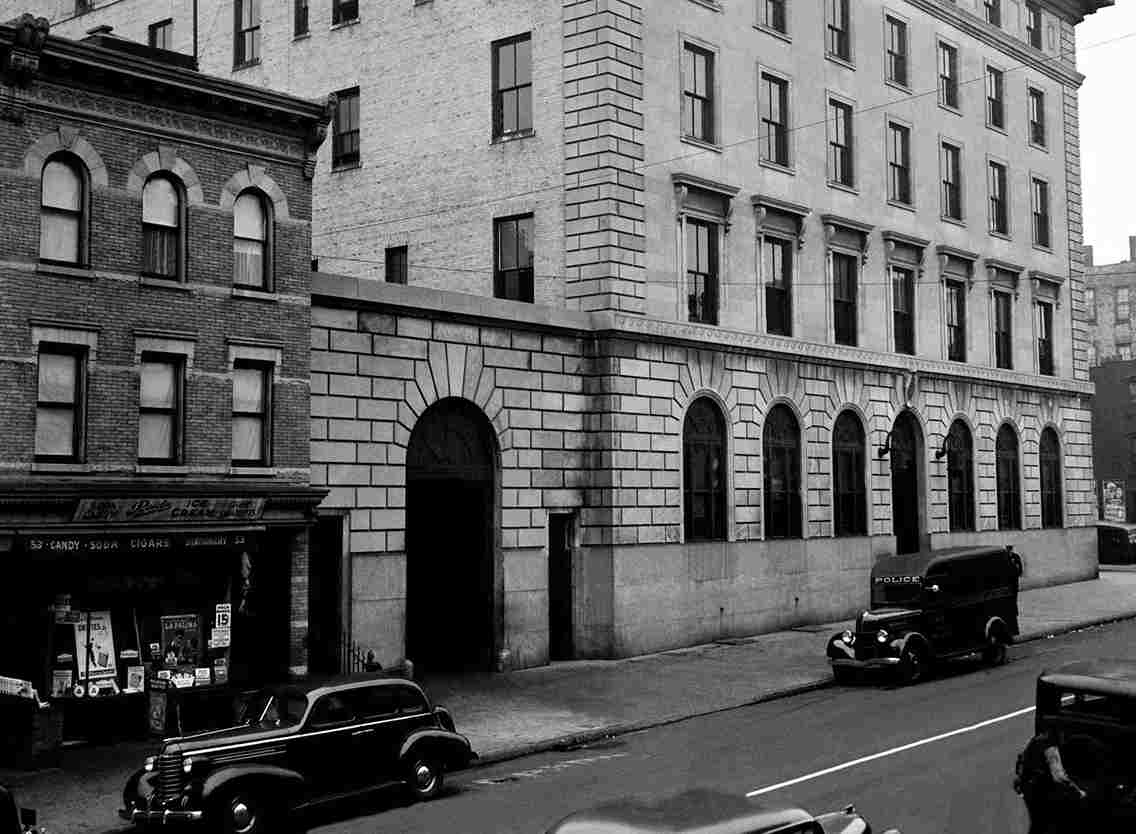
12. Berger’s Hardware Company Store at 574 Ninth Avenue, Manhattan, 1940
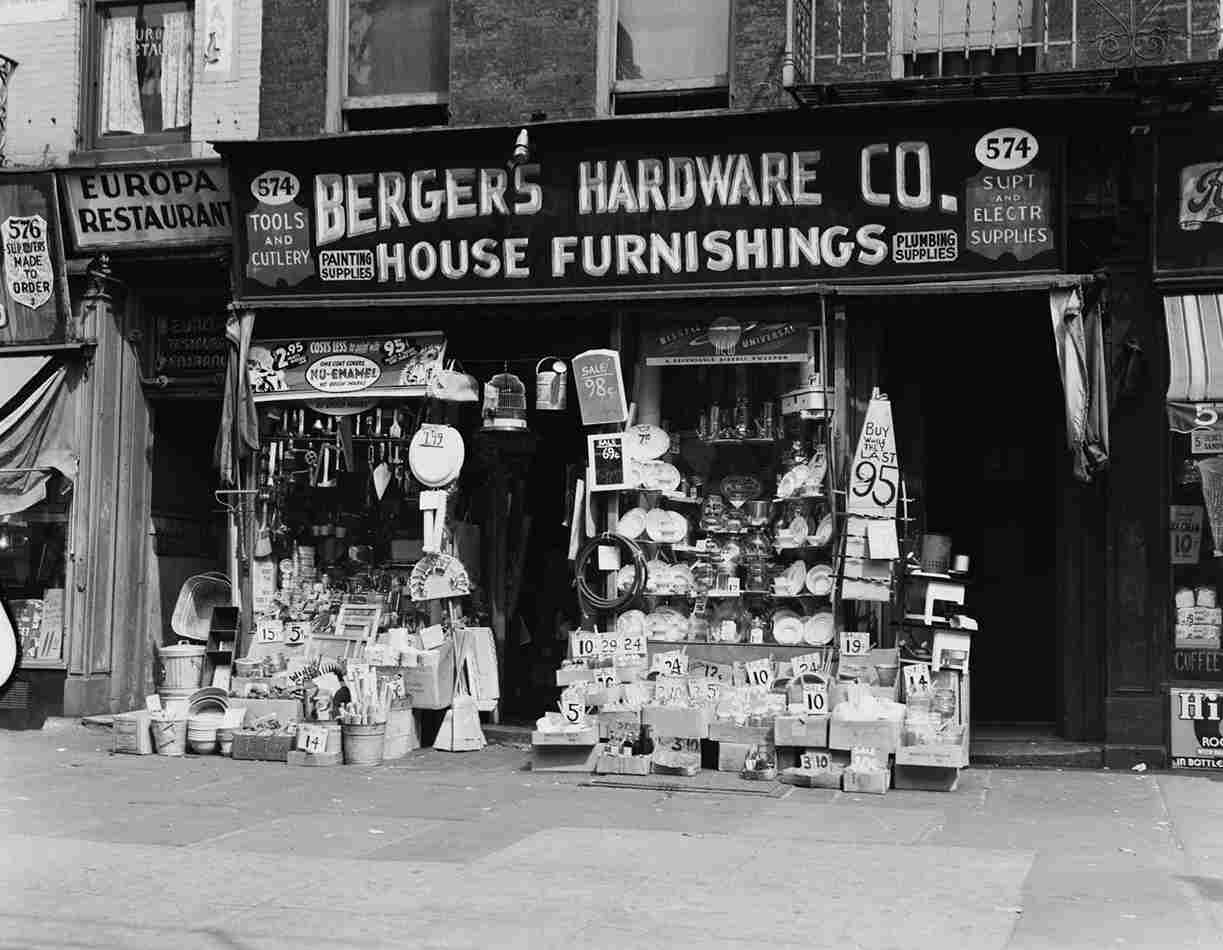
13. Fish and Seafood Loaded into Trucks at the Fulton Fish Market for Delivery to Retail Stores, Manhattan, 1946
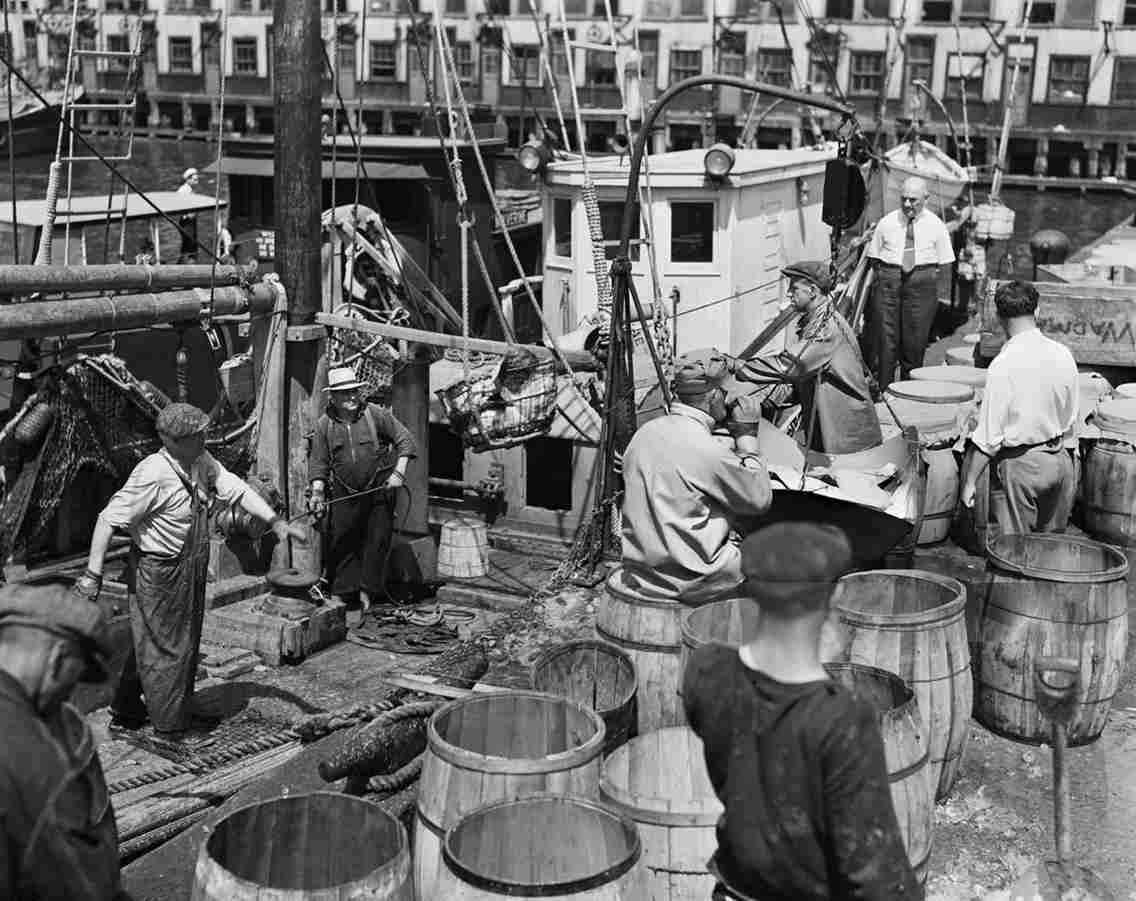
14. New York City Sidewalk Crowd in Front of Alexander’s Hardware Store, Manhattan, 1940s
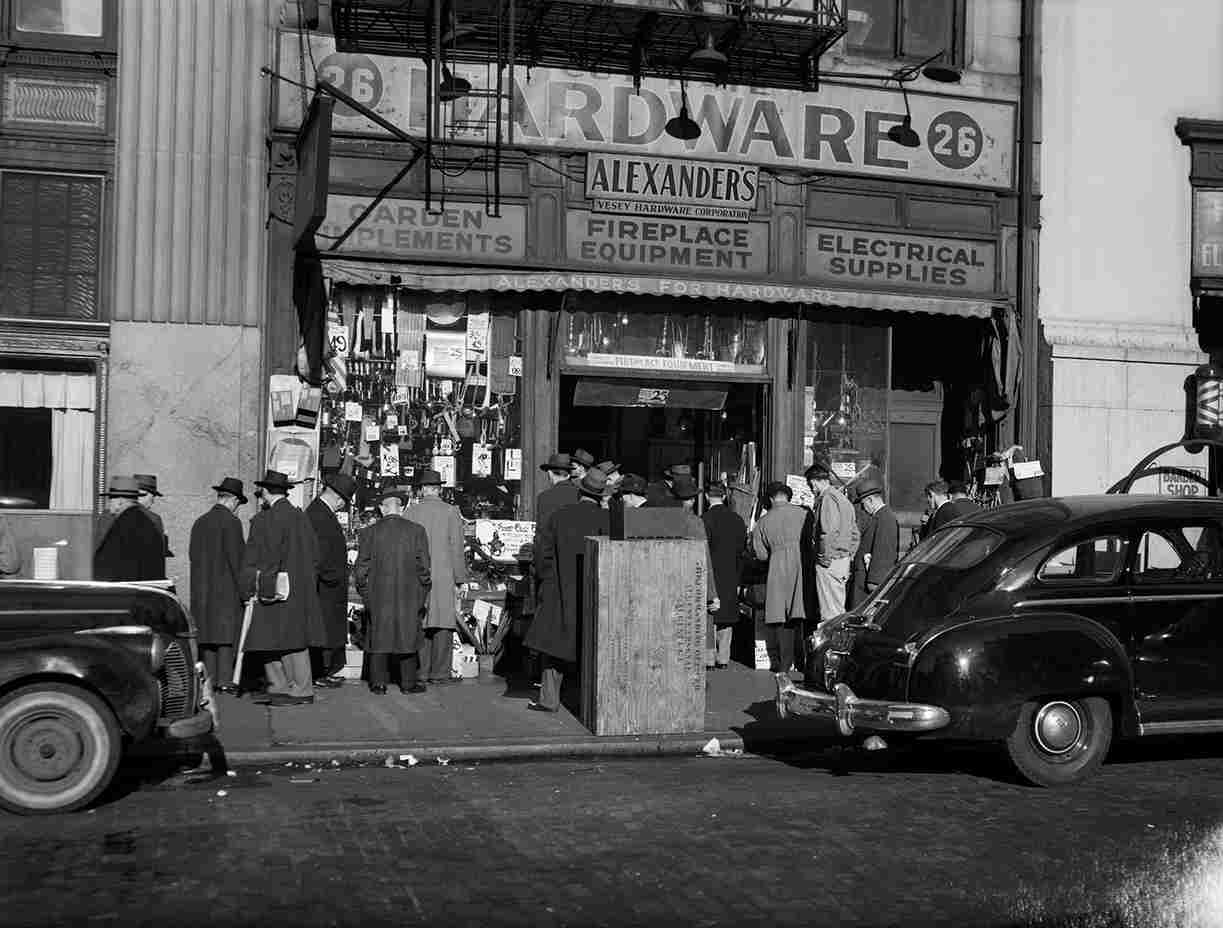
15. Night view of Fordham Road, the main shopping and entertainment area in the Bronx, 1940s 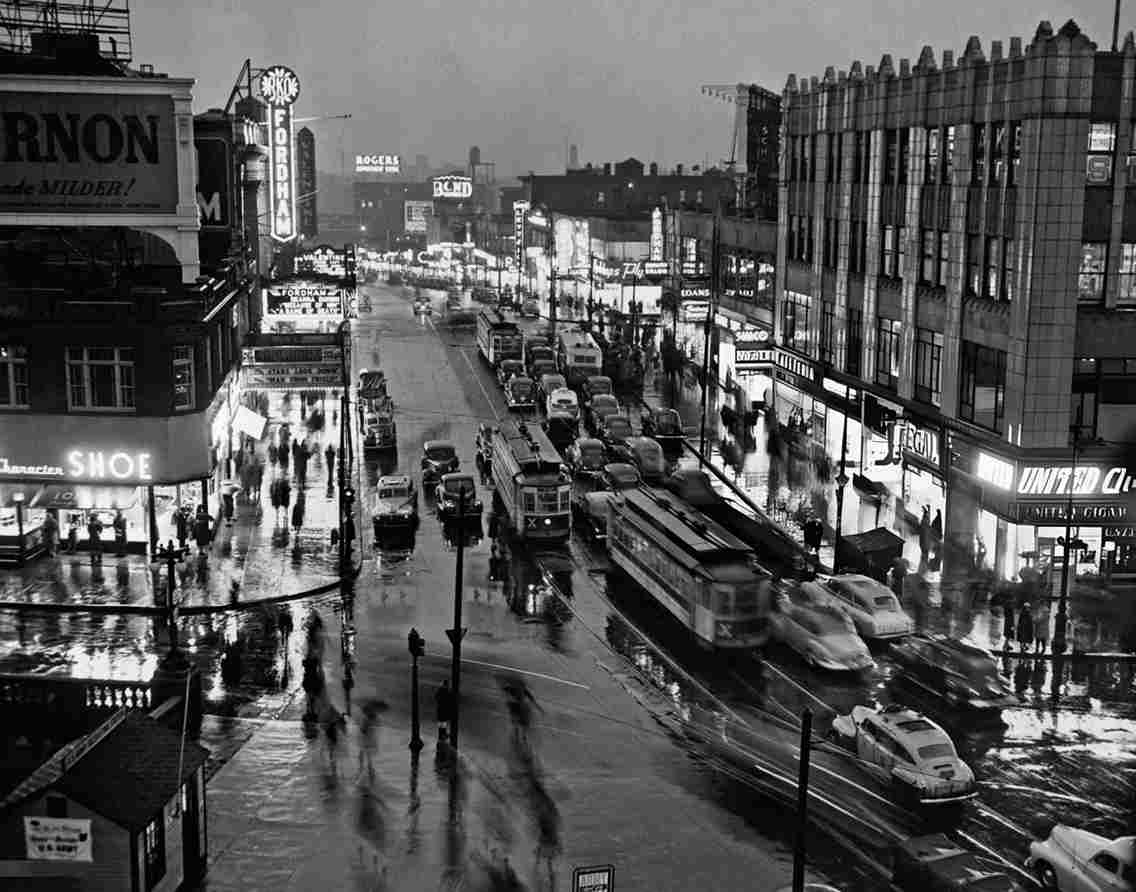
16. Heavy car taxi traffic looking North up Park Avenue to Grand Central Station and 230 Park Avenue, Manhattan, 1940s
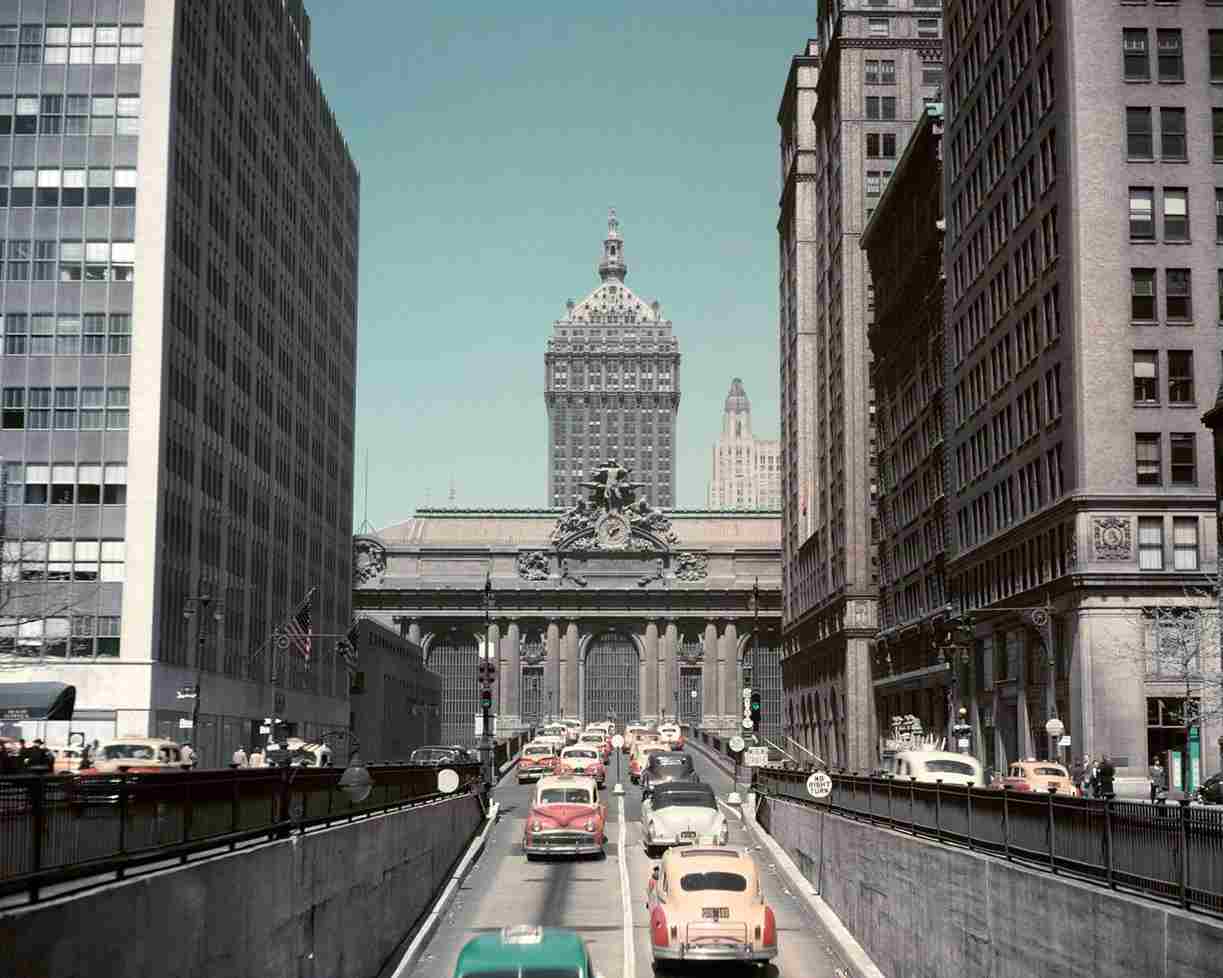
17. A baseball game between the Yankees and Washington Senators at Yankee Stadium, 1940

18. Pedestrians, Cars, Taxis, Buses, Trolley Traffic Fifth Avenue Looking North from Below 42nd Street, Manhattan, 1940s

19. Seventh Avenue, Manhattan, 1940
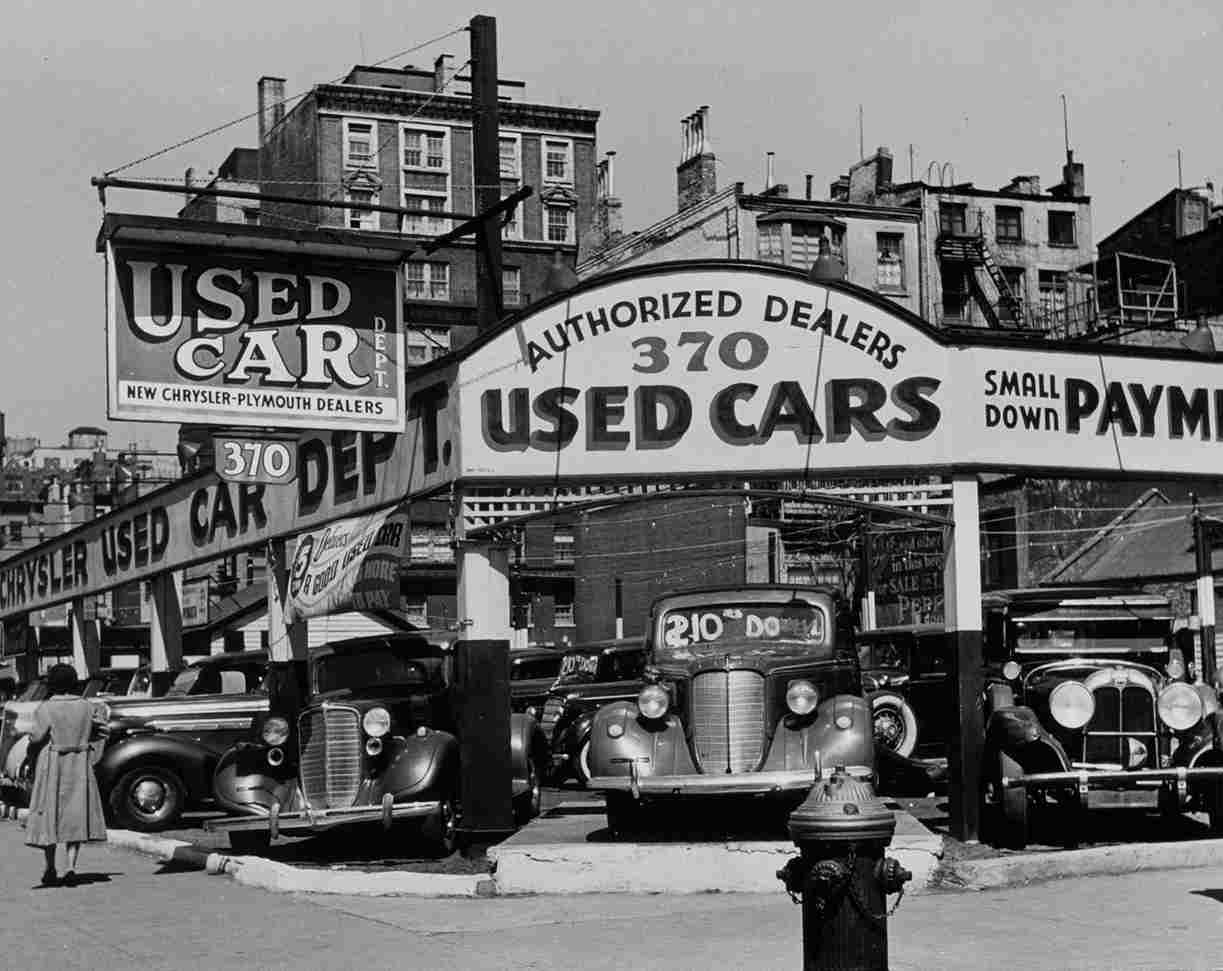
20. Looking up Fifth Avenue from Across the Front of the Public Library, Midtown, Manhattan, 1940s

21. Jamaica Town Hall, Queens, 1940s
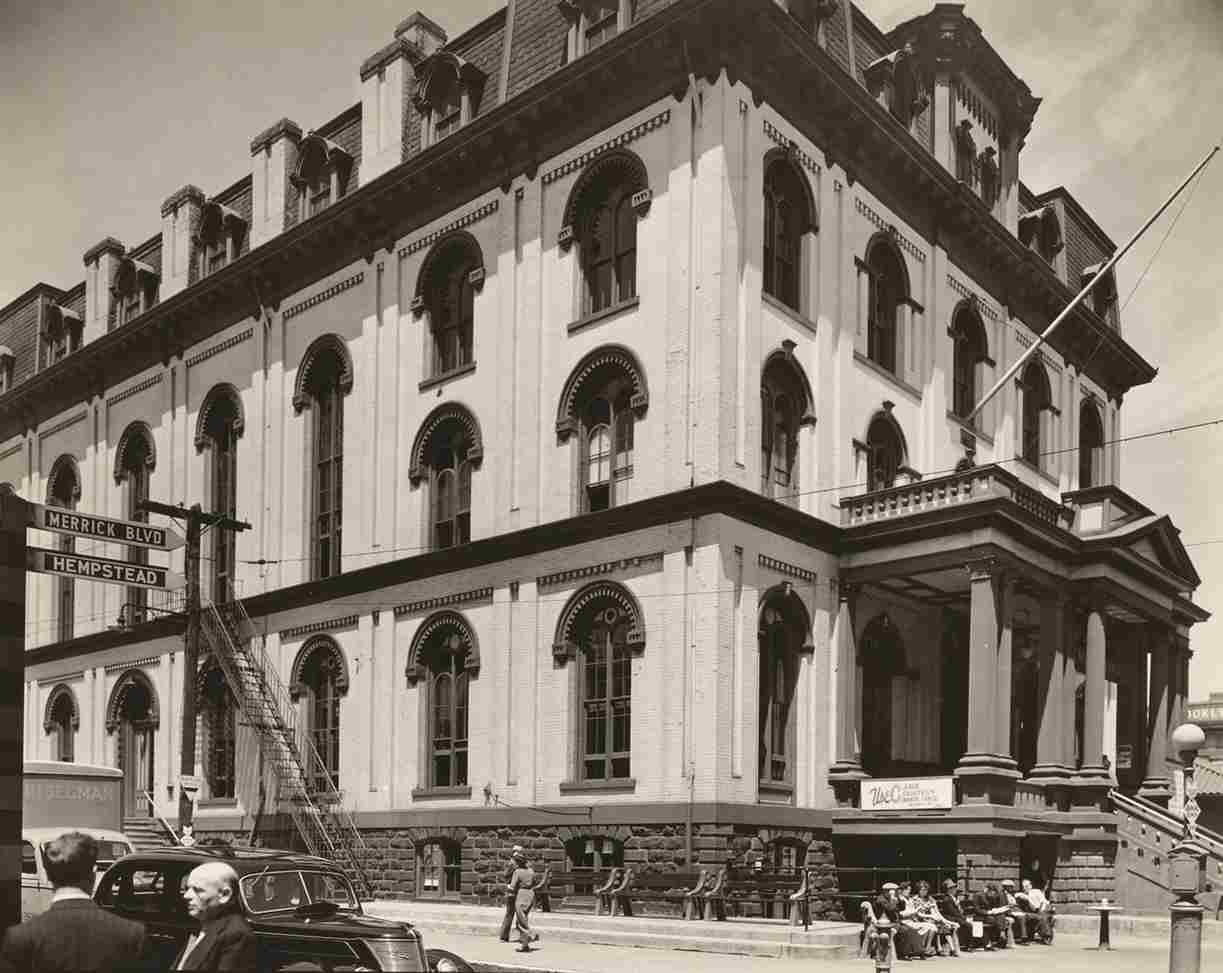
22. High-angle view of Parkchester housing development and ground-level stores in the Bronx, 1940s

23. Marquees of Apollo and Times Square Theaters in Midtown, Manhattan, Circa 1941
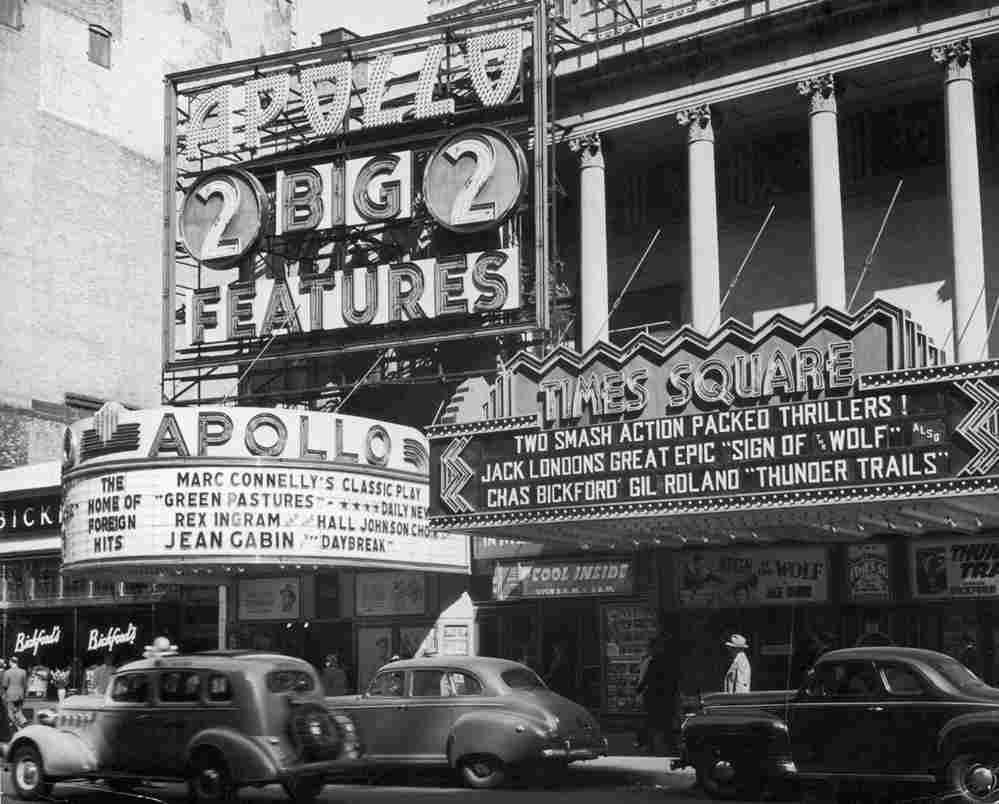
24. 42nd Street at Park Avenue, Two Days After Pearl Harbor Attacks, Manhattan, 1941
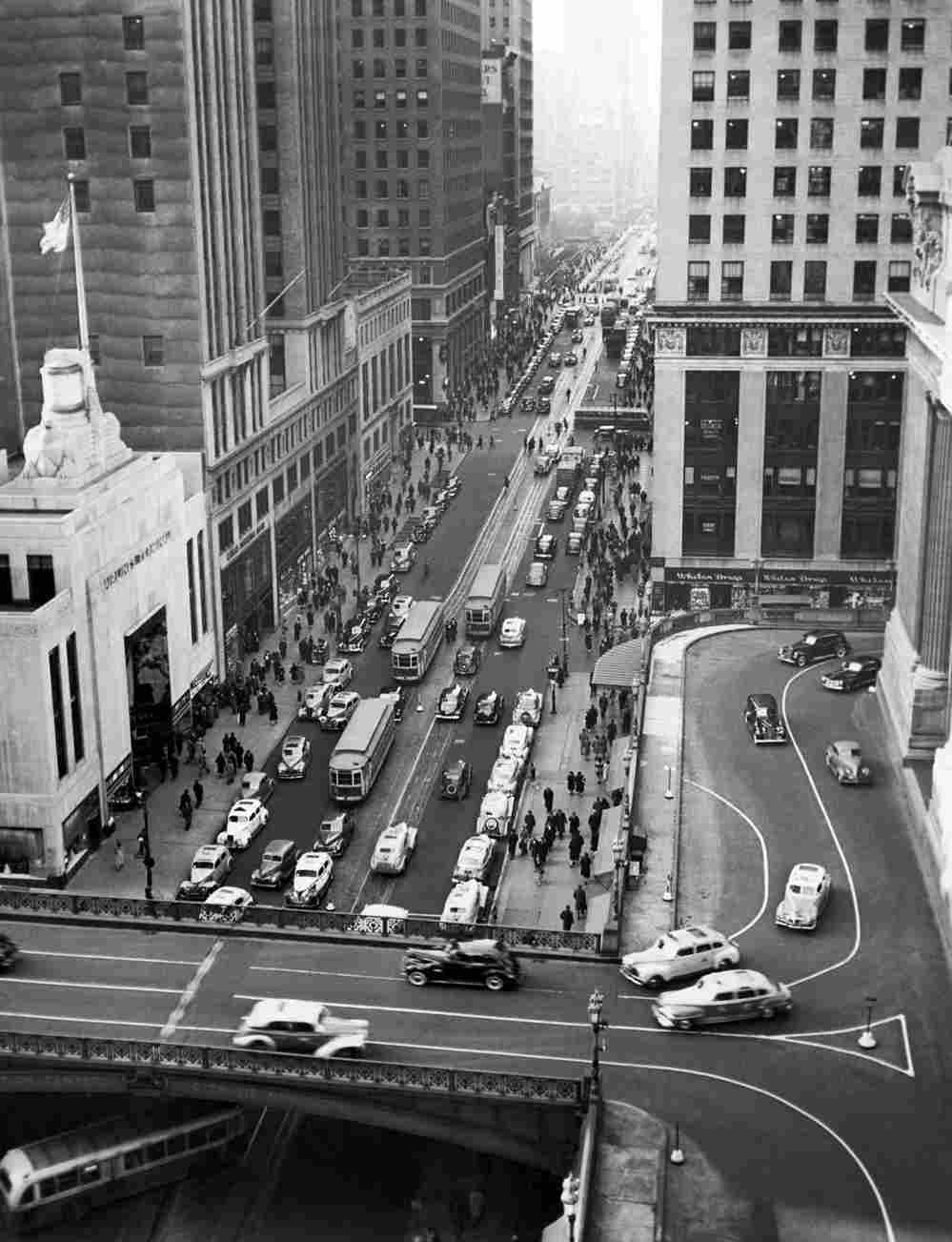
25. Brooklyn Dodgers Fans Celebrating Victory at Soldiers’ and Sailors’ Arch, Grand Army Plaza, 1941
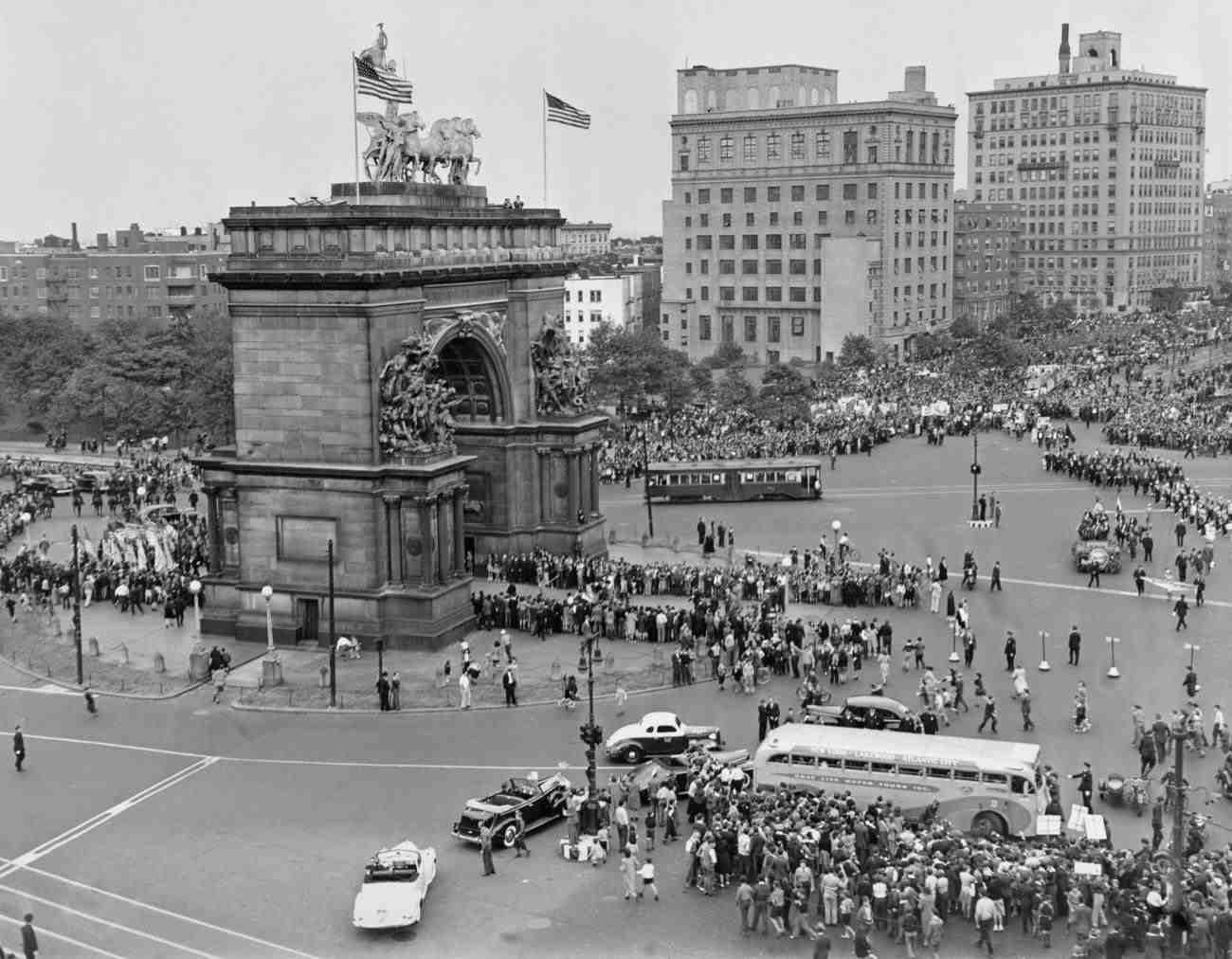
26. Brooklyn Public Library (Ingersoll Memorial), Prospect Park Plaza, 1941
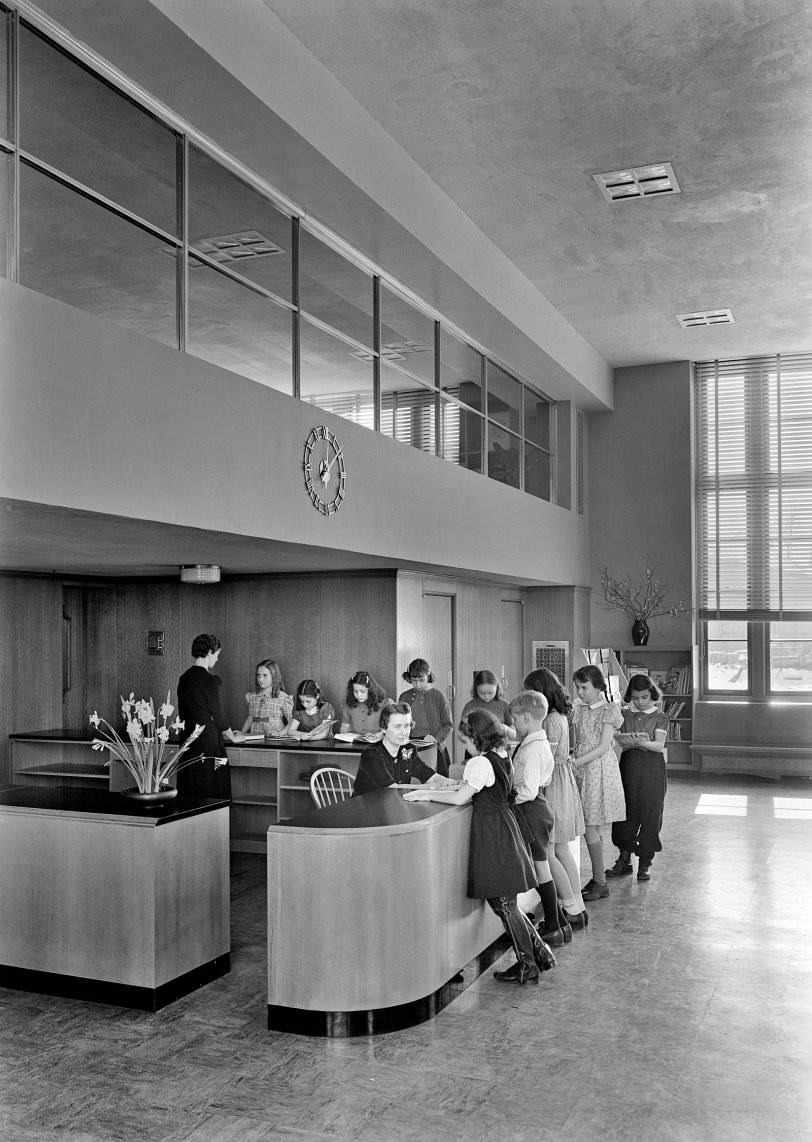
27. Students walk past Flynn Hall at Notre Dame College (now St. John’s University), Grymes Hill, 1941
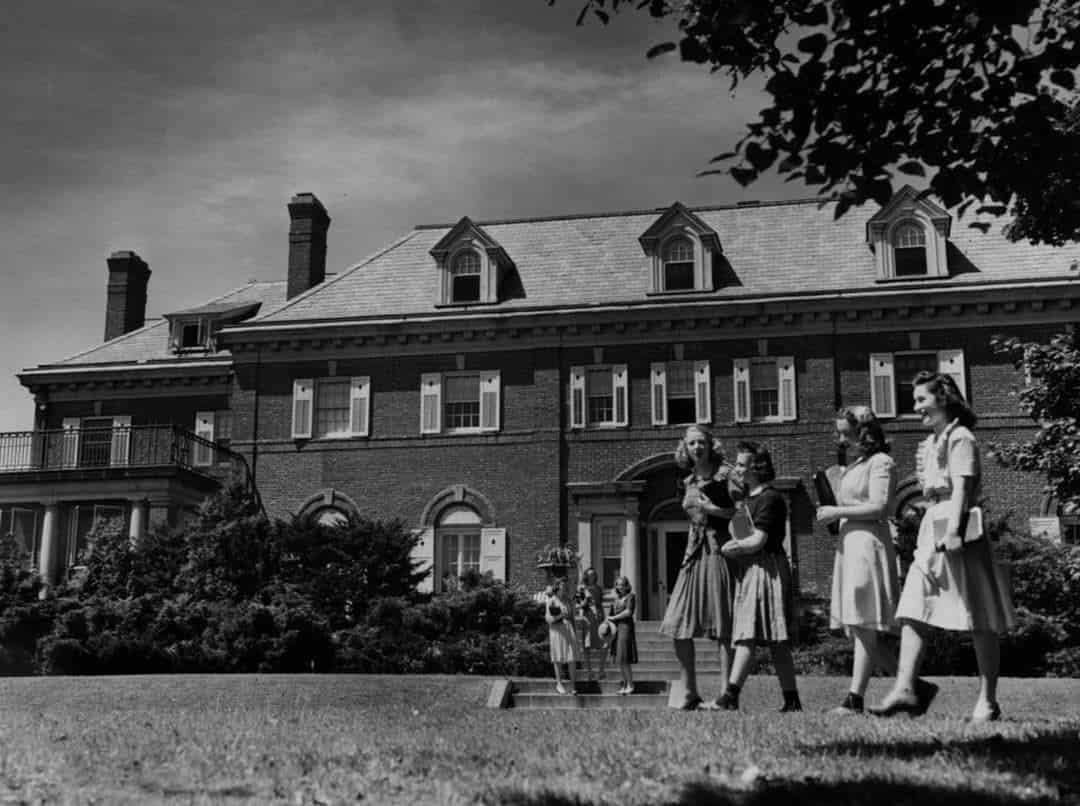
28. Rows of cars line the curb as a result of free parking over Labor Day weekend in New York City, Sept. 6, 1942
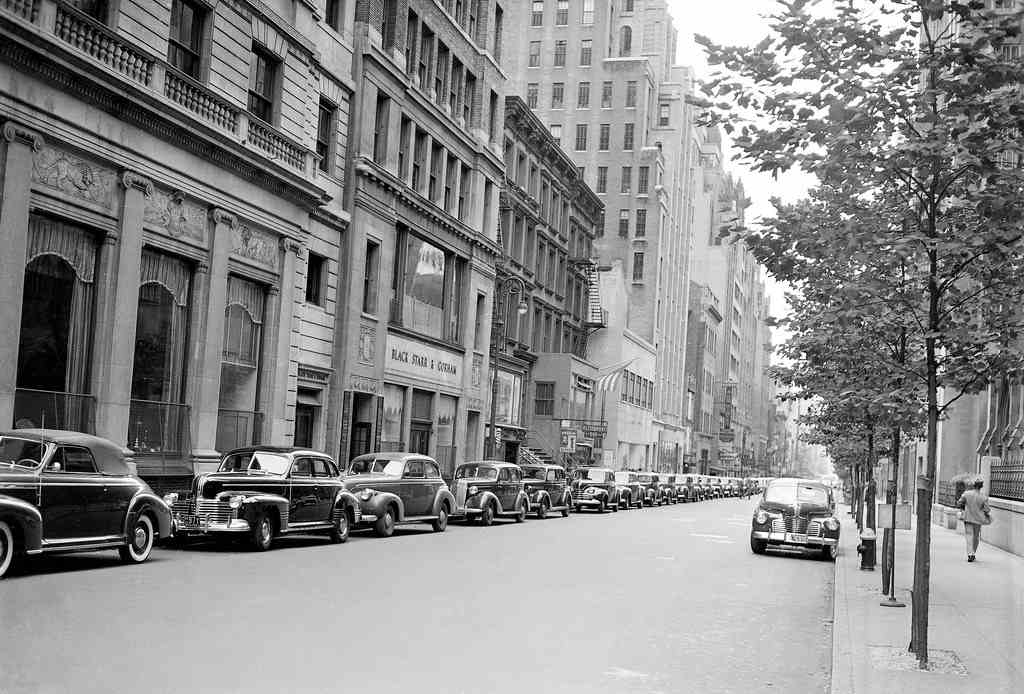
29. Workmen prepare to lower one of the 100-pound metal cornices from the Hotel Ansonia in New York, Sept. 22, 1942
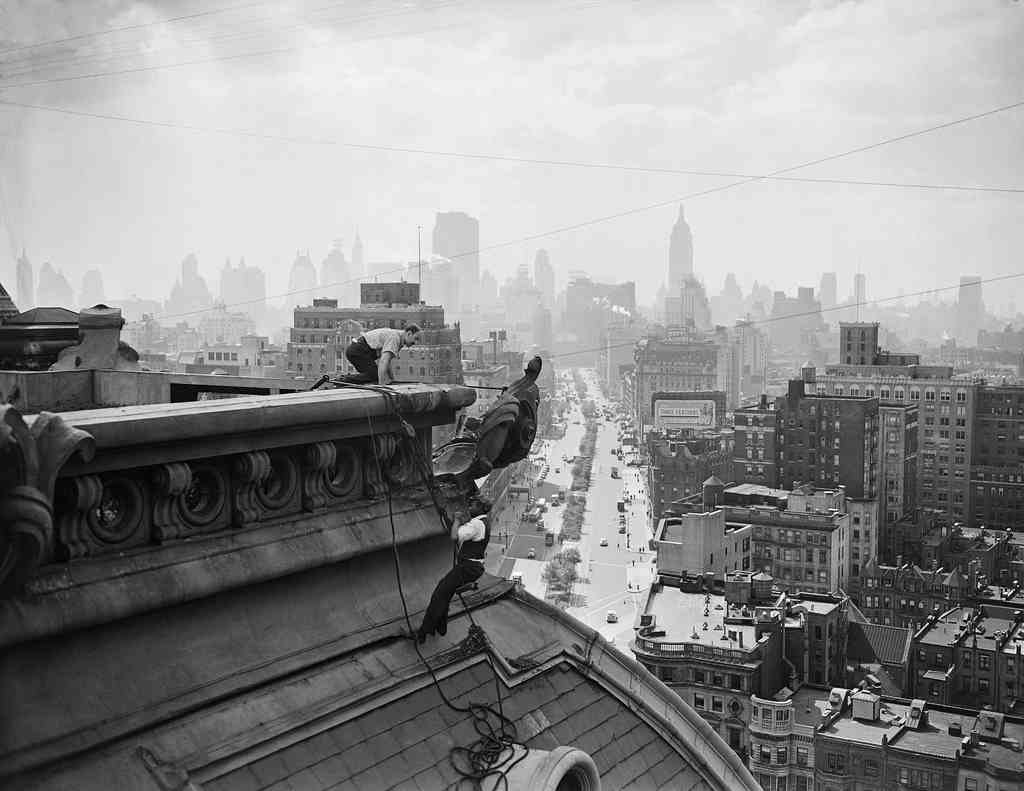
30. A crowd of customers gather at Sloppy Joe’s soft drink stand during a dimout in Times Square, New York, May 21, 1942
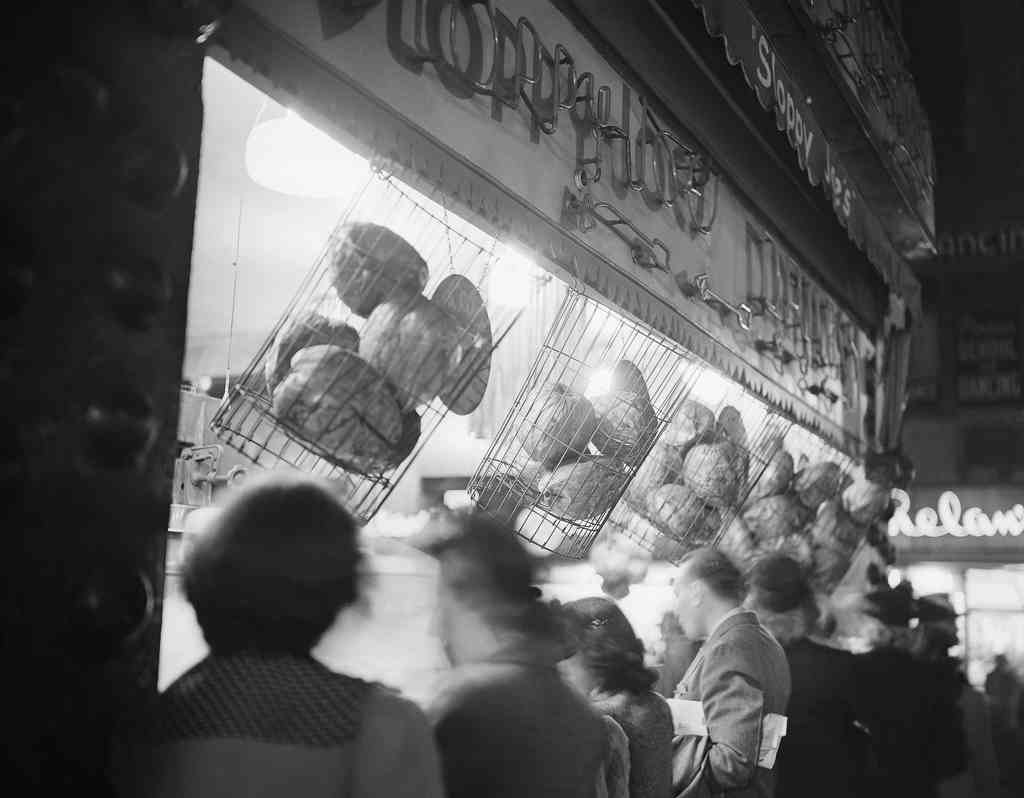
31. Customers gather at a soft drink stand during a dimout in Times Square, New York, May 21, 1942
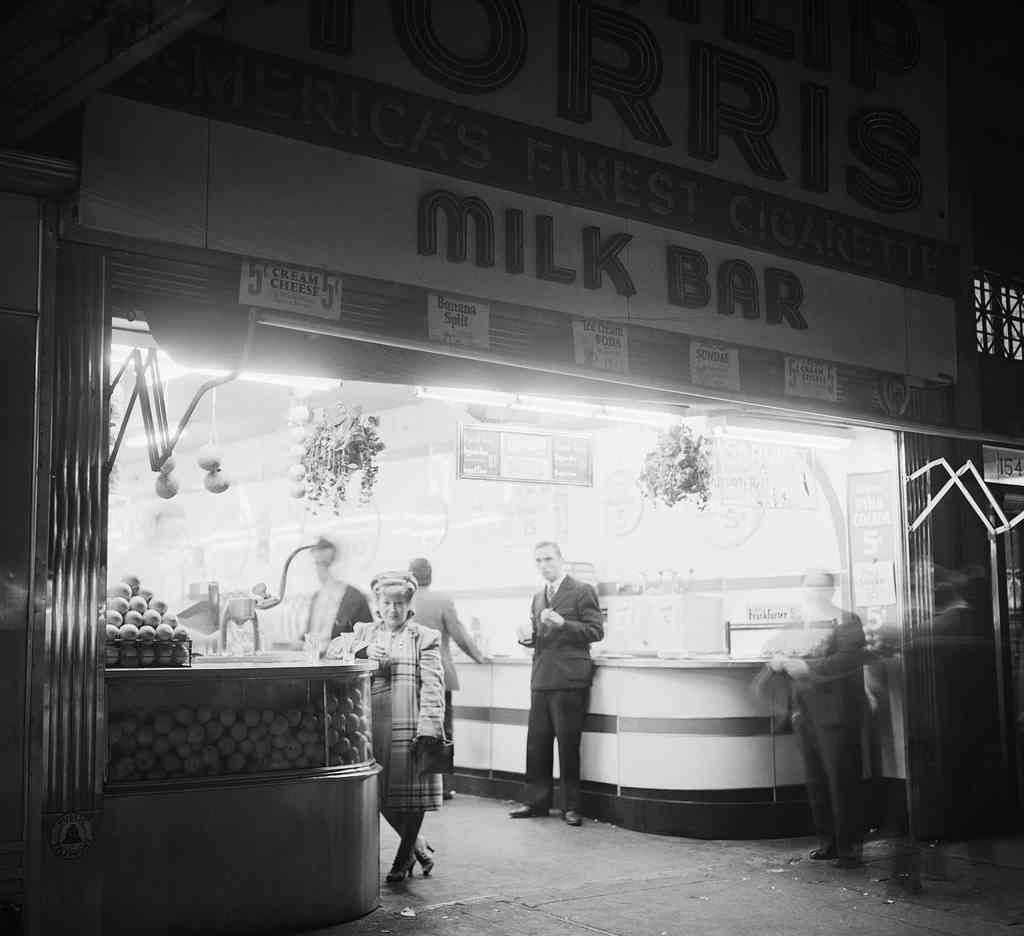
32. Pedestrians strolling Broadway stop to peek into one of the many photo studios looking for diversion in New York, Dec. 1, 1944
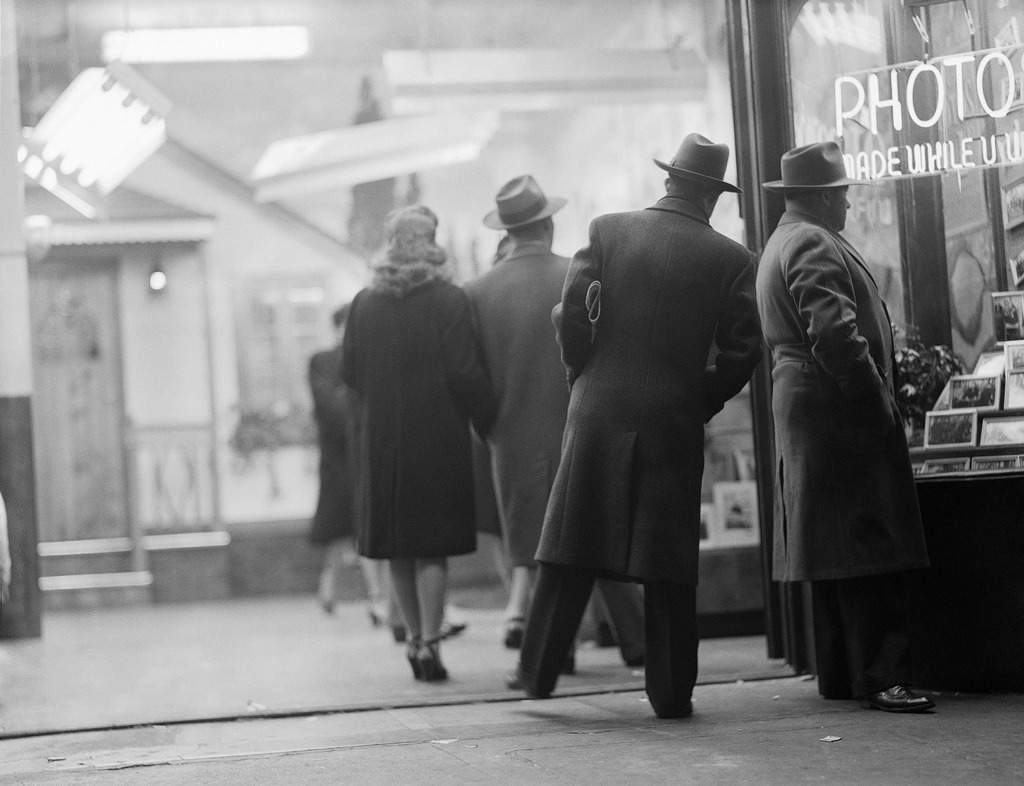
33. Ice skaters in New York’s Central Park look from the top of the Savoy Plaza Hotel at 59th St. and Fifth Ave., Jan. 9, 1944
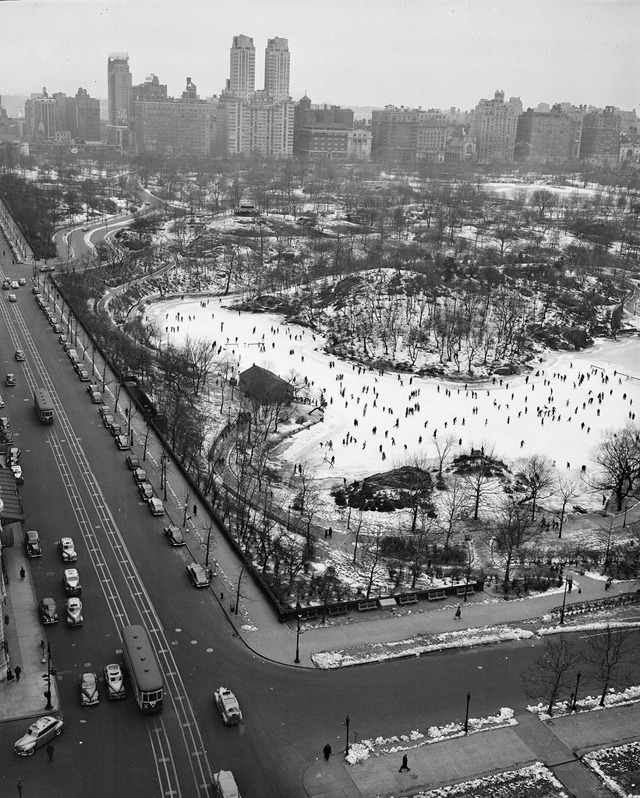
34. Two black Army soldiers assist a white man who was involved in a scuffle that occurred during the outbreak of a race riot in the Harlem area Aug. 2, 1943
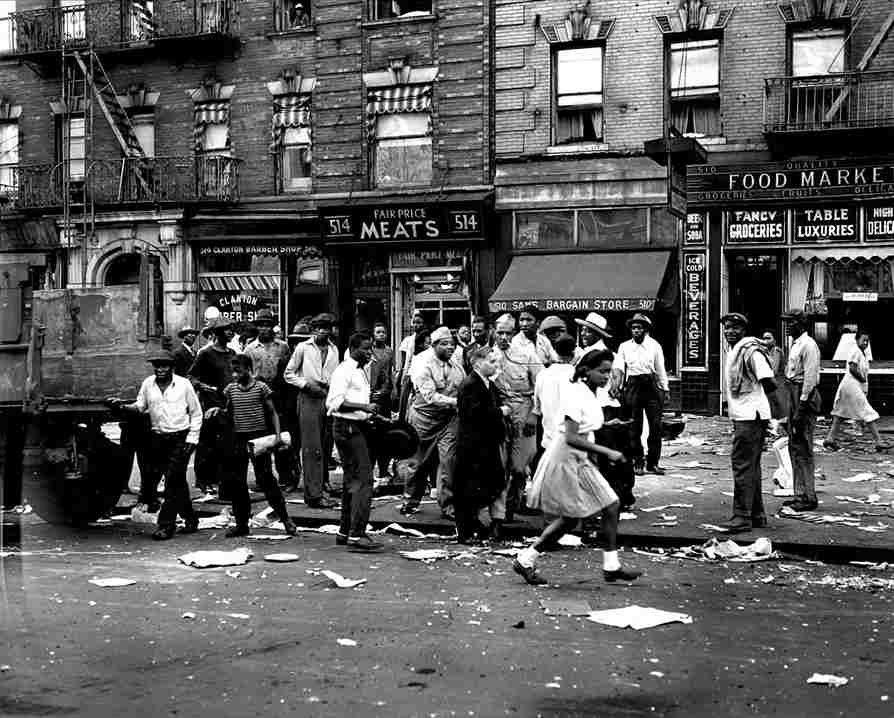
35. A boy swings and misses at a ball during a practice session in Brooklyn, N.Y., June 9, 1943
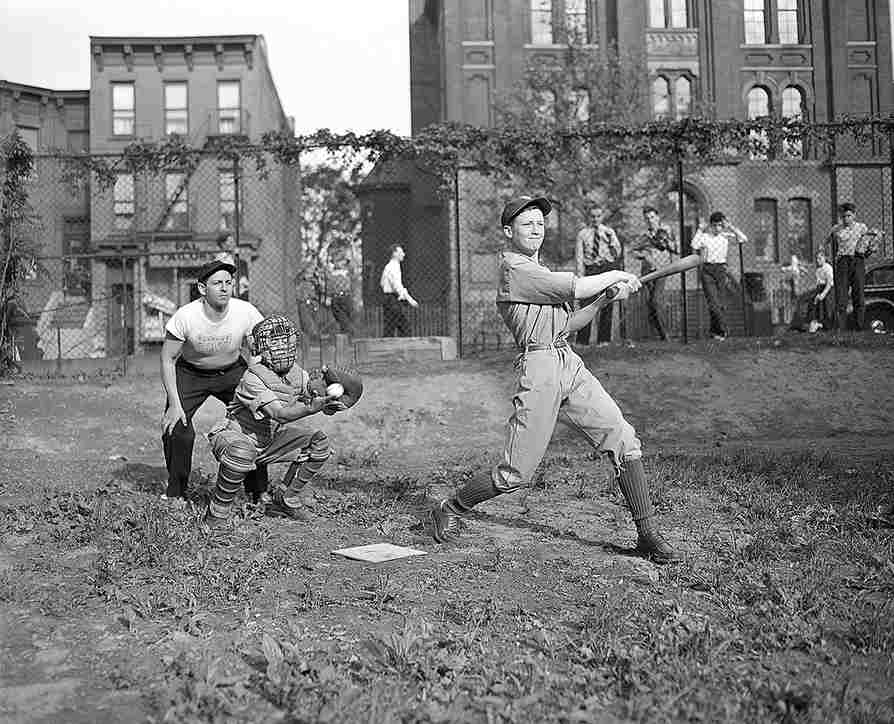
36. New Yorkers Relaxing in Prospect Park, Brooklyn, 1944
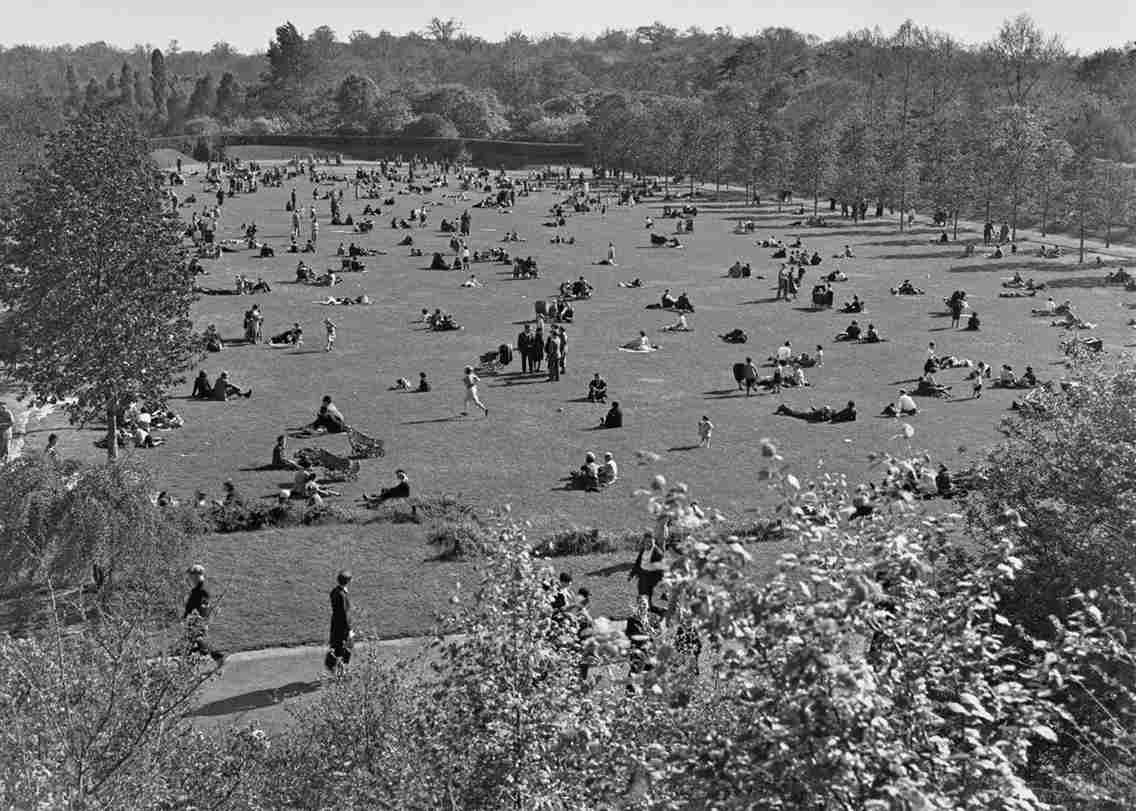
37. Anti-Semitic graffiti during the US presidential campaign of 1944 on the H Jaffess Tire Company shop in the Bronx
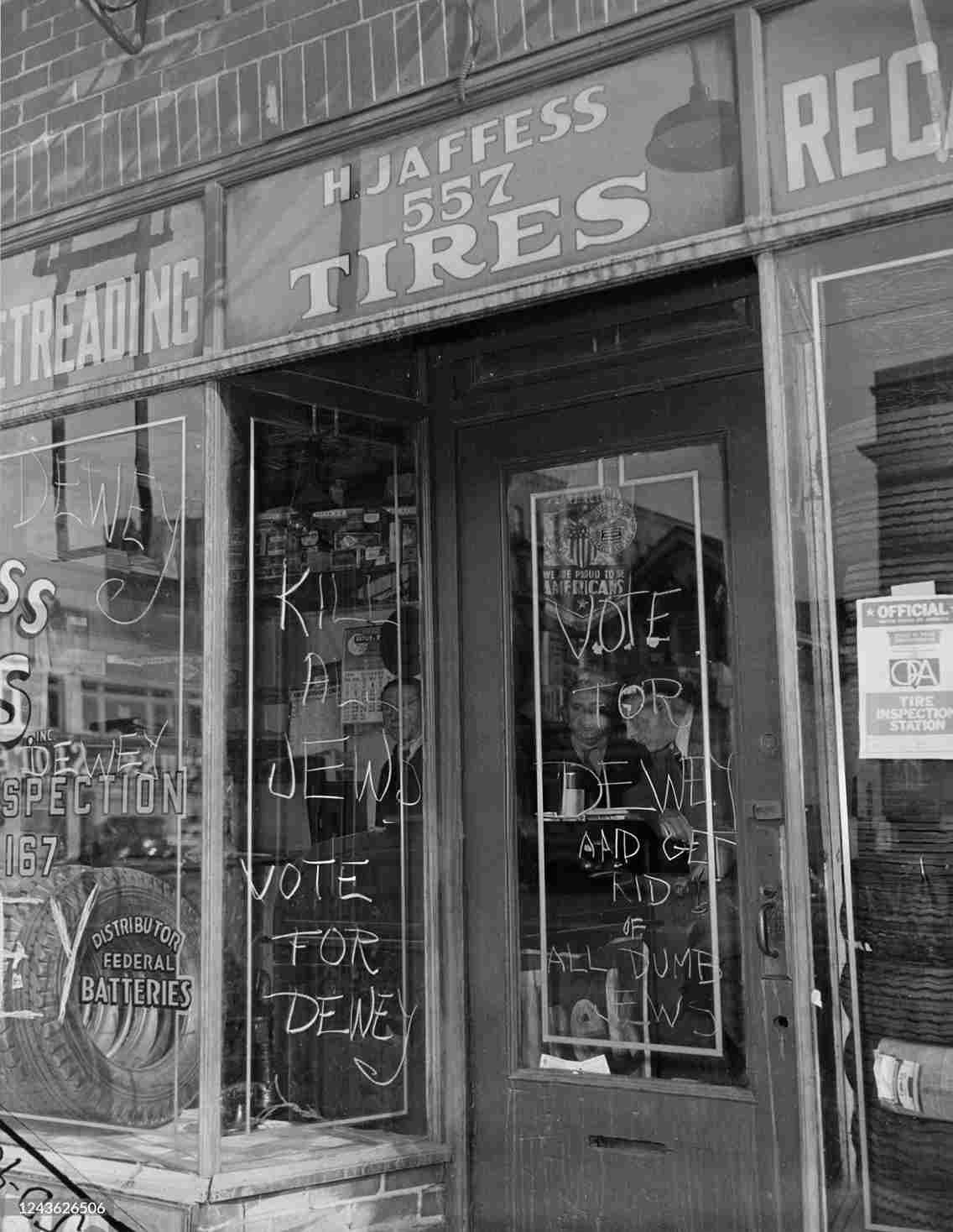
38. Street Scene at Surf and Stillwell Avenues, Coney Island, 1944
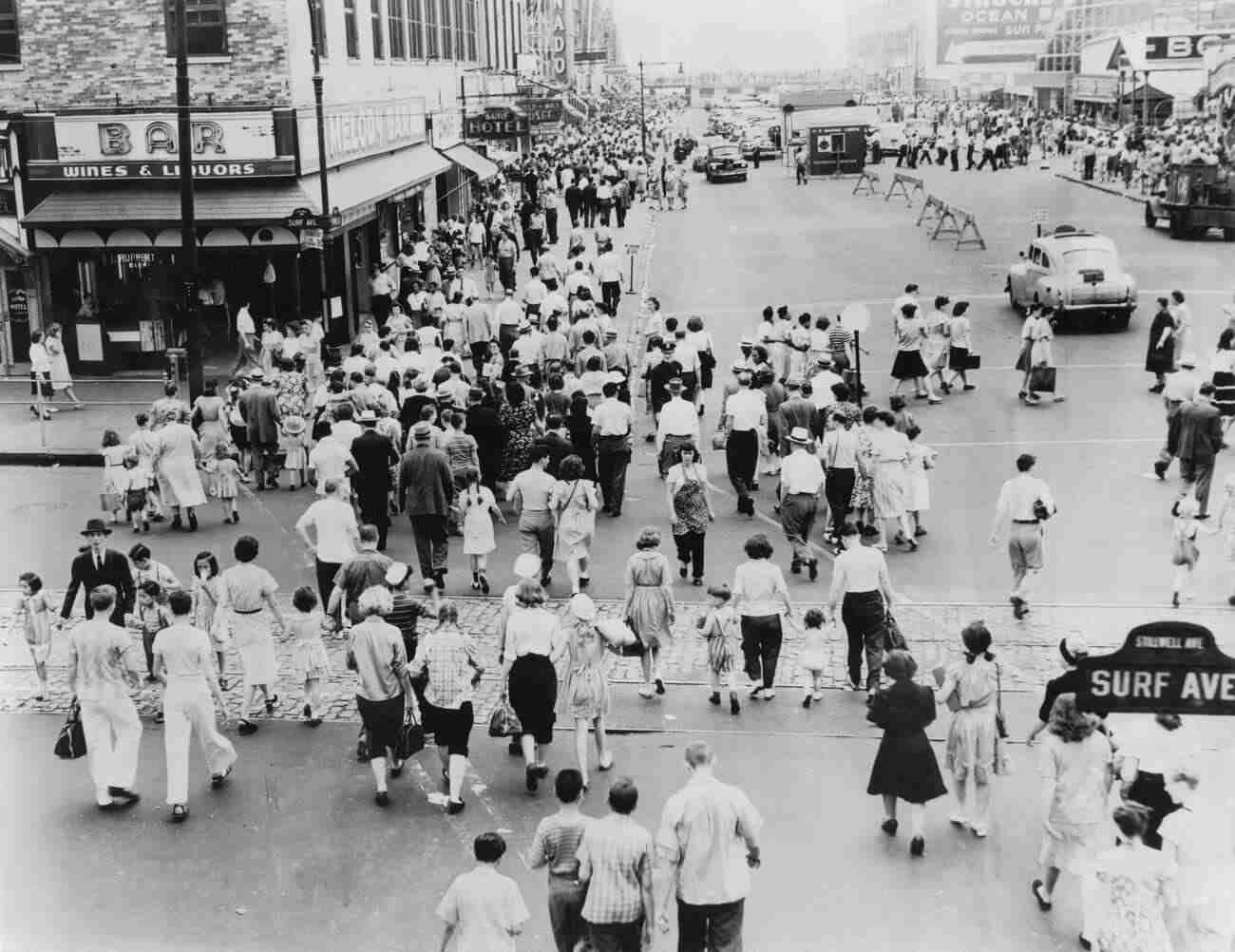
39. Crowd in Madison Square on D-Day, Manhattan, 1944
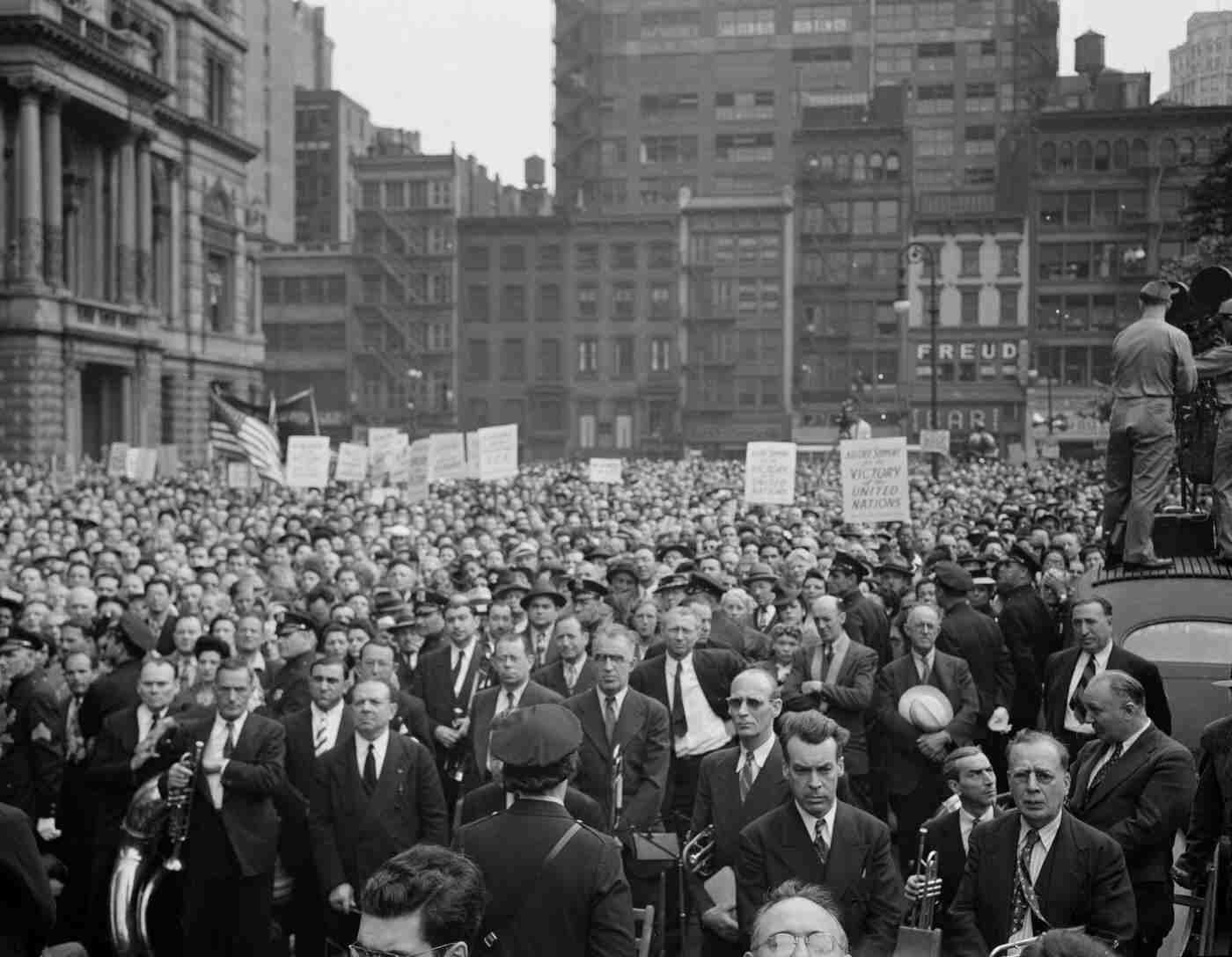
40. View Looking East Down Pell Street in Chinatown, Manhattan, Circa 1943

41. New Yorkers queue for potatoes at a special sale by Hearn’s at 149th St. and Third Ave. in the Bronx, 1943 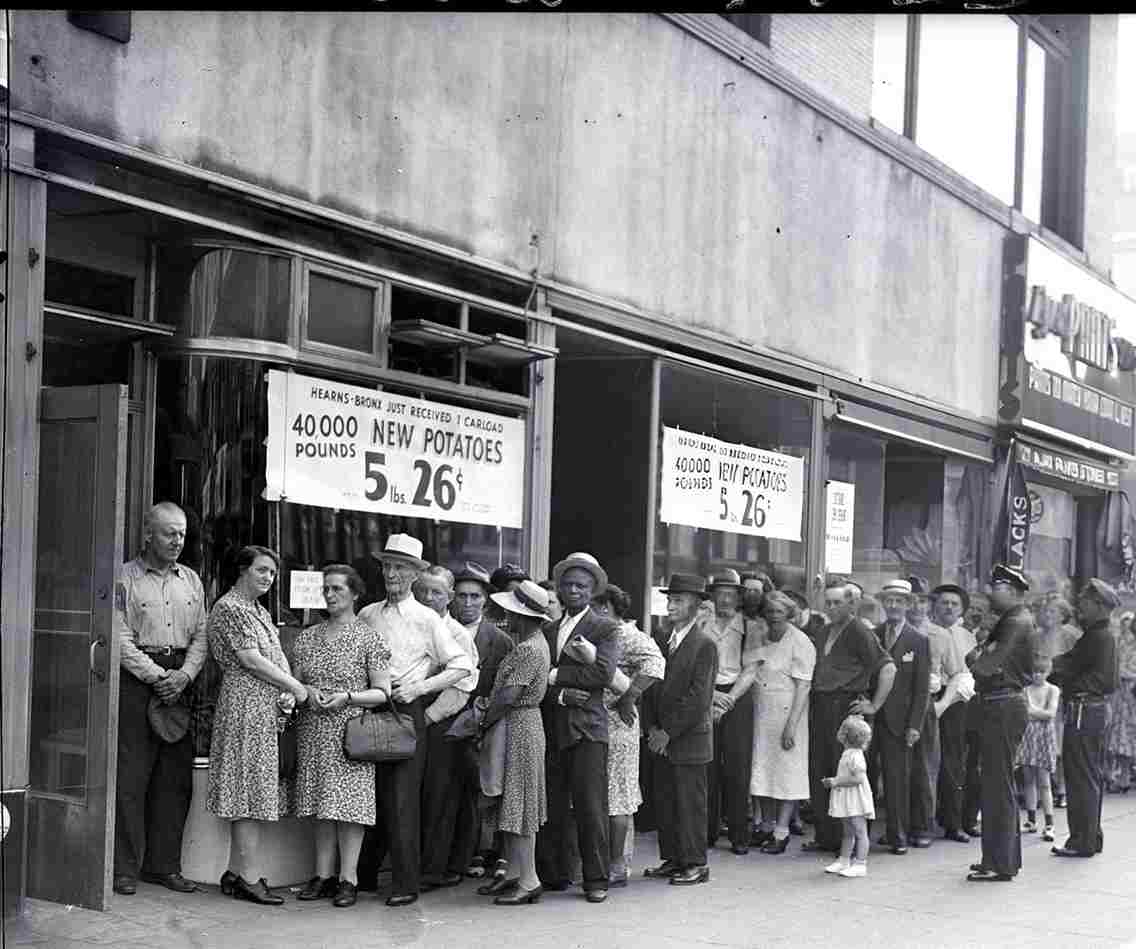
42.View Looking North Up Mott Street in Chinatown, Lower Manhattan, Circa 1943
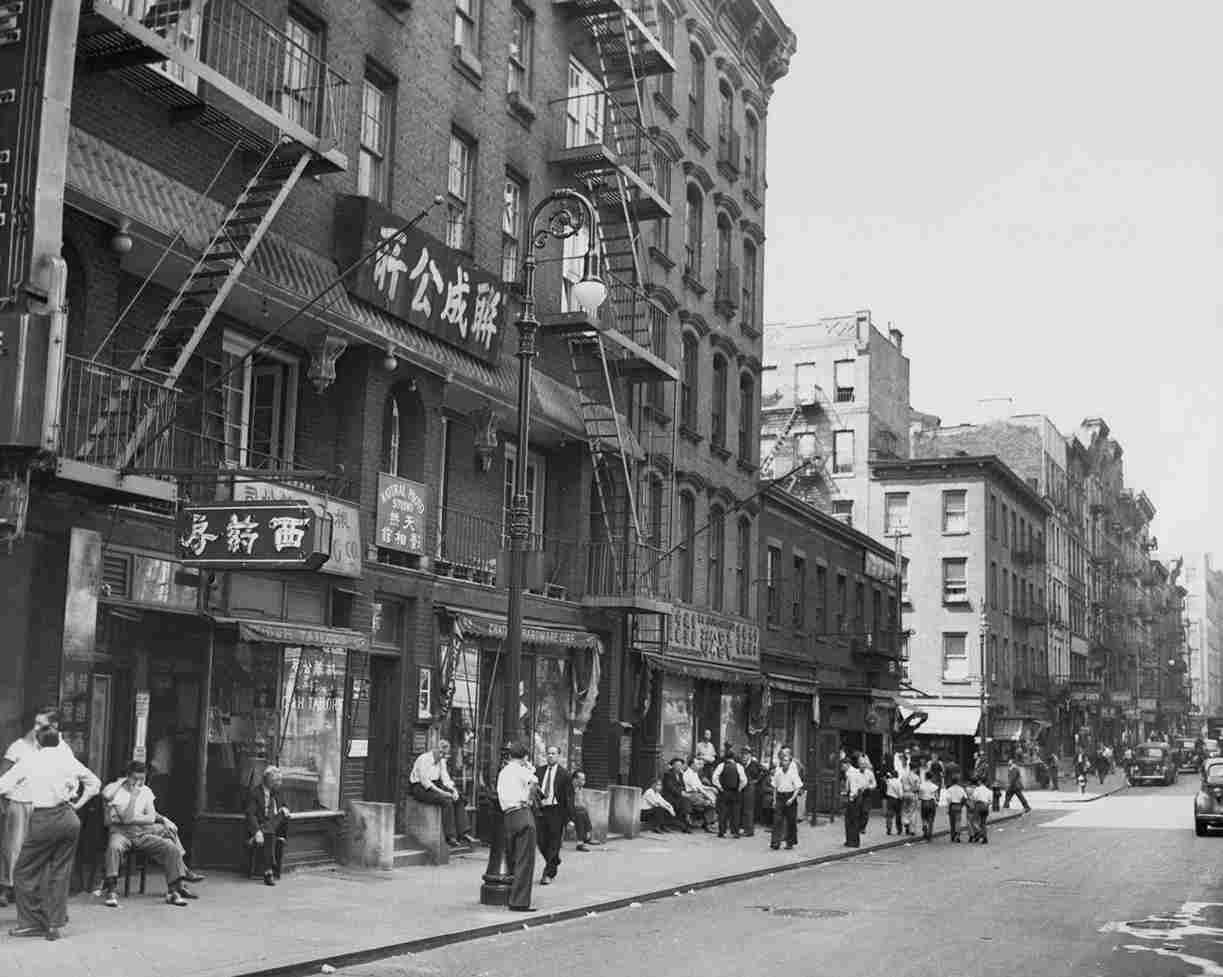
43. A Christmas Eve shopper with a crated rocking horse tries to hail a cab outside Macy’s department store in New York City on Dec. 24, 1946
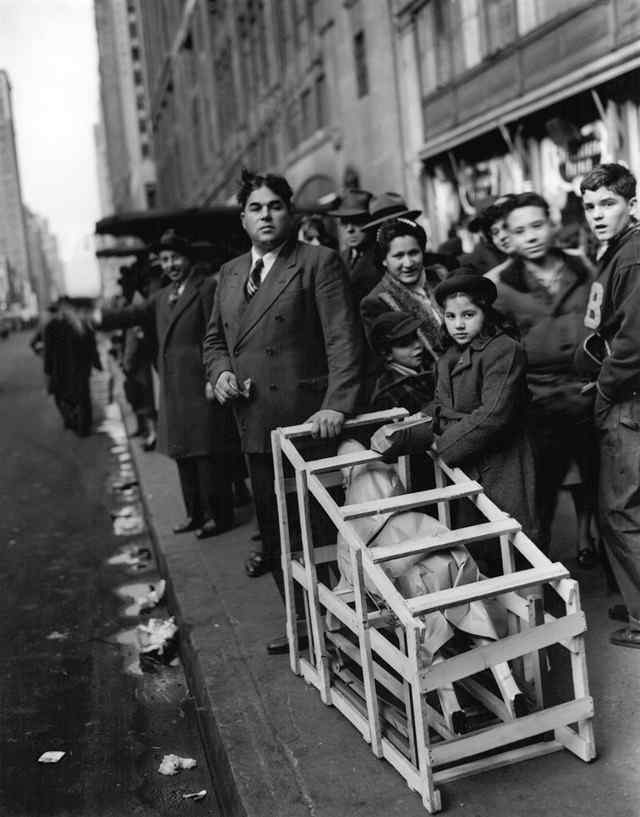
44. The Third Avenue el winds its way through lower Manhattan, February 12, 1946
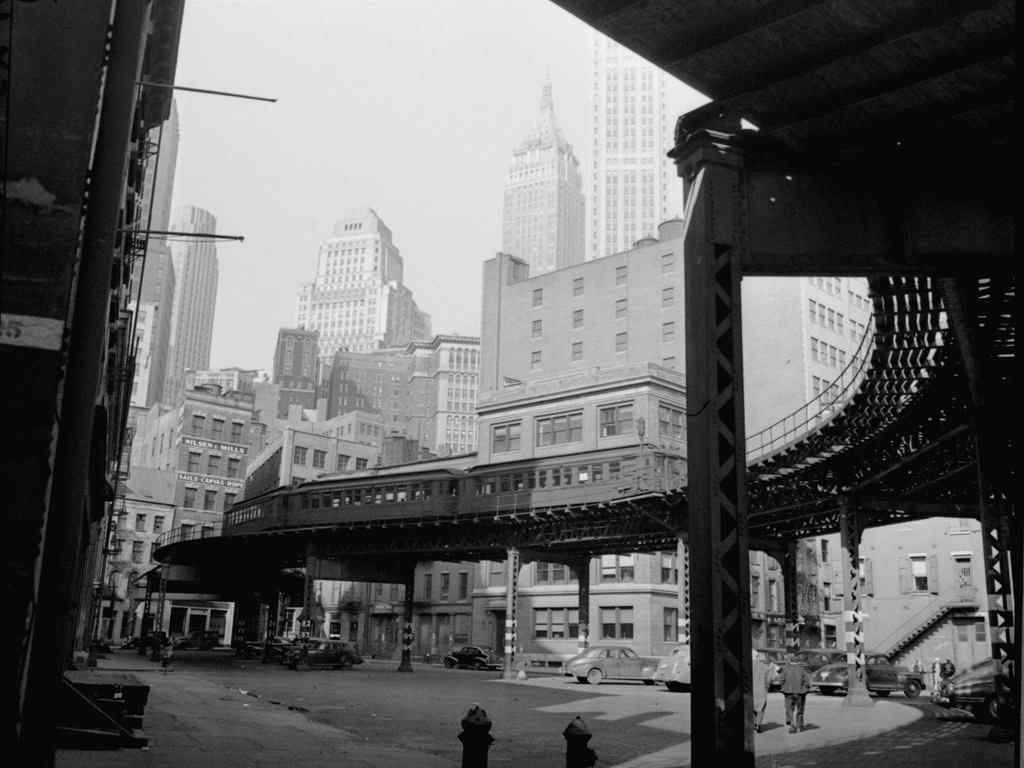
45. A pushcart vendor cleans fresh fish before weighing it for a customer at the corner of Orchard St. and Stanton in the Jewish section of New York’s Lower East Side, June 1, 1946
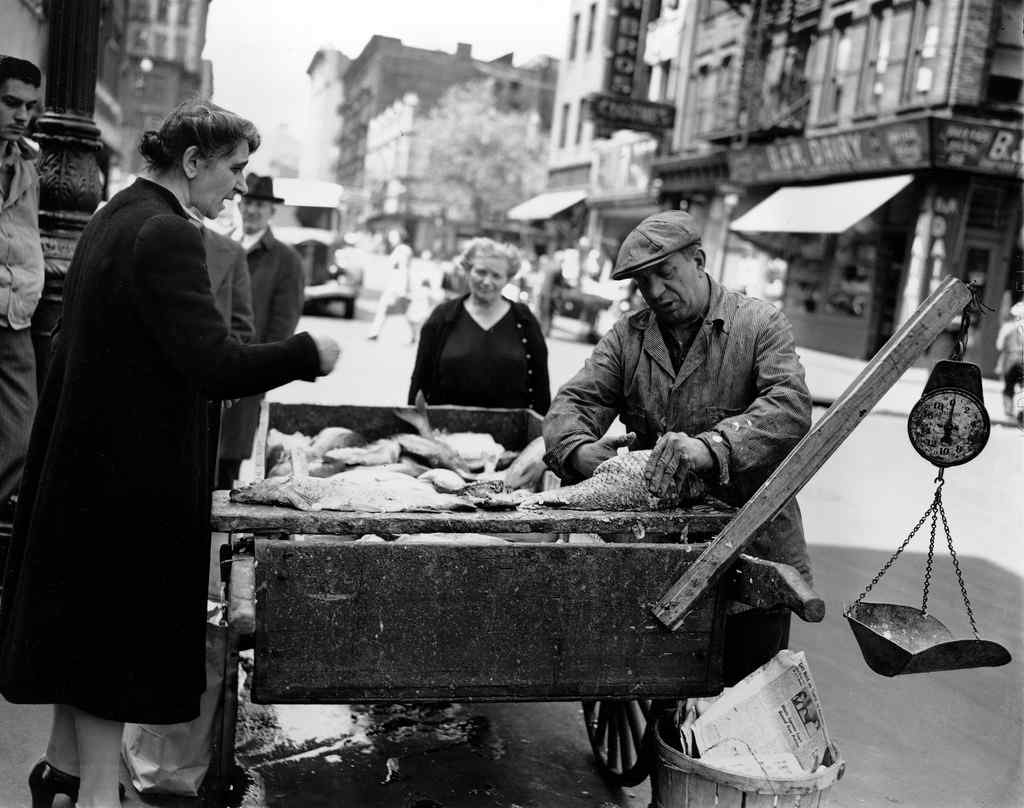
46. Enticing delicacies on Mulberry Street in Little Italy, in New York, June 1, 1946
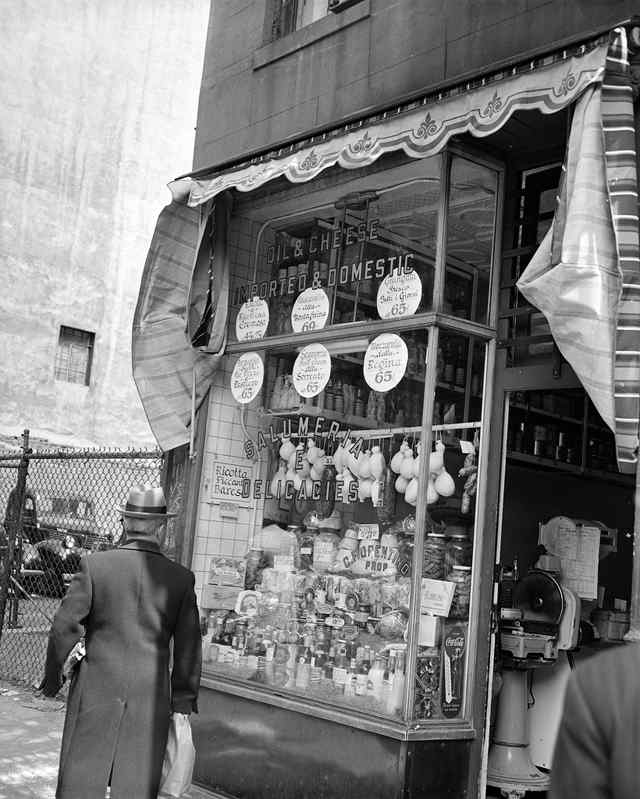
47. Men stopped to look at fabric for sale at an outdoor table in front of a store in New York’s Lower East Side on June 1, 1946
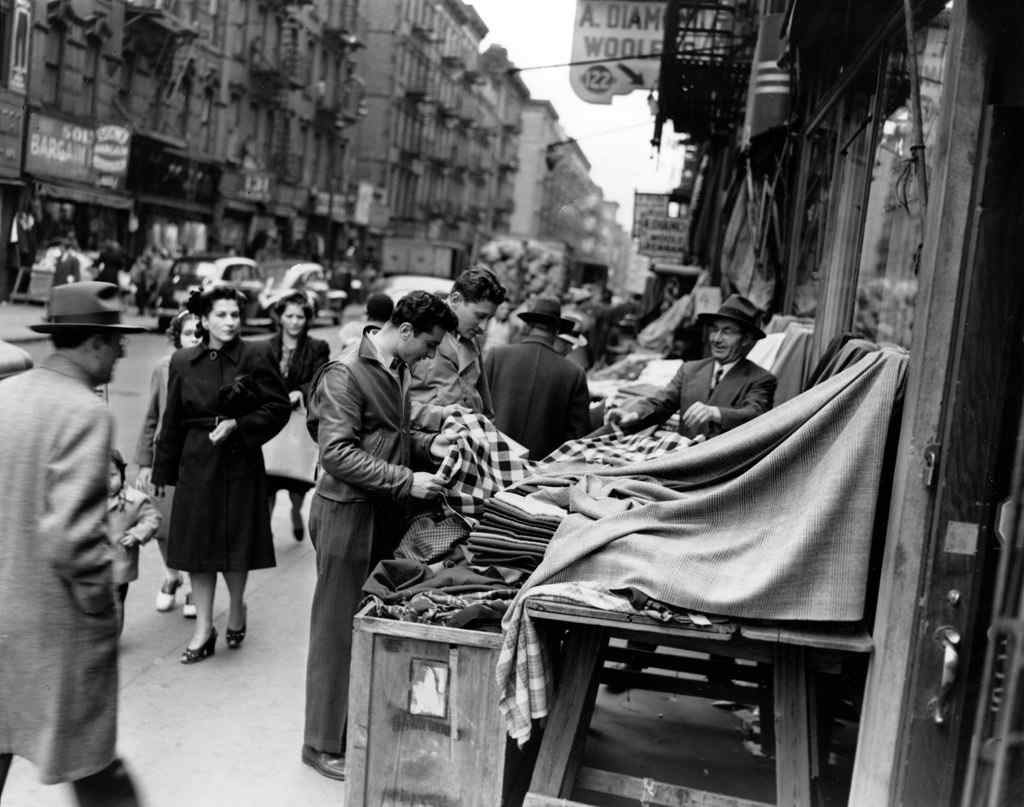
48. Soldiers stand rigidly at attention in their vehicles, which carry 8-inch Howitzers, during the Victory Parade of the 82nd Airborne Division on Fifth Avenue in New York, Jan. 12, 1946.
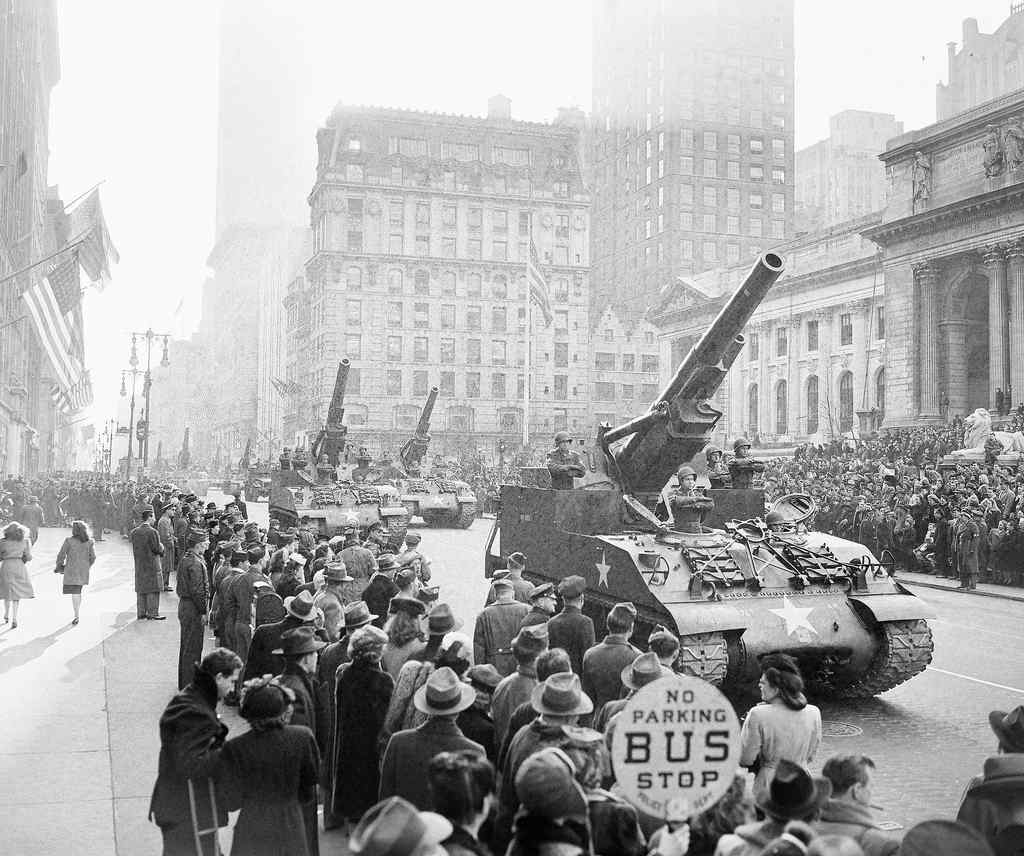
49. A description of the Grand Concourse in the Bronx as an impressive thoroughfare, 1946
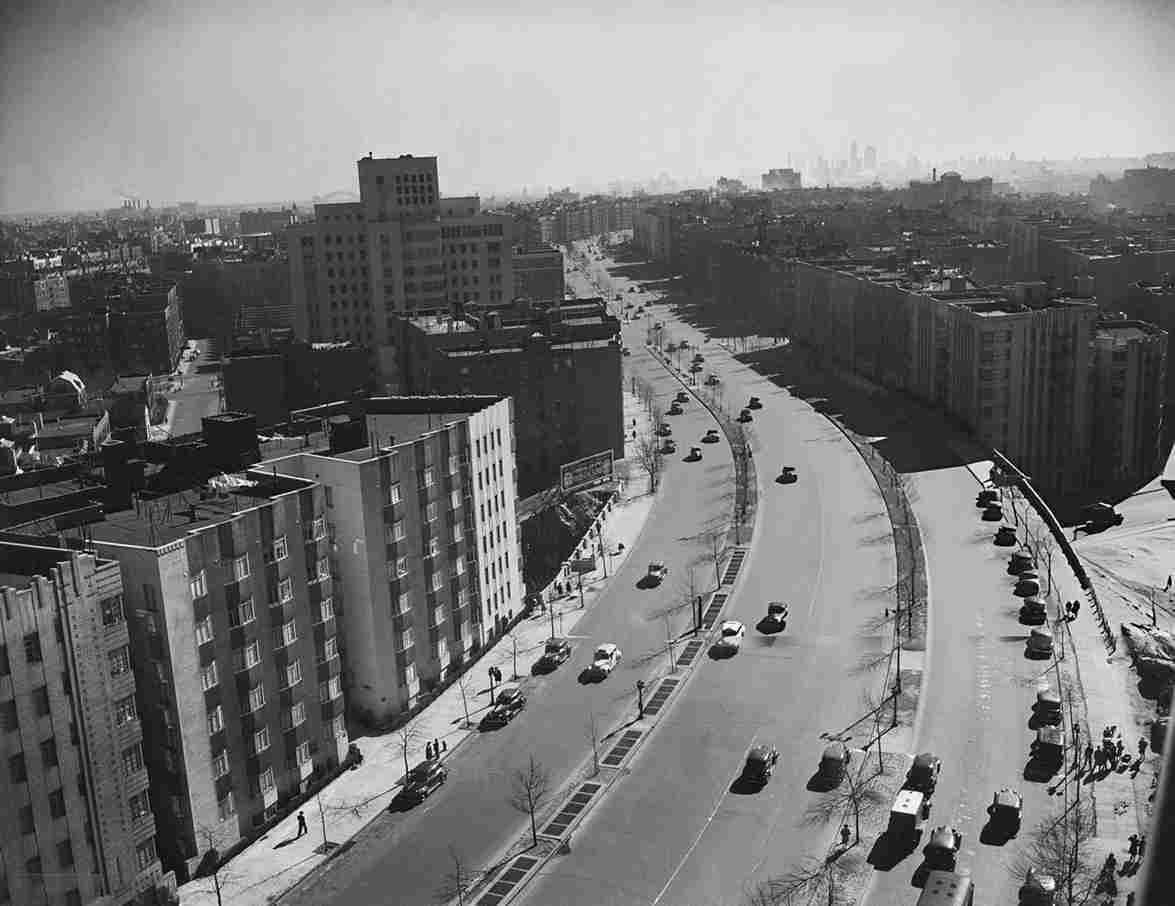
50. Outdoor markets serve a lower-class community in the Bronx, offering exotic foodstuffs, 1946

51. Traffic at 5th Avenue & 42nd Street, Manhattan, 1946
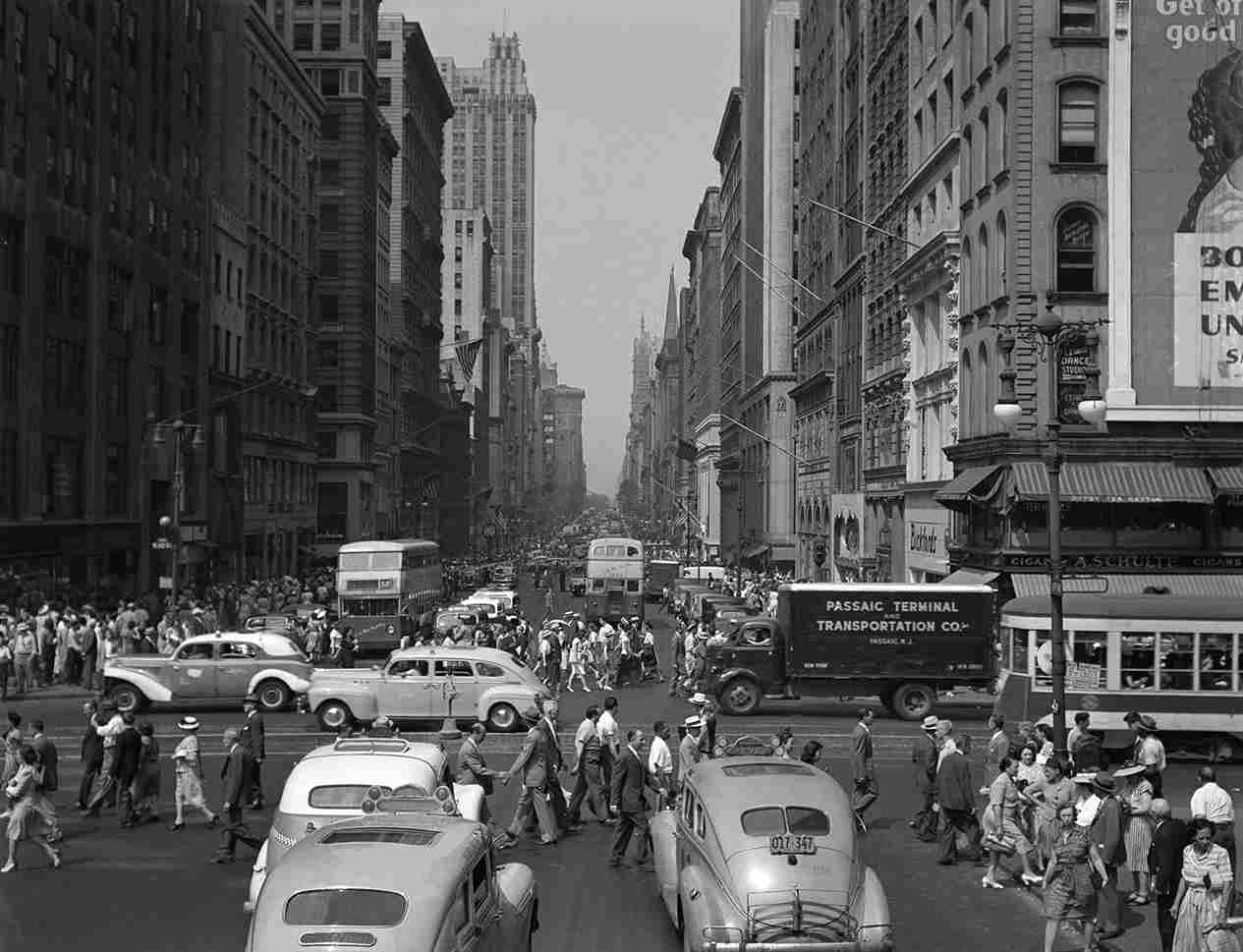
52. Men Sit Near Henry Ward Beecher Monument in Borough Hall Park, Brooklyn, 1945

53. Congress of Industrial Organizations Rally Supporting Job Loss Victims, Manhattan, Circa 1945
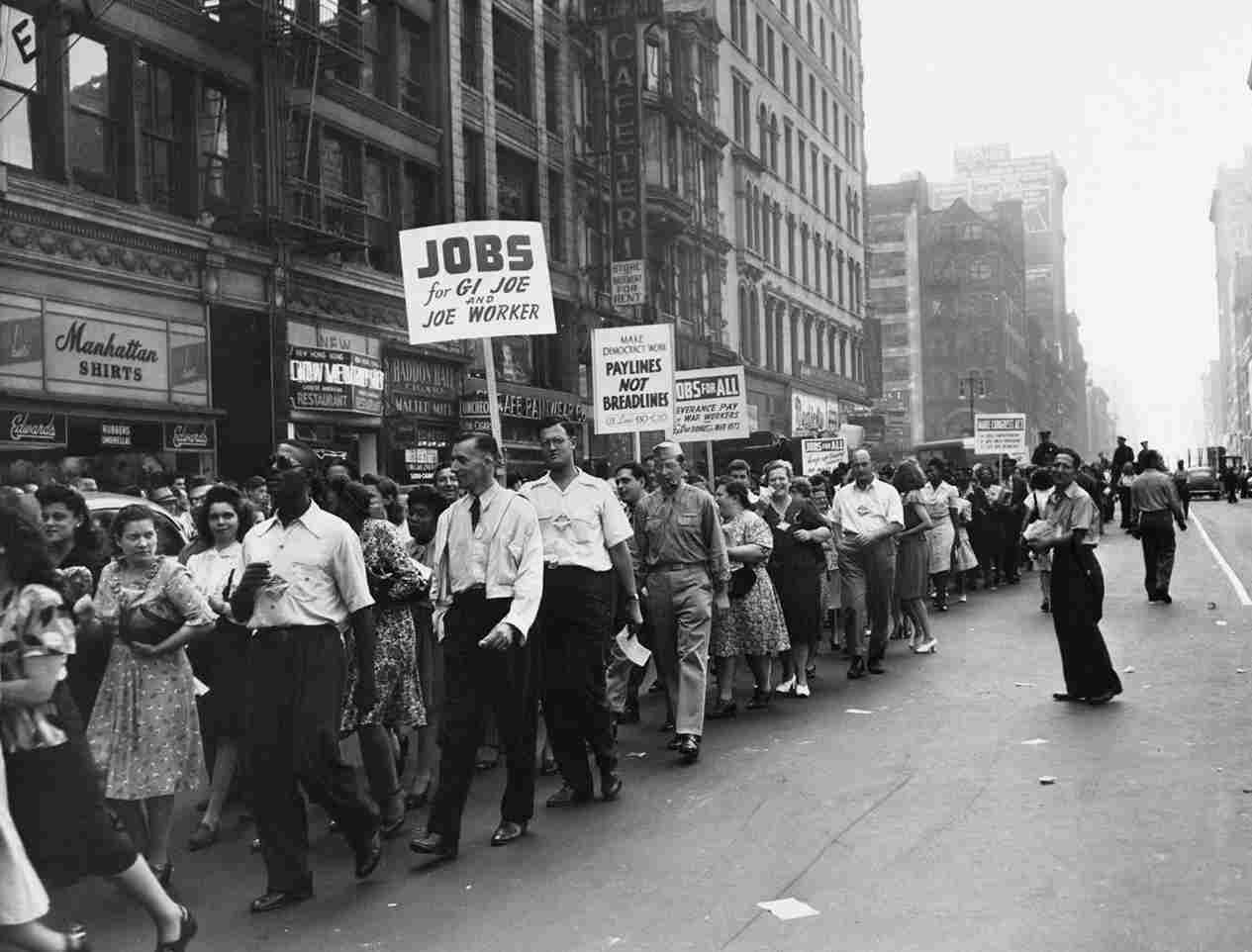
54. Flags and Streamers Decorate West Third Street, Brooklyn, 1945

55. A huge crowd in New York’s Times Square jubilantly welcomed the news that the Japanese had accepted the Allies’ terms of surrender on Aug. 14, 1945
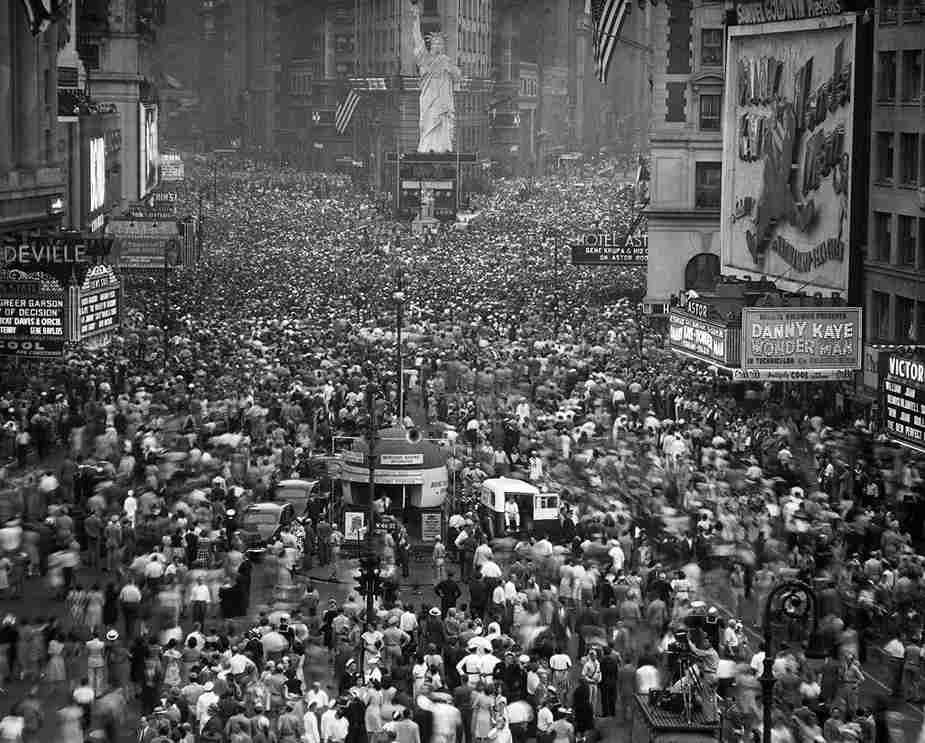
56. People observing the death of President Roosevelt, the United Nations flags fly at half mast at Rockefeller Plaza, New York, April 13, 1945
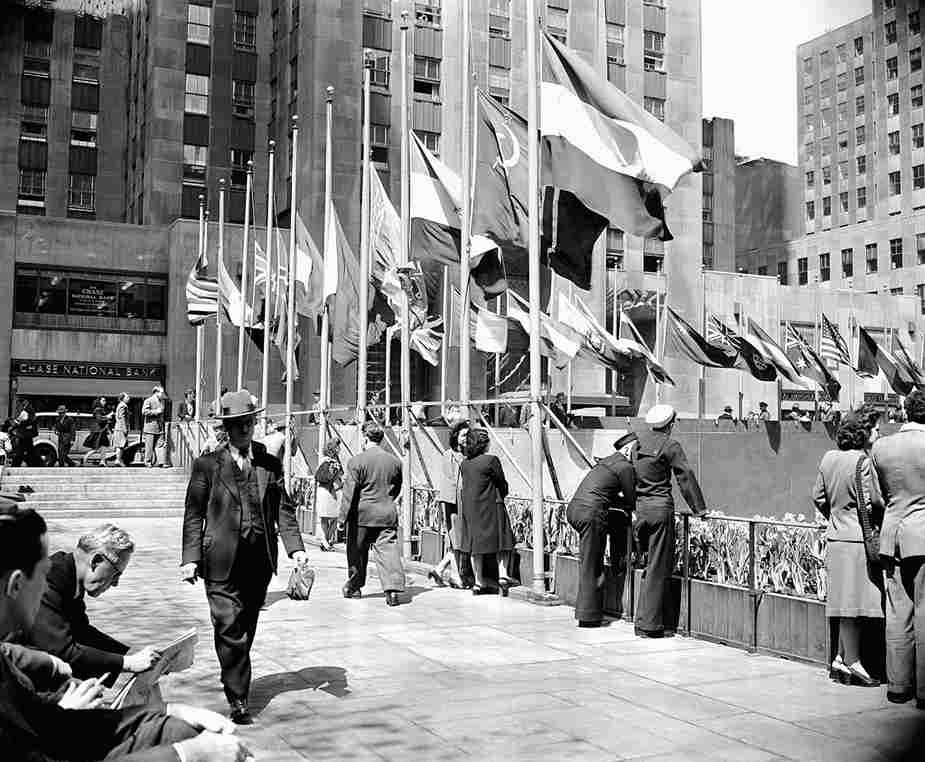
57. Marquee of Brooklyn Paramount Theater Advertises ‘The Stork Club,’ 1945
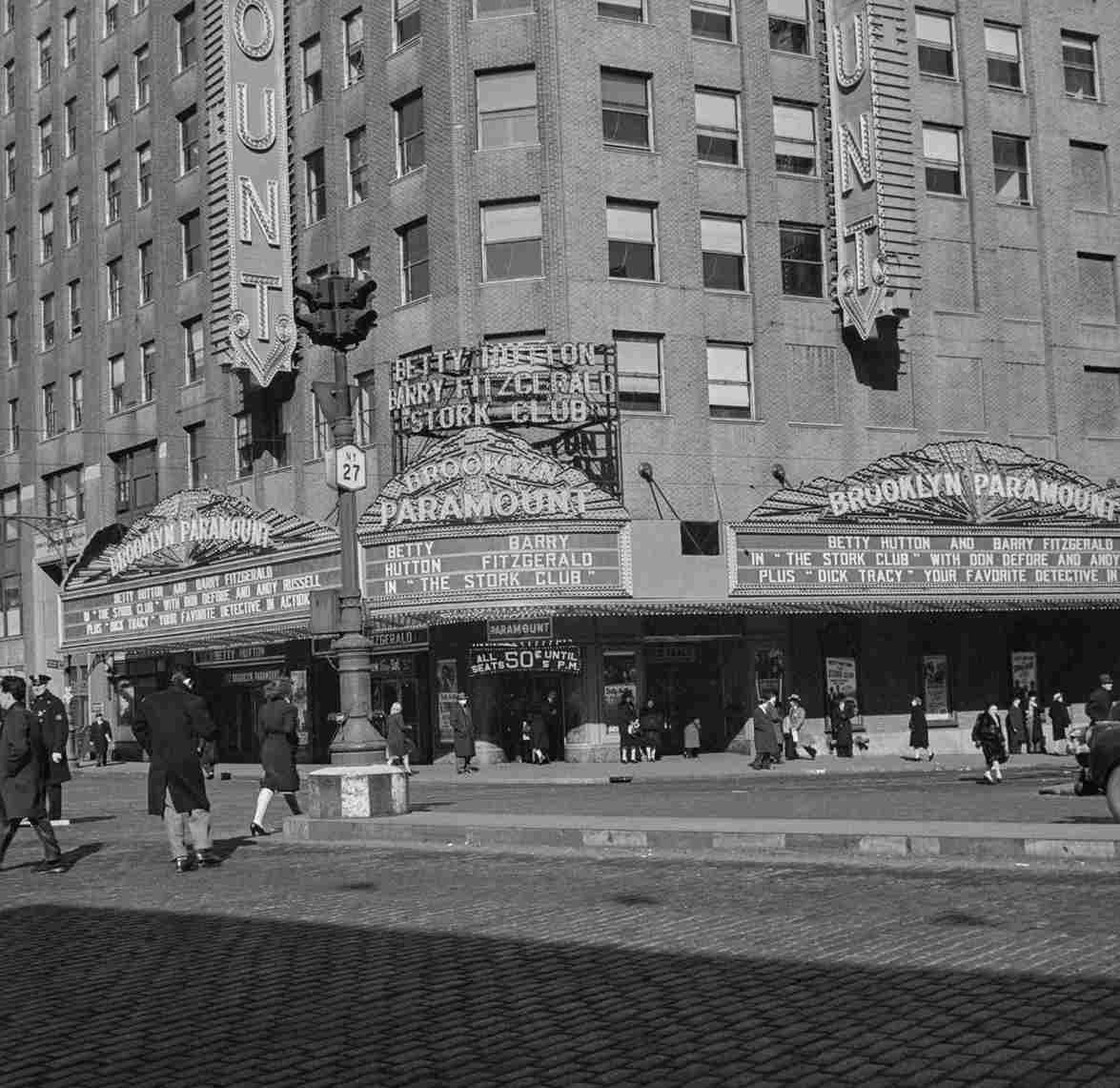
58. Wartime billboards for cigars, beer, and Coca-Cola, all promoting war bonds on Burnside Avenue in the Bronx, 1945
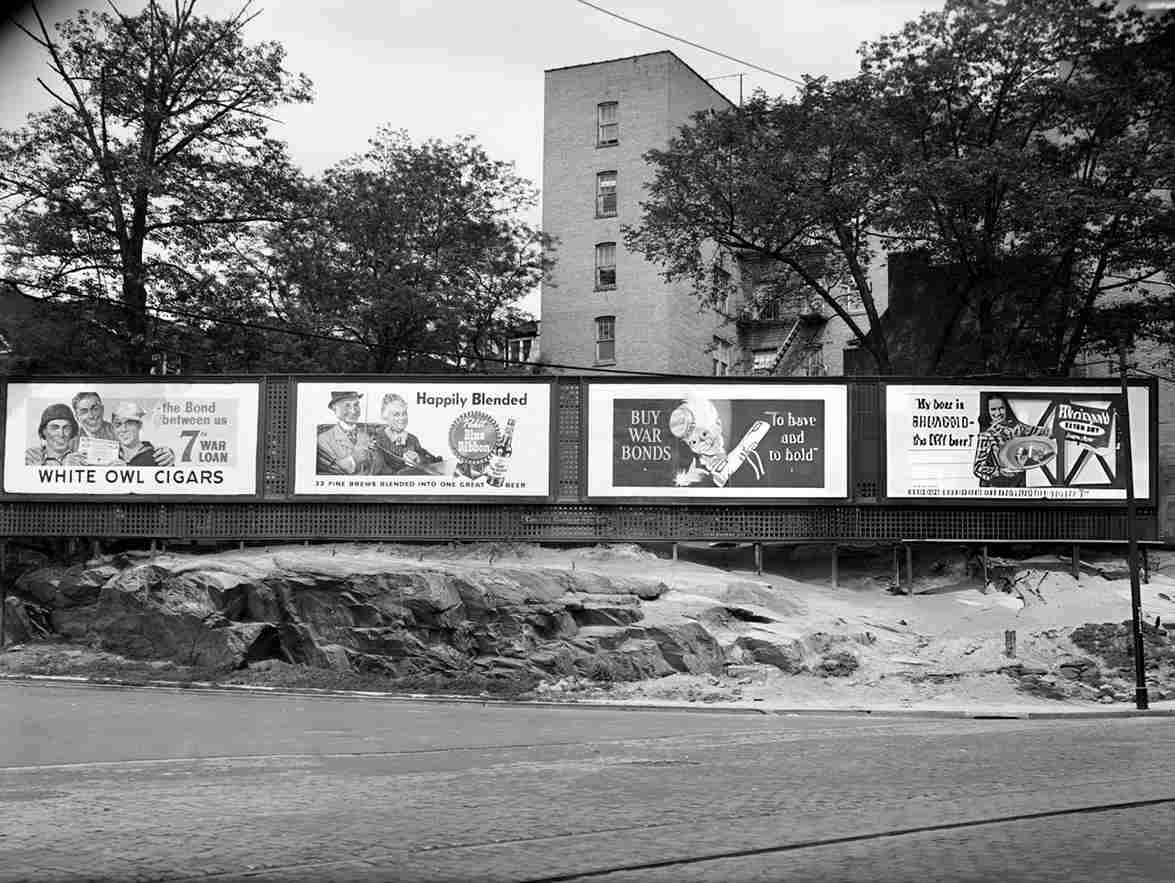
59. People sunbathe on the beach and walk along the boardwalk at Coney Island in Brooklyn, May 27, 1945
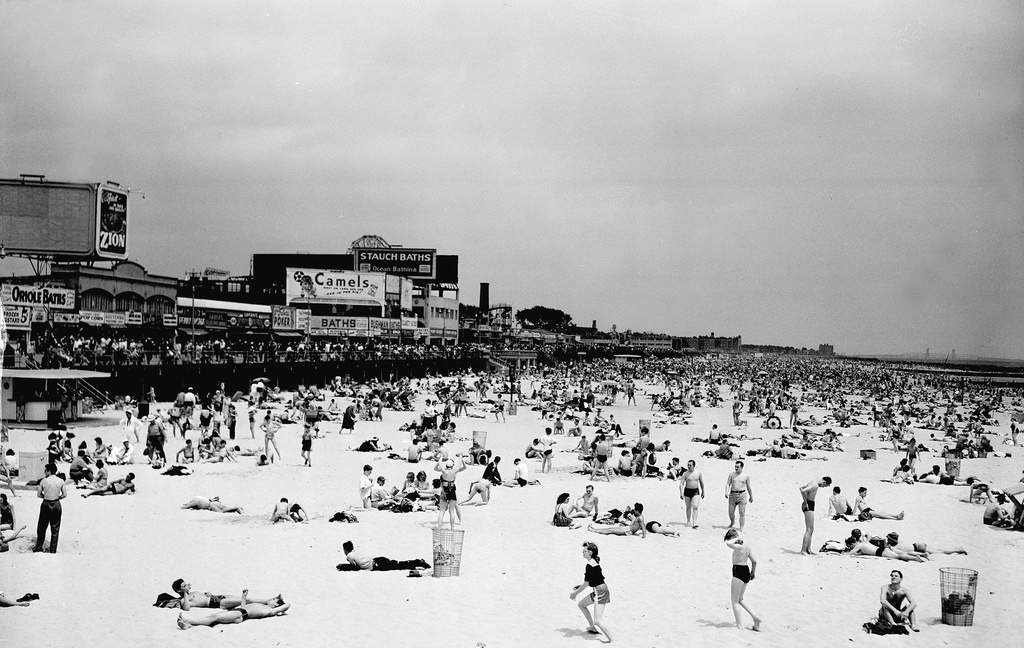
60. The Fulton Fish Market from the corner of Fulton St. looking north, New York City, Jan. 6, 1947
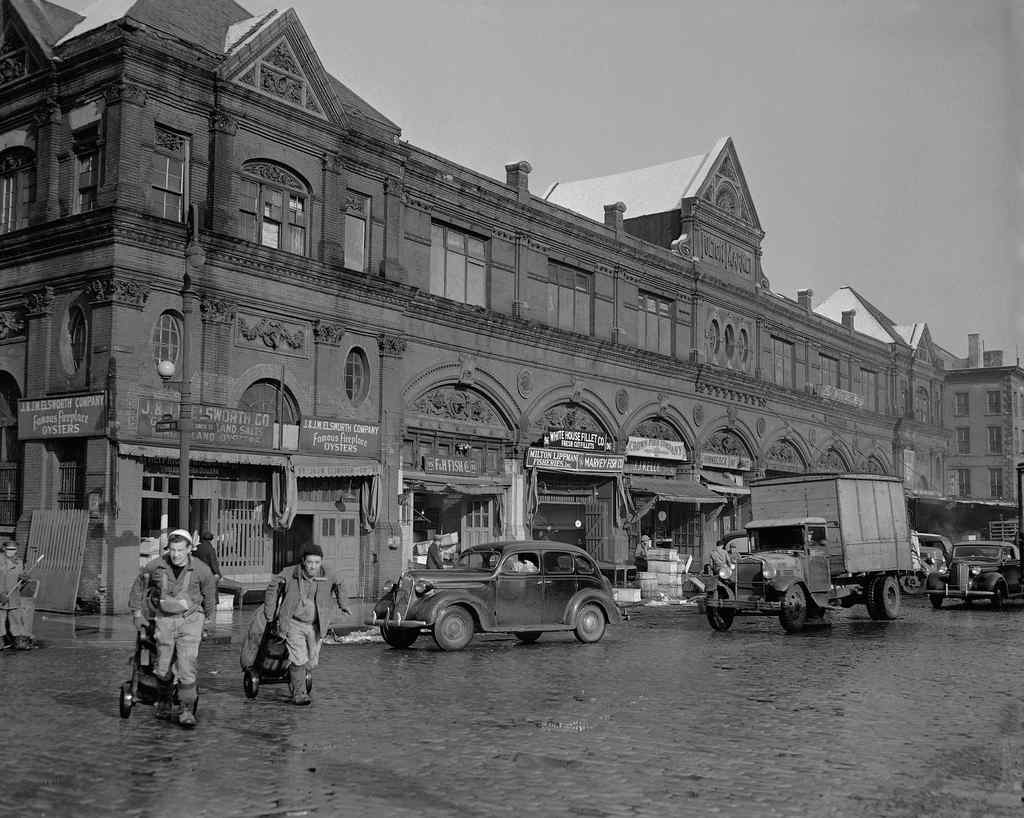
61. A pedestrian stops and enjoys a hot ear of corn from the vendor in New York, July 14, 1947
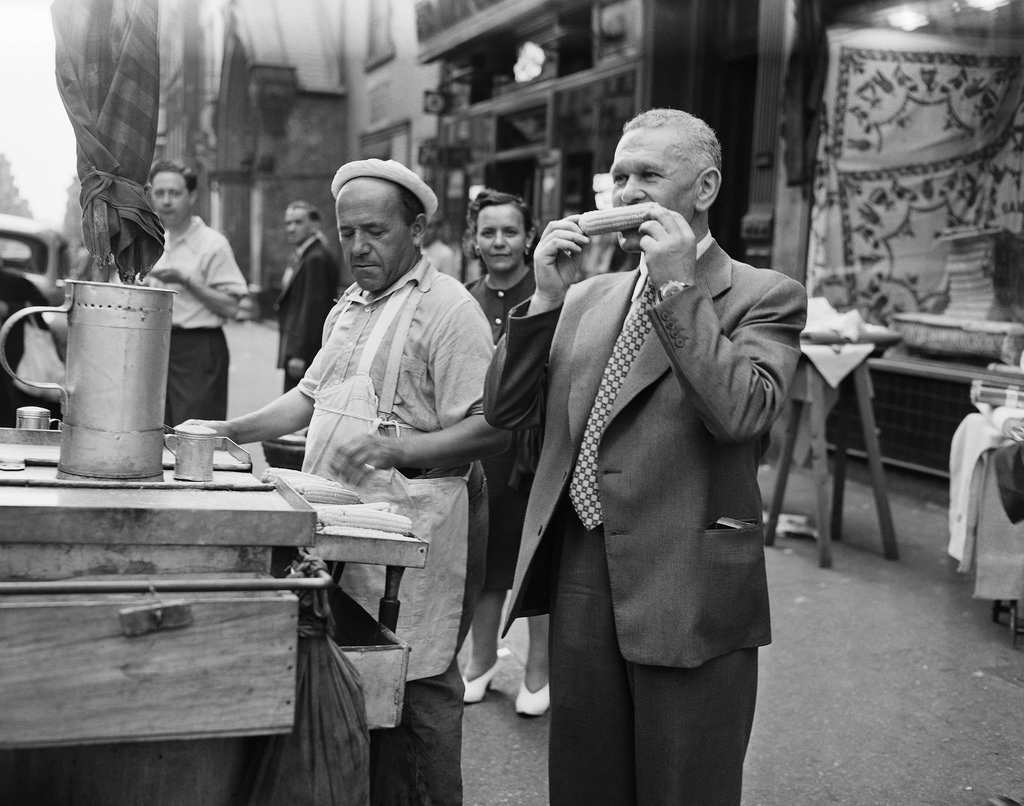
62. An elderly street merchant wheels his pushcart loaded with crockery slowly along at the corner of Orchard and Delancy Streets on the Lower East Side of New York, July 14, 1947

63. A pedestrian walks between drifts of snow in Times Square, Dec. 27, 1947

64. Passengers scurry to buses at 49th Street and Fifth Ave. as snow continues to fall, reaching a depth of 10.5 inches, Dec. 26, 1947

65. Pedestrians make their way in between cars stalled on the bridge while crossing the Grand Central Parkway at Union Turnpike, Kew Gardens, Queens, Dec. 27, 1947
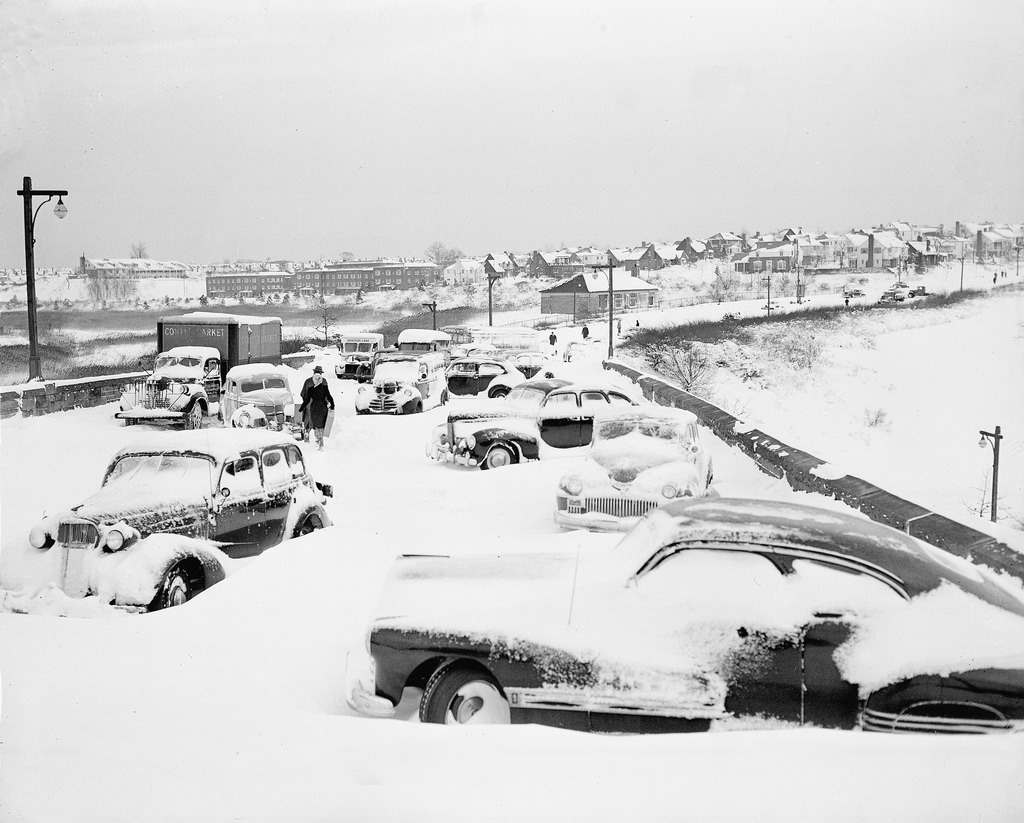
66. Smoke from a massive fire pours out of Pier 57 on the Hudson River at 15th Street in New York, Sept. 29, 1947
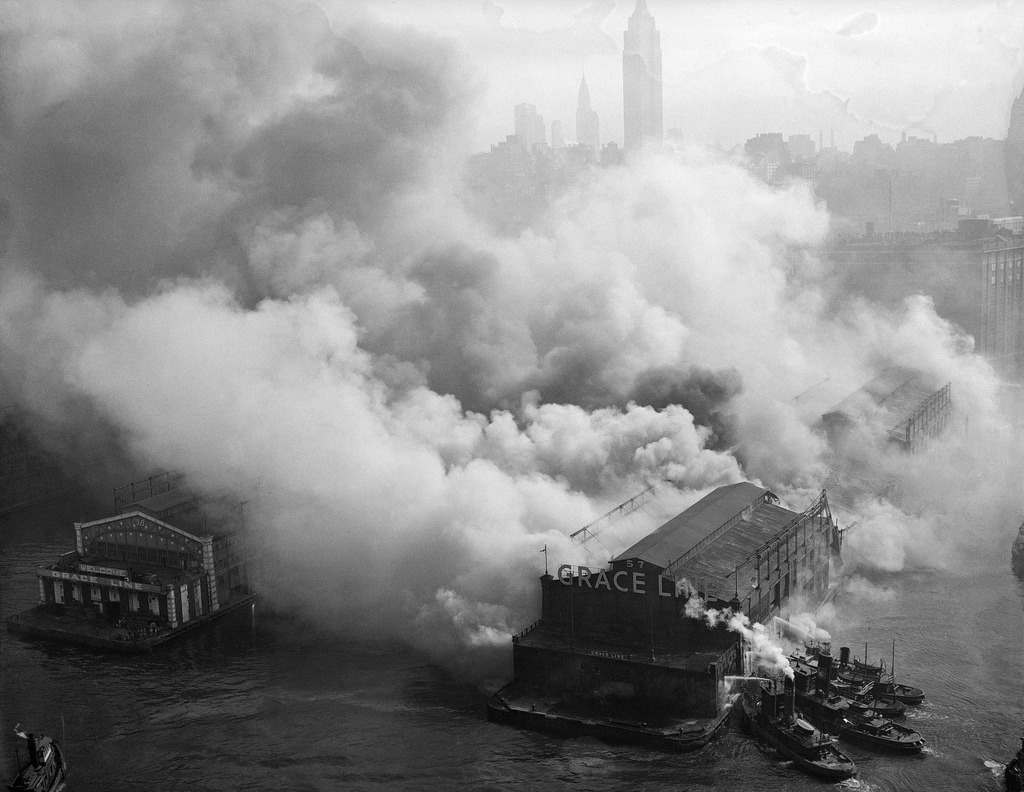
67. The Empire State Building is seen at right in this aerial view of buildings in Manhattan’s Garment District on Seventh Avenue on Dec. 9, 1947
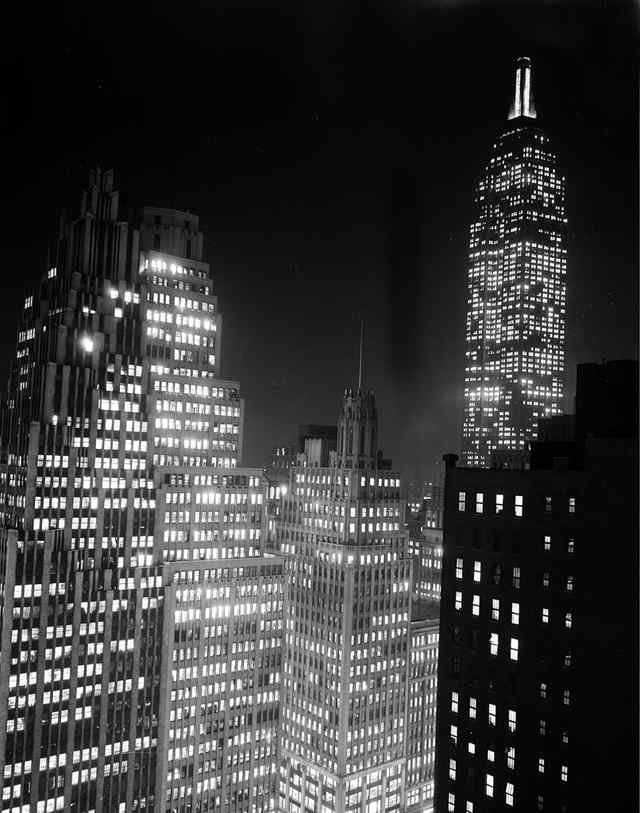
68. The Bowery where it intersects with Canal Street in New York, 1947
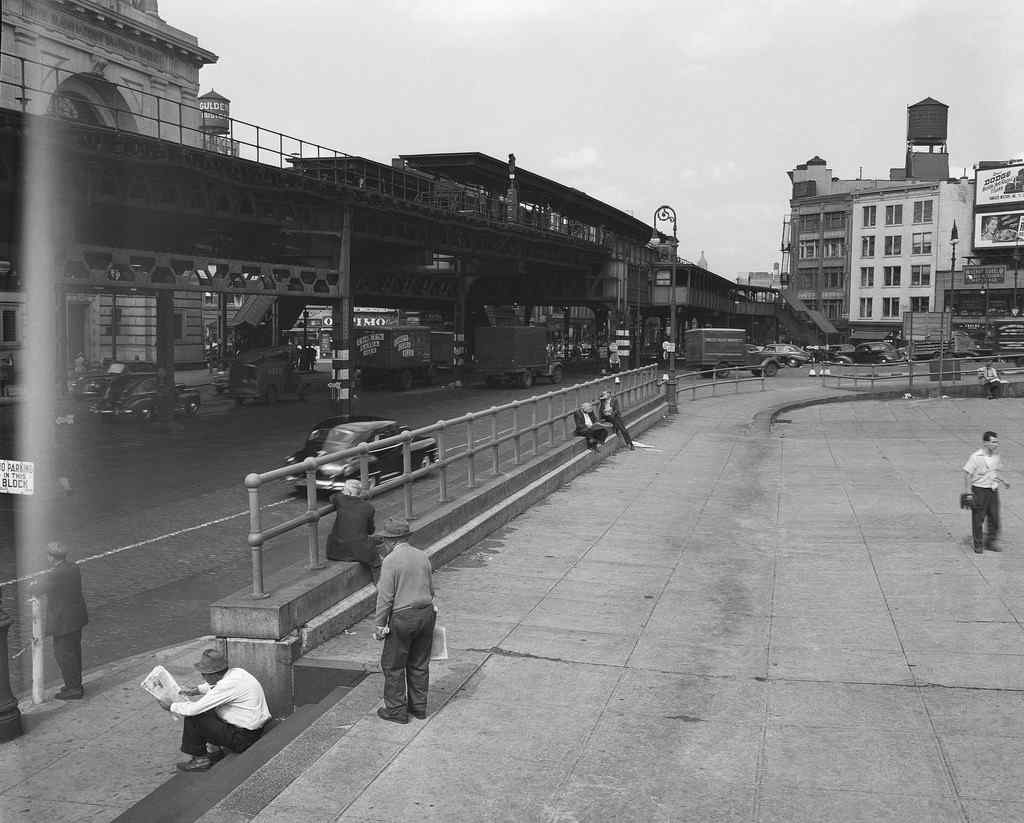
69. A man takes a nap on the ground in New York, July 17, 1948
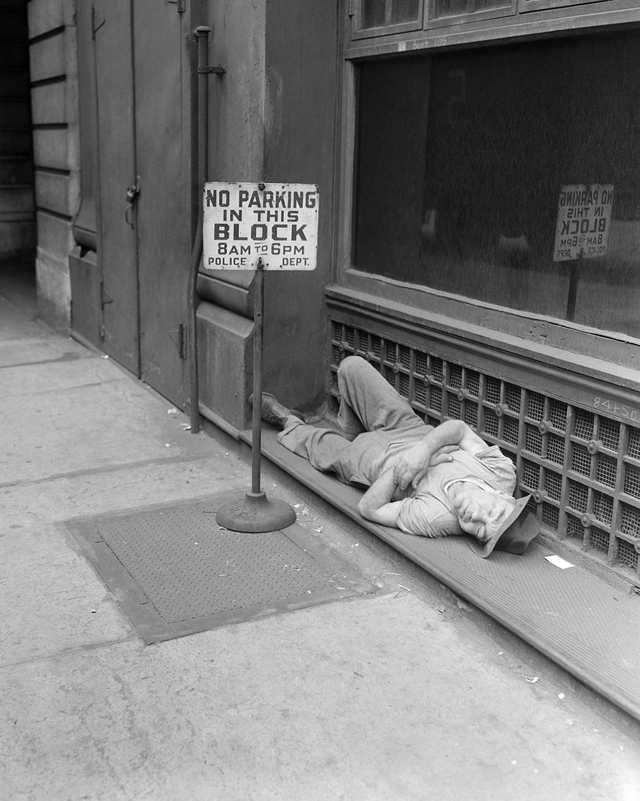
70. Early morning in the Fulton Fish Market, New York City’s wholesale fish center, on Sept. 5, 1948
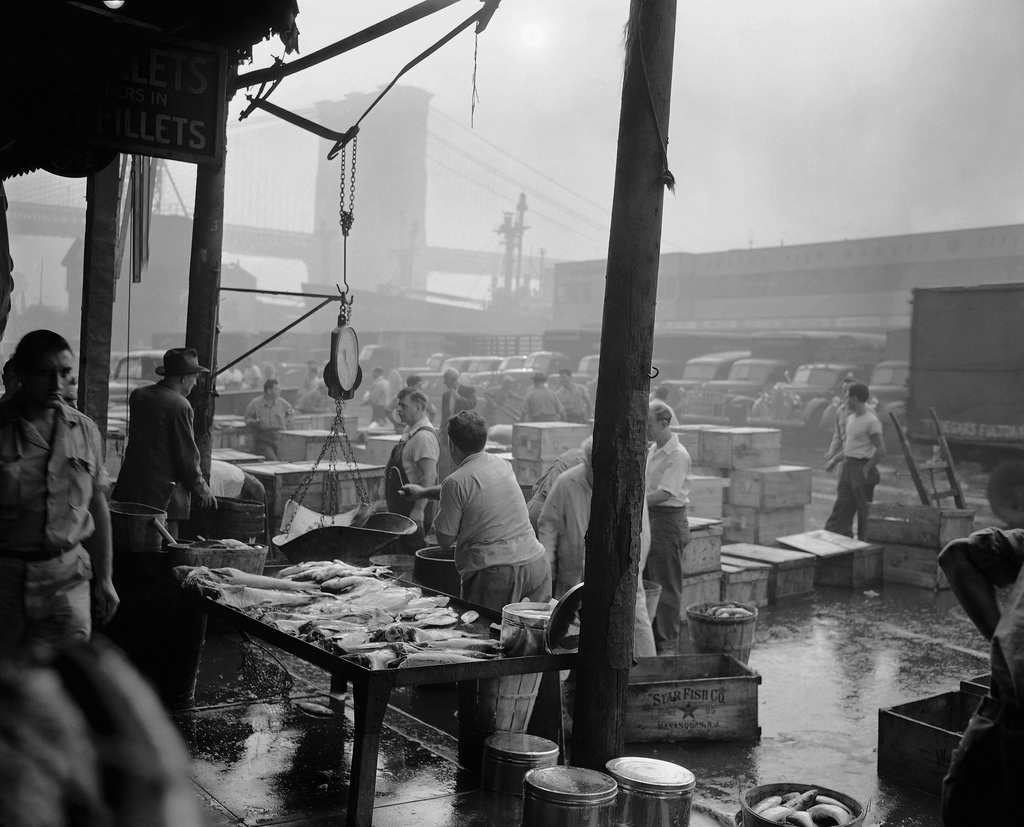
71. Police and pickets scuffle at the entrance of the New York Stock Exchange at 11 Wall Street in New York, March 30, 1948
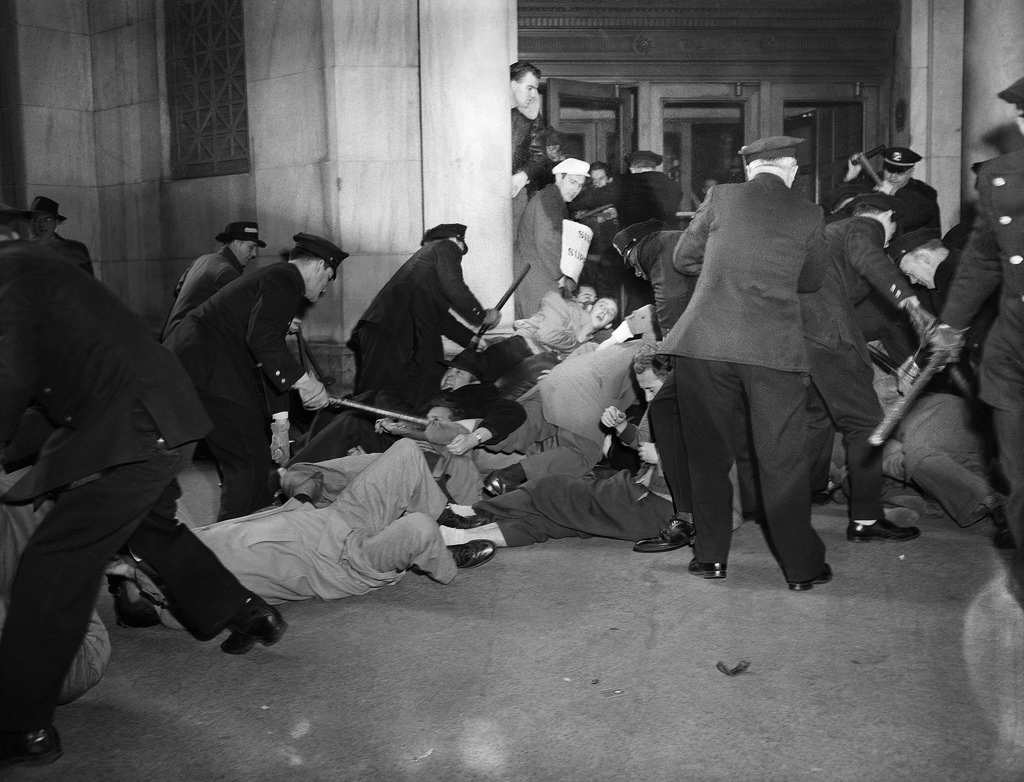
72. A young boy makes a chalk drawing on the sidewalk in front of a tenement house on 36th Street, NYC, May 12, 1948
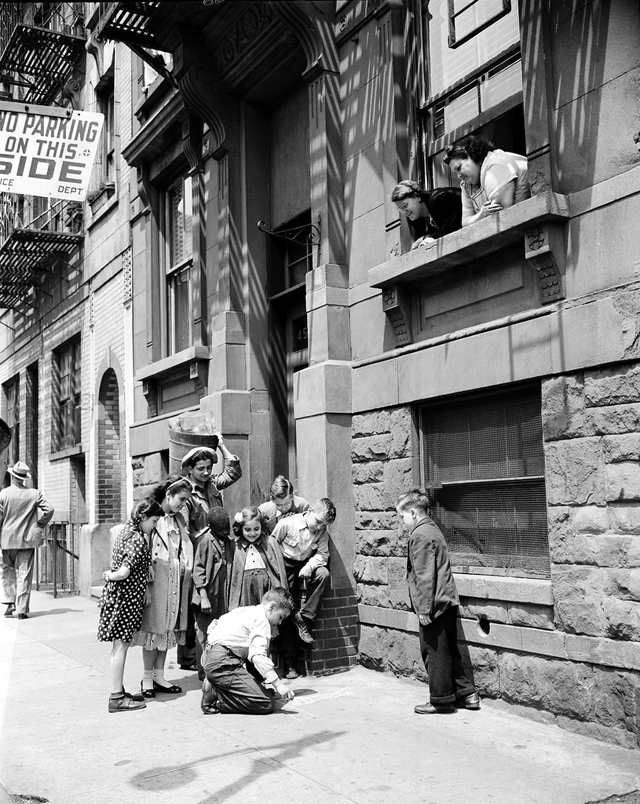
73. A shopkeeper in his shoe sales and repair shop in the East Bronx, 1948
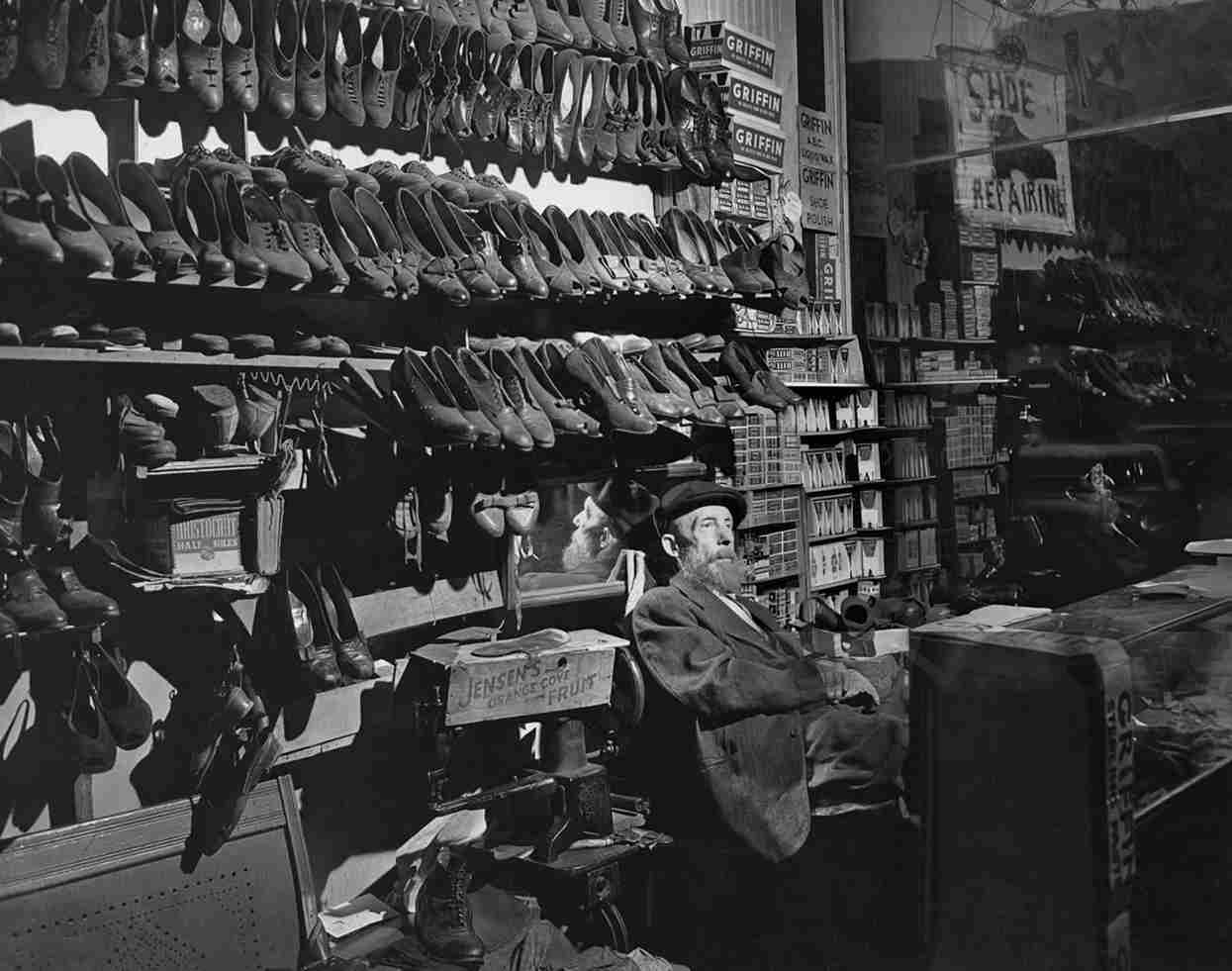
74. A pretzel vendor displays his wares on an approach to the Manhattan Bridge in New York City, April 29, 1948
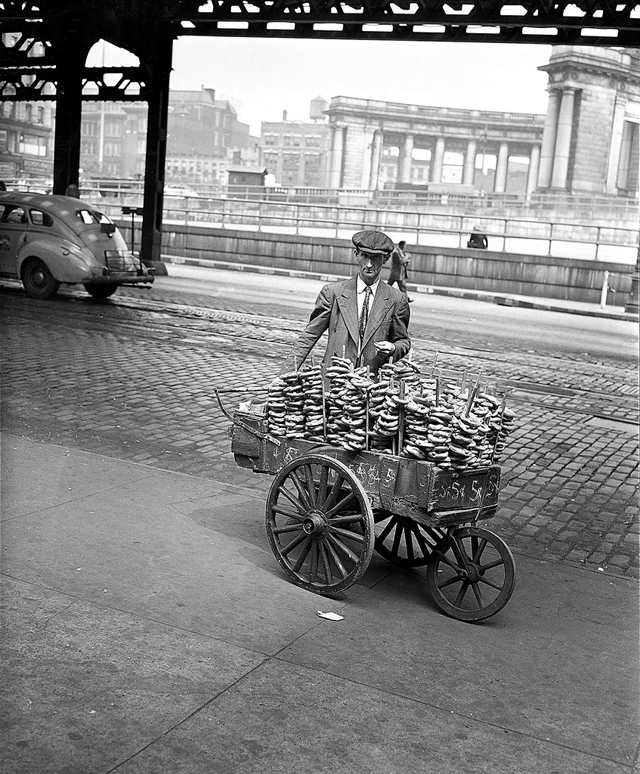
75. A huge balloon in the form of comic fireman floats over Broadway during the annual Macy’s Thanksgiving Day Parade in New York, Nov. 25, 1948
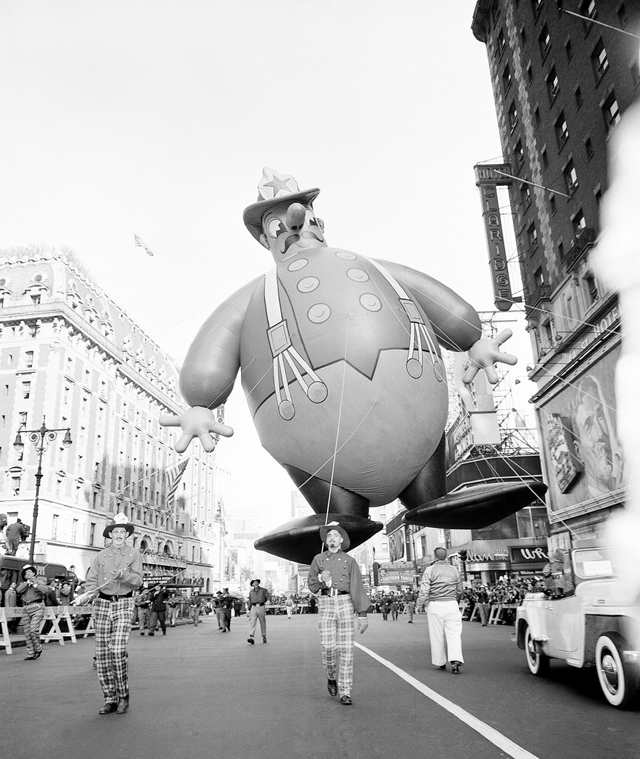
76. Fans line up outside Yankee Stadium to pay respects to Babe Ruth, lying in state 1948
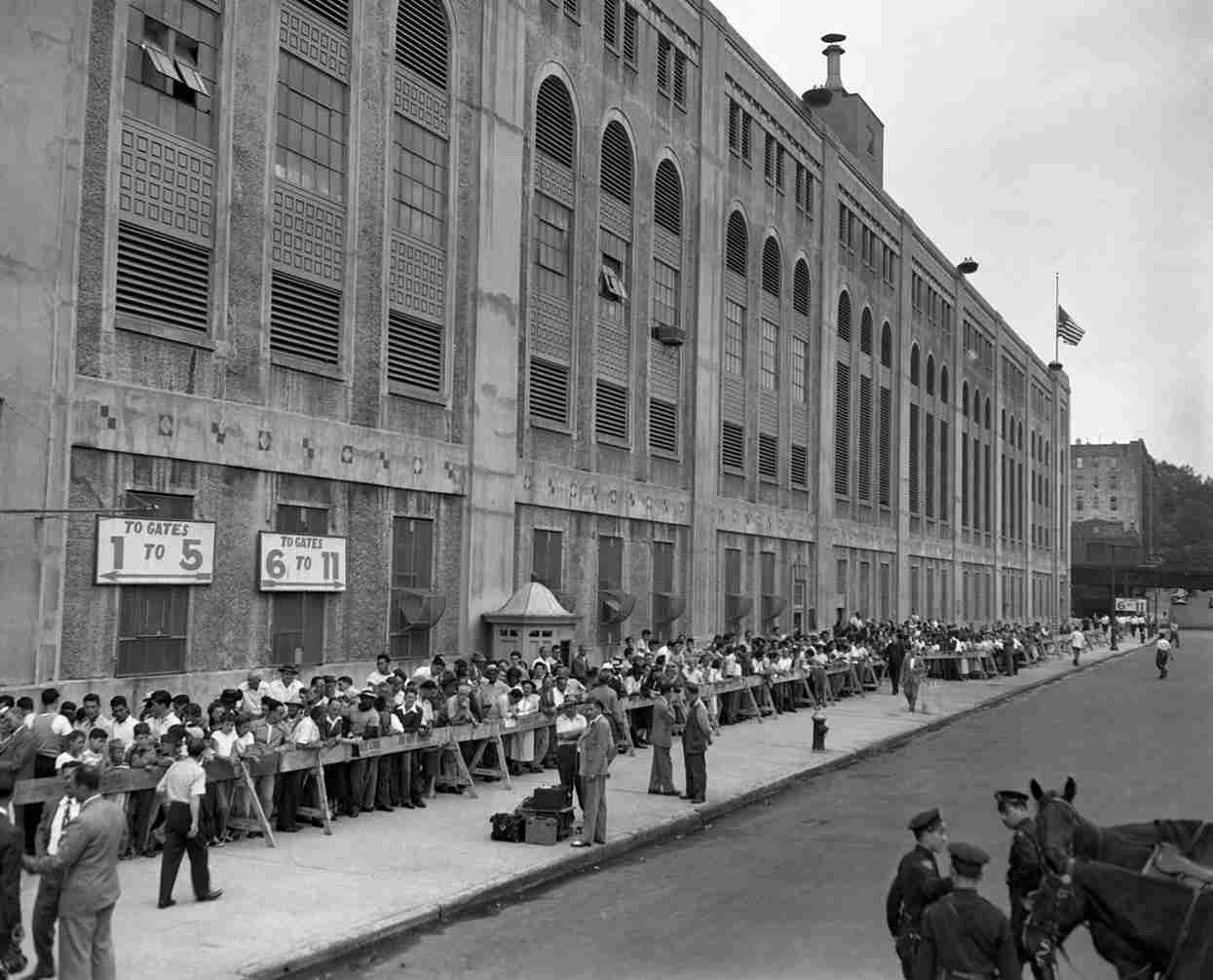
77. The crowded beach at Coney Island in Brooklyn, Aug. 28, 1948
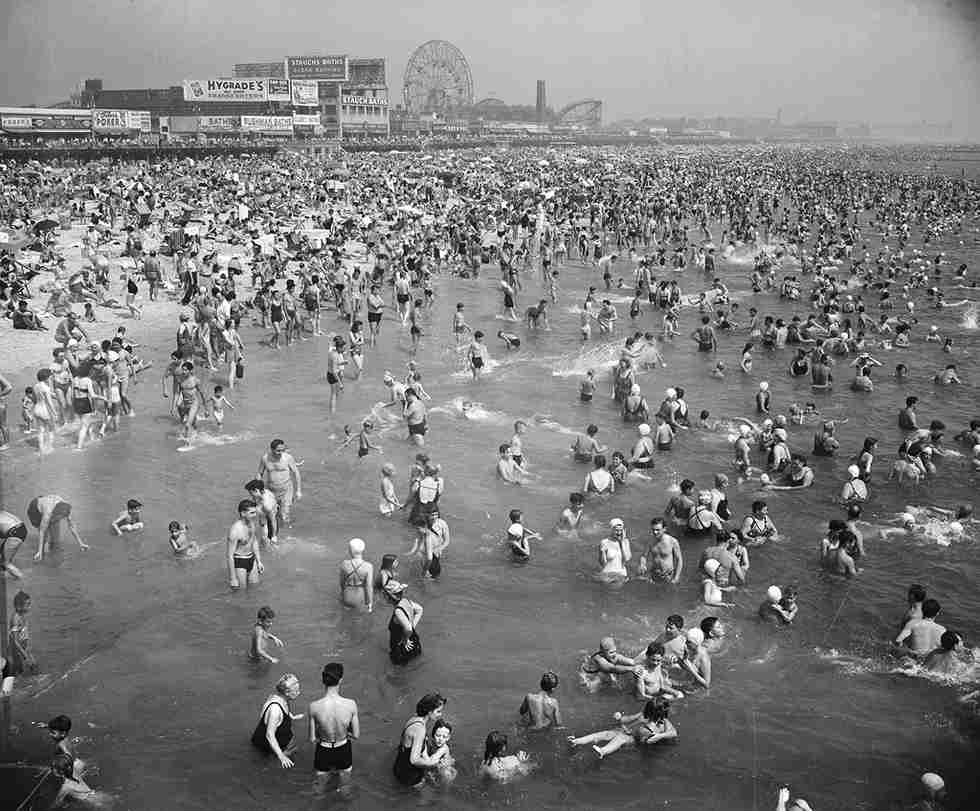
78. People crowd into Times Square in New York on Dec. 31, 1949, to welcome the New Year
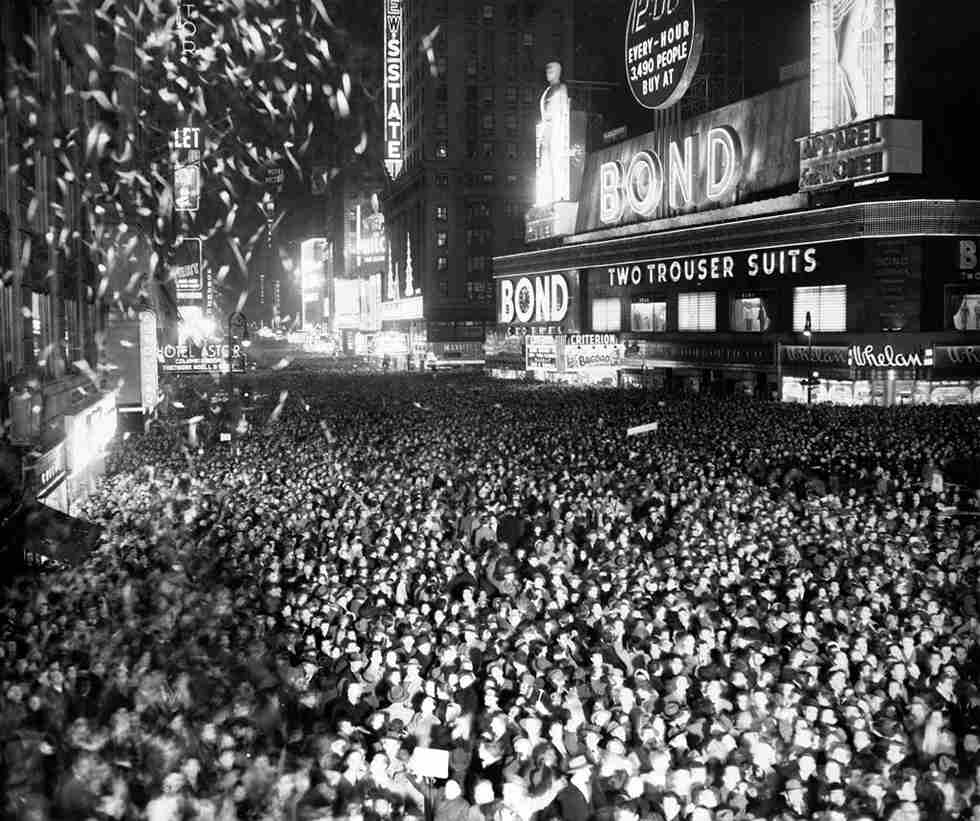
79. When day is done in Brooklyn (boys in advertisement-covered subway car filled with passengers), 1949
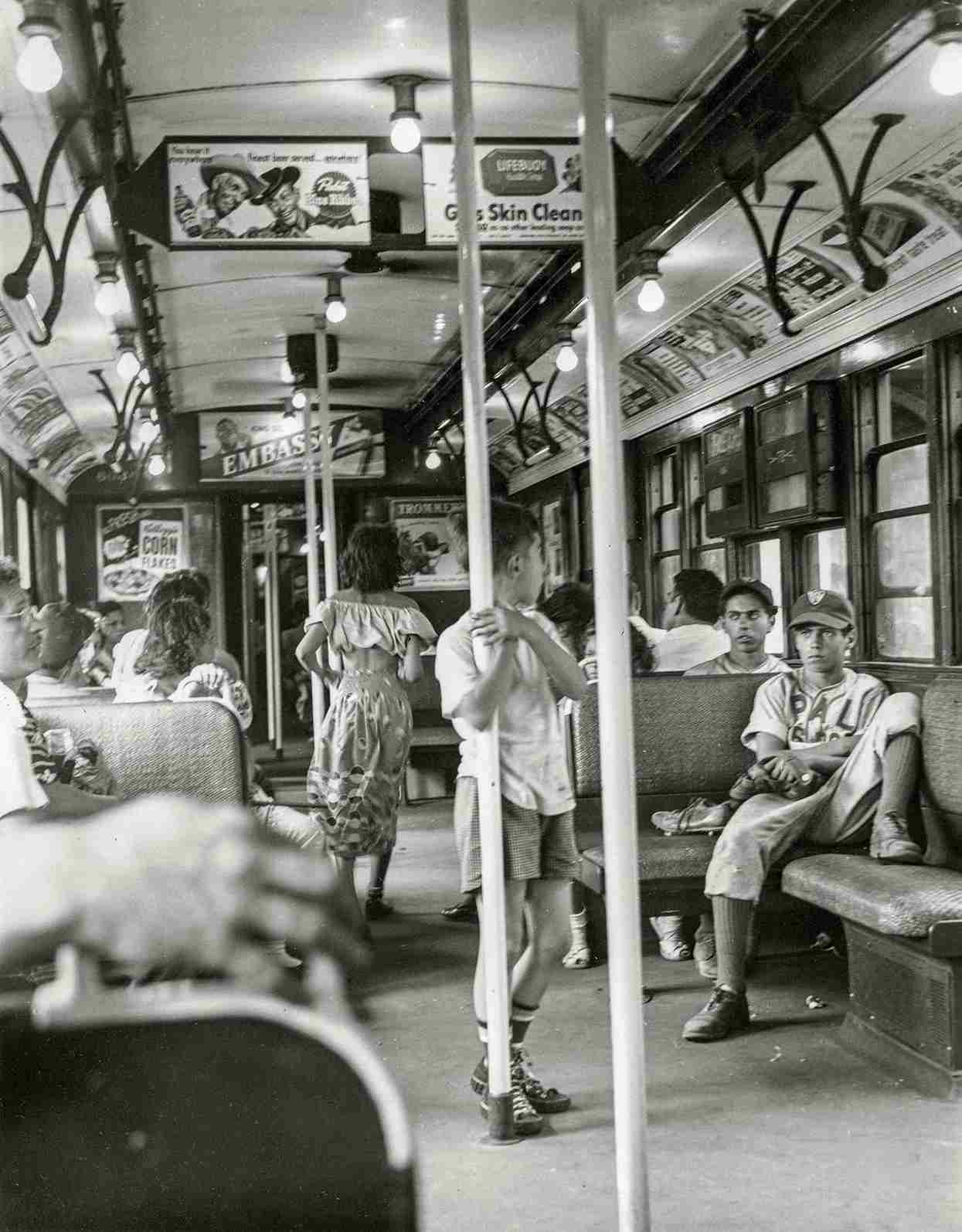
80. New York City Police Department Mounted Unit on Broadway, Manhattan, 1949
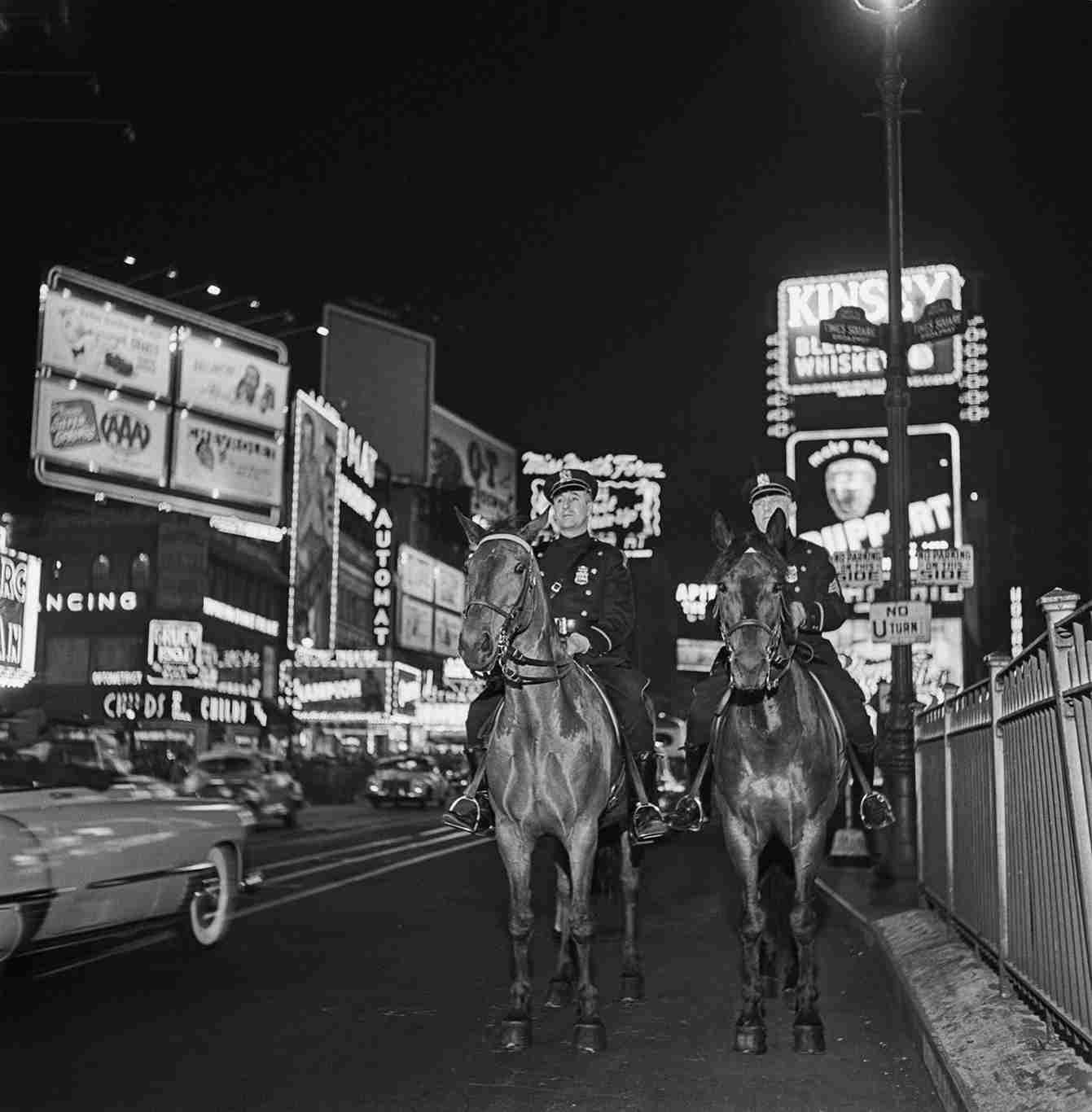
81. Barton’s, business at 790 Flatbush Avenue, Brooklyn, 1949

82. Yellow cabs line New York’s Fifth Avenue, Jan. 15, 1949
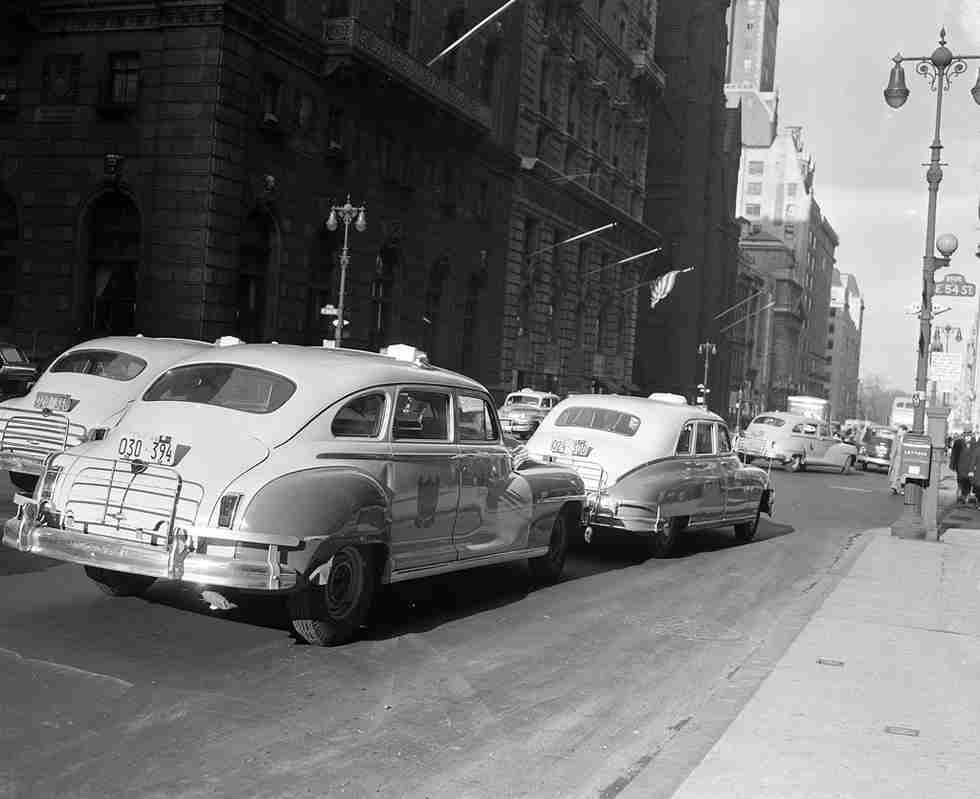
83. Skaters glide on the ice at the center’s skating rink in midtown Manhattan, New York, Dec. 8, 1949
